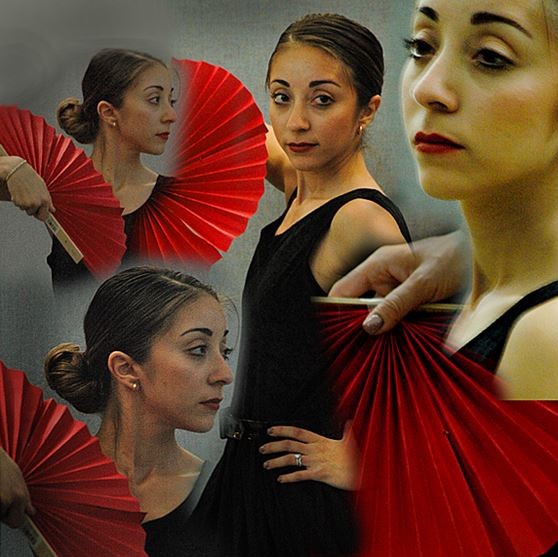| Click here to view 2025 |
| Click here to view 2024 |
| Click here to view 2023 |
| You are currently viewing 2022 |
| Click here to view 2021 |
| Click here to view 2020 |
| Click here to view 2019 |
| Click here to view 2018 |
Cedar City Library's flagship art program, "Character Sketches," is now in its fifth year. This year "Character Sketches" is inspired by iconic art pieces as well as familiar historical and contemporary images of art, culture, and events. Programs will not follow historical order. One week we may try to bring Gilgamesh to life. The next week we could celebrate Woodstock or the iconic Farrah Fawcett poster from 1976. We'll span time. From the Bust of Nefertiti, 1345 BC, to the modern entertainment industry.
Costumes for models will be character appropraite but models are always draped.
Please check our Facebook and Instagram sites for upcoming characters.
 |
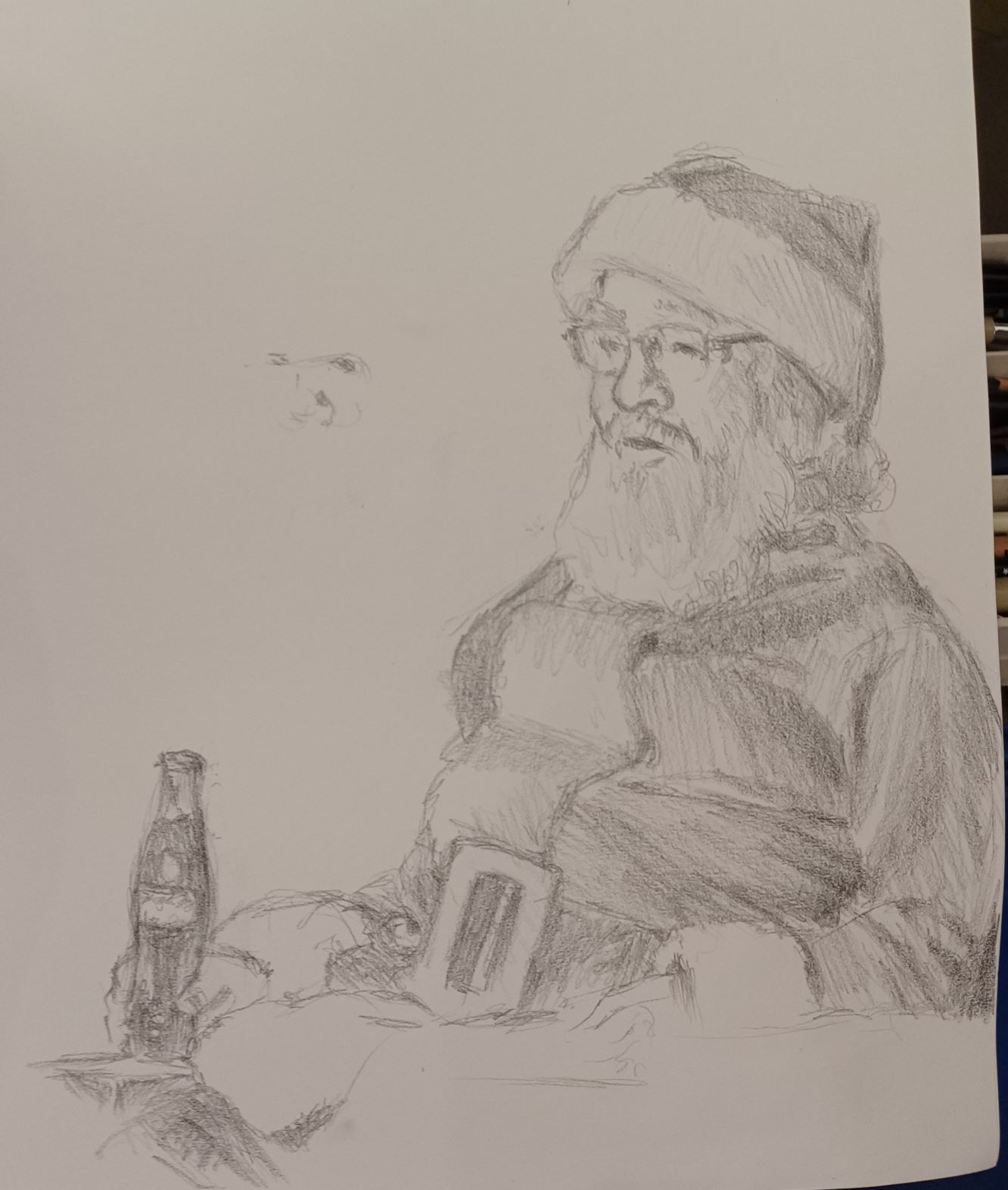 |
Coca-Cola did not create the legend of Santa Claus. But Coca-Cola advertising did play a big role in shaping the jolly character we know today. Before 1931, there were many different depictions of Santa Claus around the world, including a tall gaunt man and an elf —there was even a scary Claus. But in 1931, Coca-Cola commissioned illustrator Haddon Sundblom to paint Santa for Christmas advertisements. Those paintings established Santa as a warm, happy character with human features, including rosy cheeks, a white beard, twinkling eyes and laughter lines. |
 |
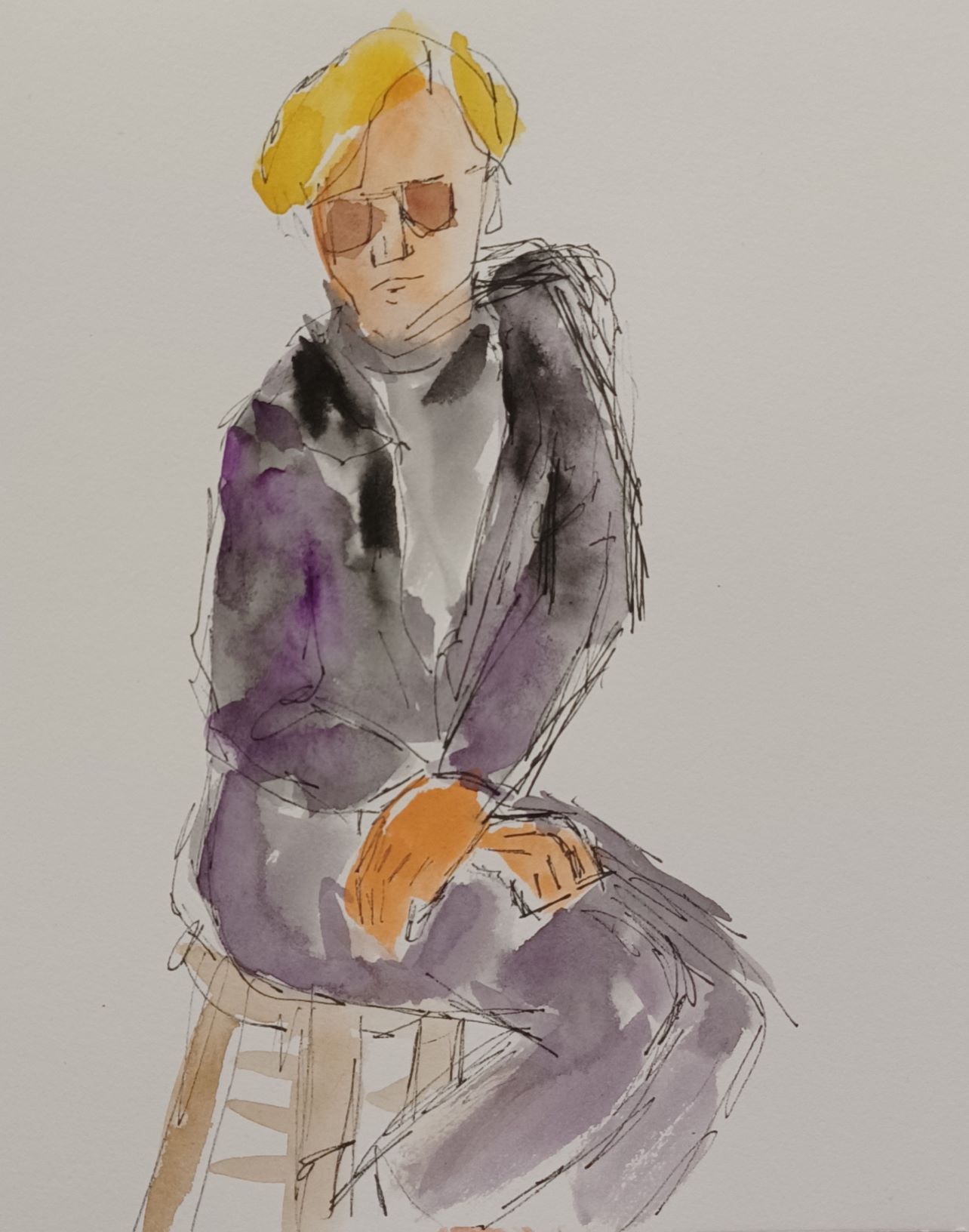 |
Andy Worhol, 1928-1987. An American visual artist, film director, and producer who was a leading figure in the visual art movement known as pop art. His works explore the relationship between artistic expression, advertising, and celebrity culture that flourished by the 1960s, and span a variety of media, including painting, silkscreening, photography, film, and sculpture. Some of his best-known works include the silkscreen paintings Campbell's Soup Cans (1962) and Marilyn Diptych (1962), the experimental films Empire (1964) and Chelsea Girls (1966), and the multimedia events known as the Exploding Plastic Inevitable (1966–67). |
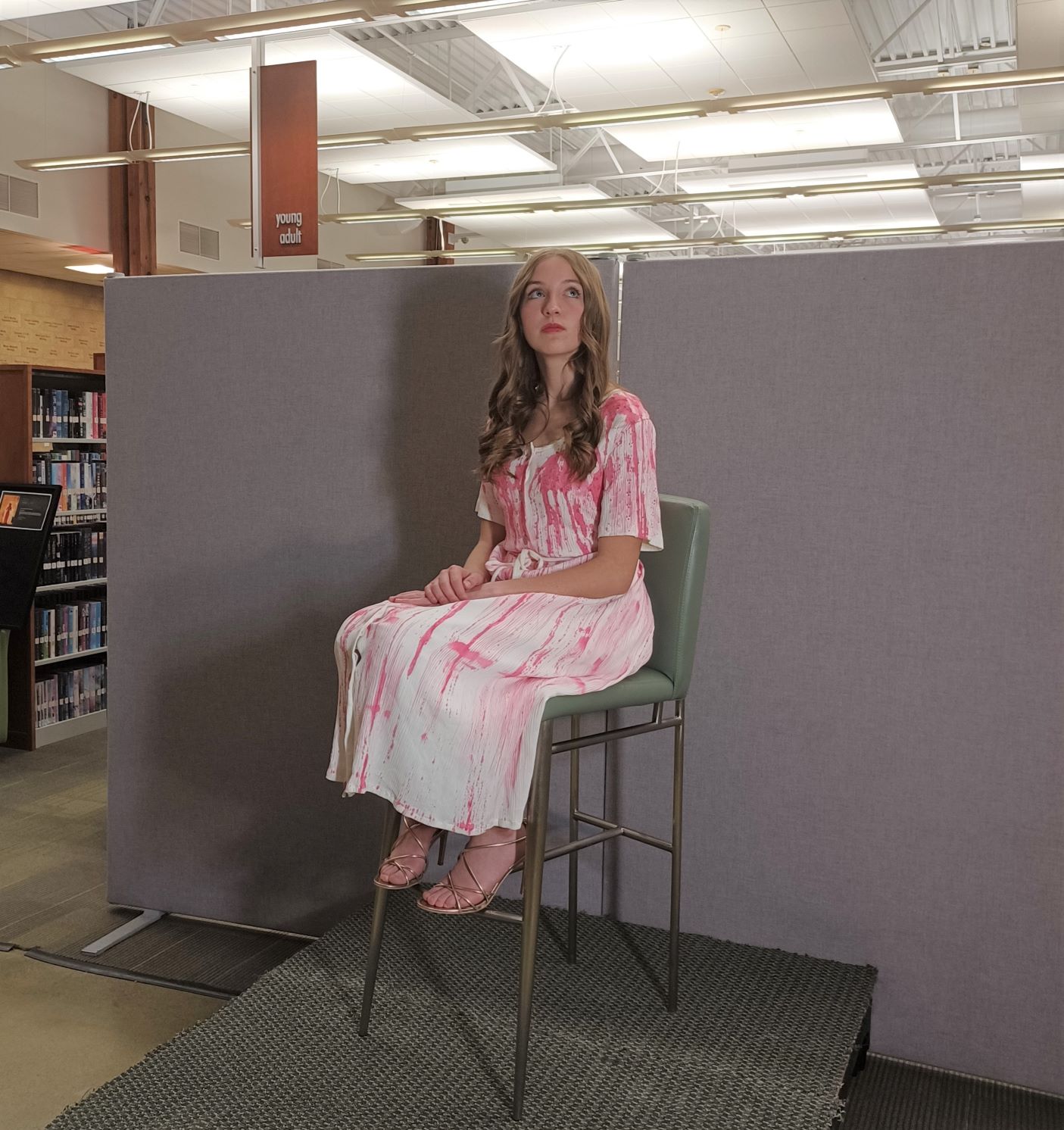 |
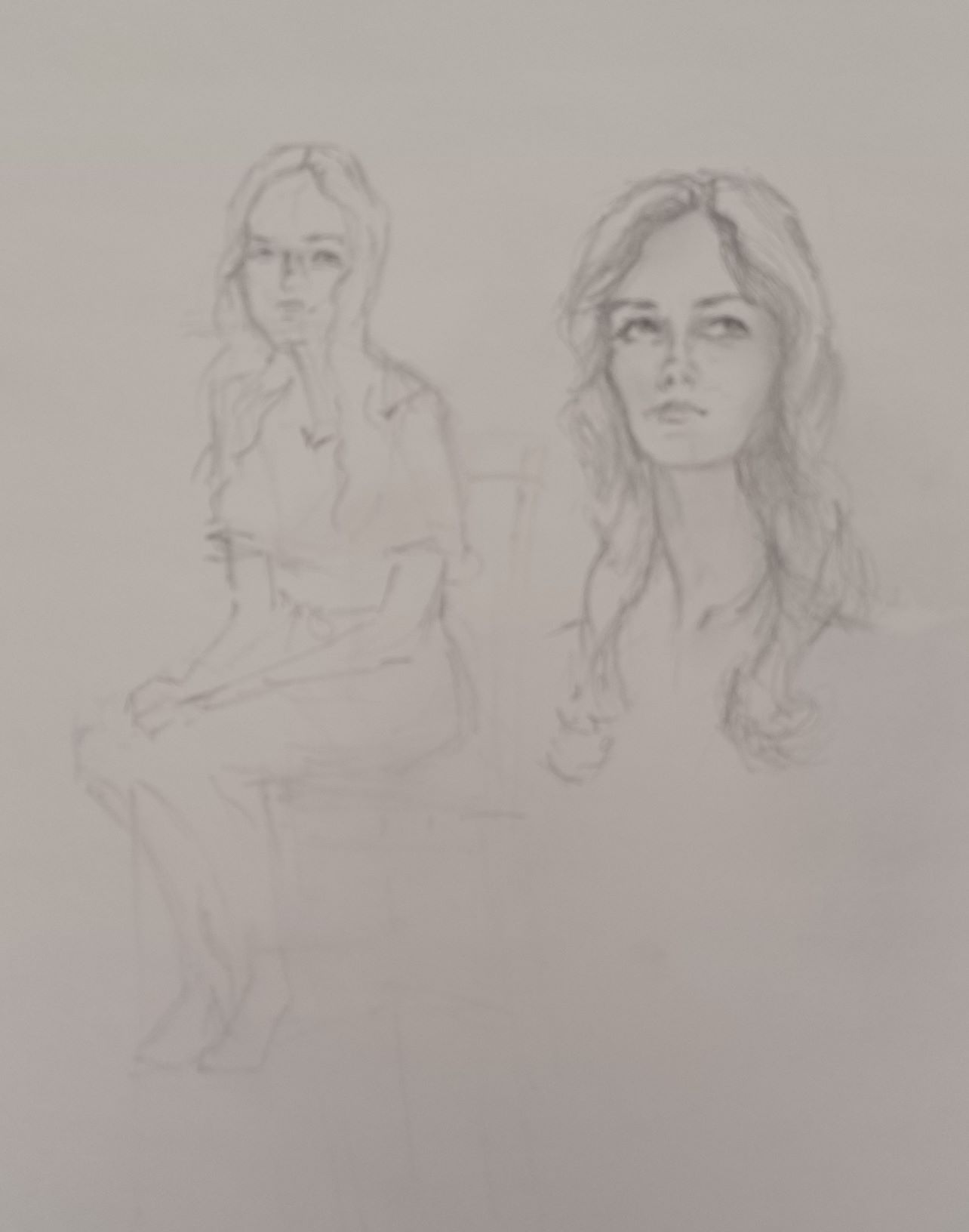 |
Released 1974
|
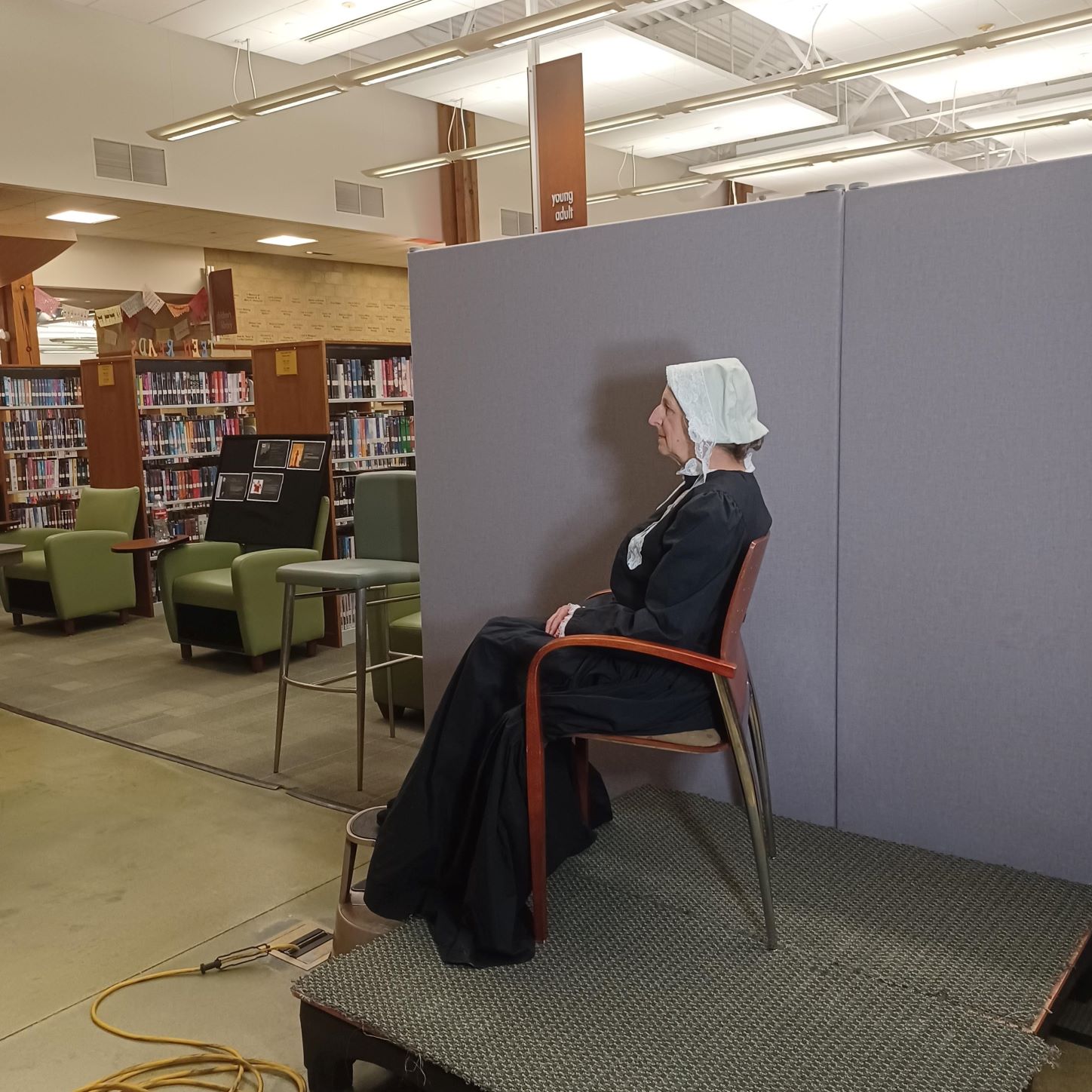 |
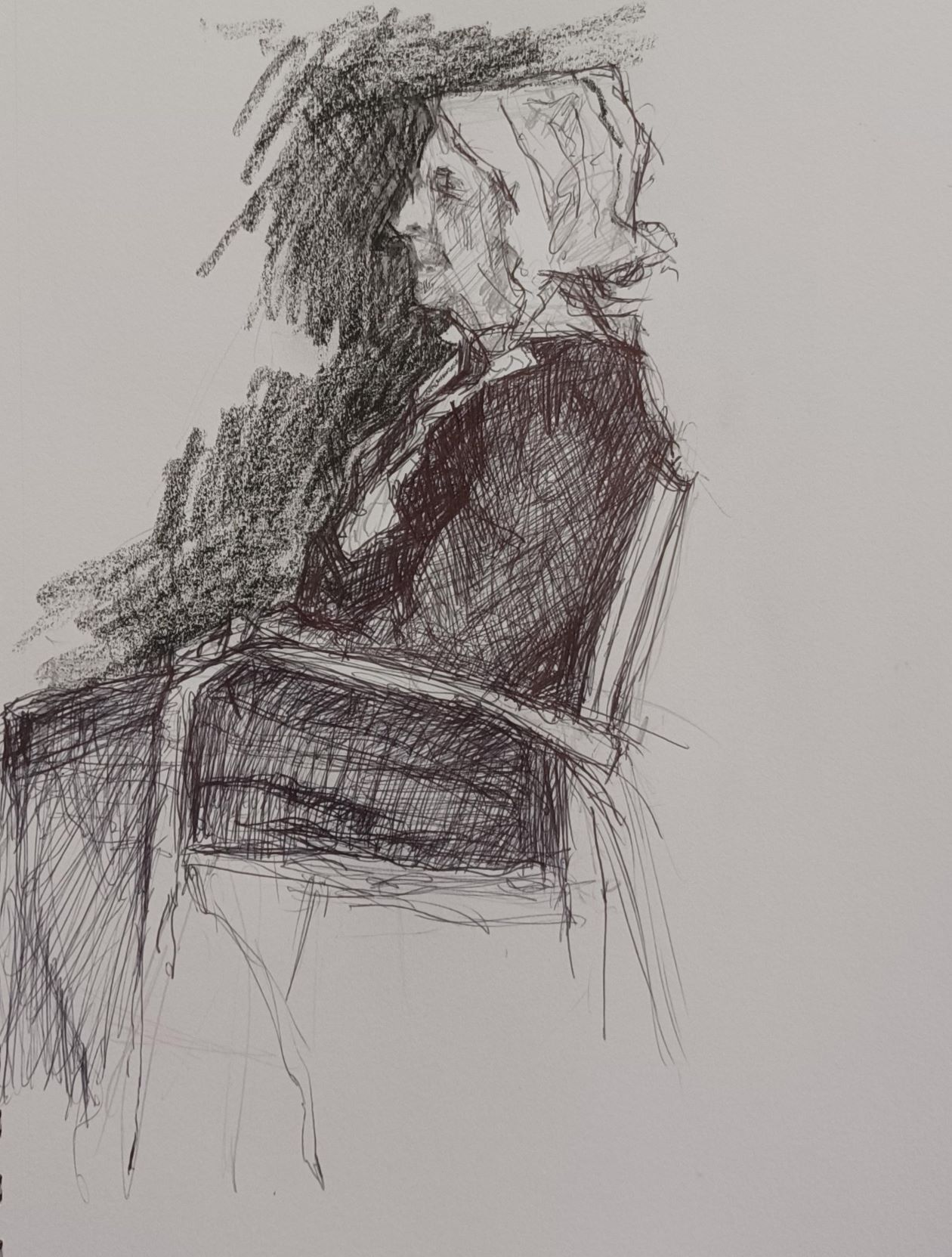 |
Second time we drew Whistler's Mother. We drew this character in July of this year and with vacations and summer schedules, few attendees per present so we kept the costume and rescheduled the character. See also 7.27.2022. |
 |
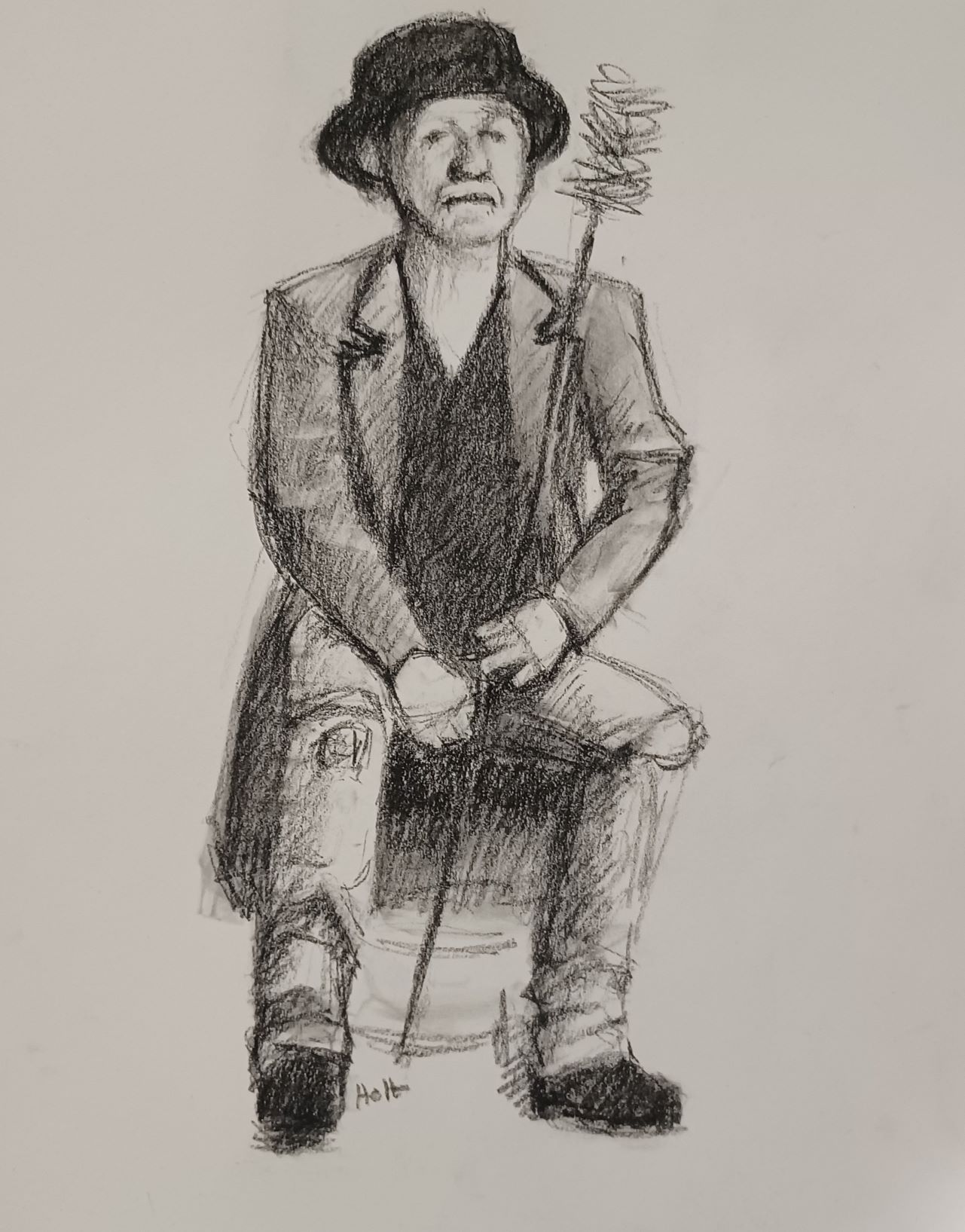 |
In 1582, the Todors in England established the dangers of chimneys and created an ordinance controlling the materials chimneys were made of and requiring them to be swept four times a year. The increased urban population with the age of industrailization caused the need for chimney sweep services to spike. Today, chimney sweeps are still necessary for maintaining venting systems and they even still use the standard brush along with newer tools like vacuums and cameras. |
 |
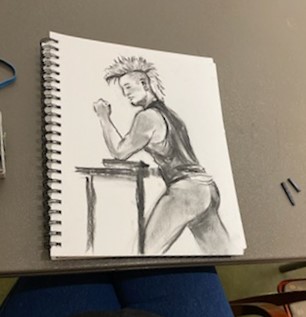 |
The origins of arm wrestling can be traced back to 2000 BC ancient Egypt where a painting in a tomb depicts a similar game being played. However, the arm wrestling matched of today started in a saloon in 1852 in Petaluma, CA. |
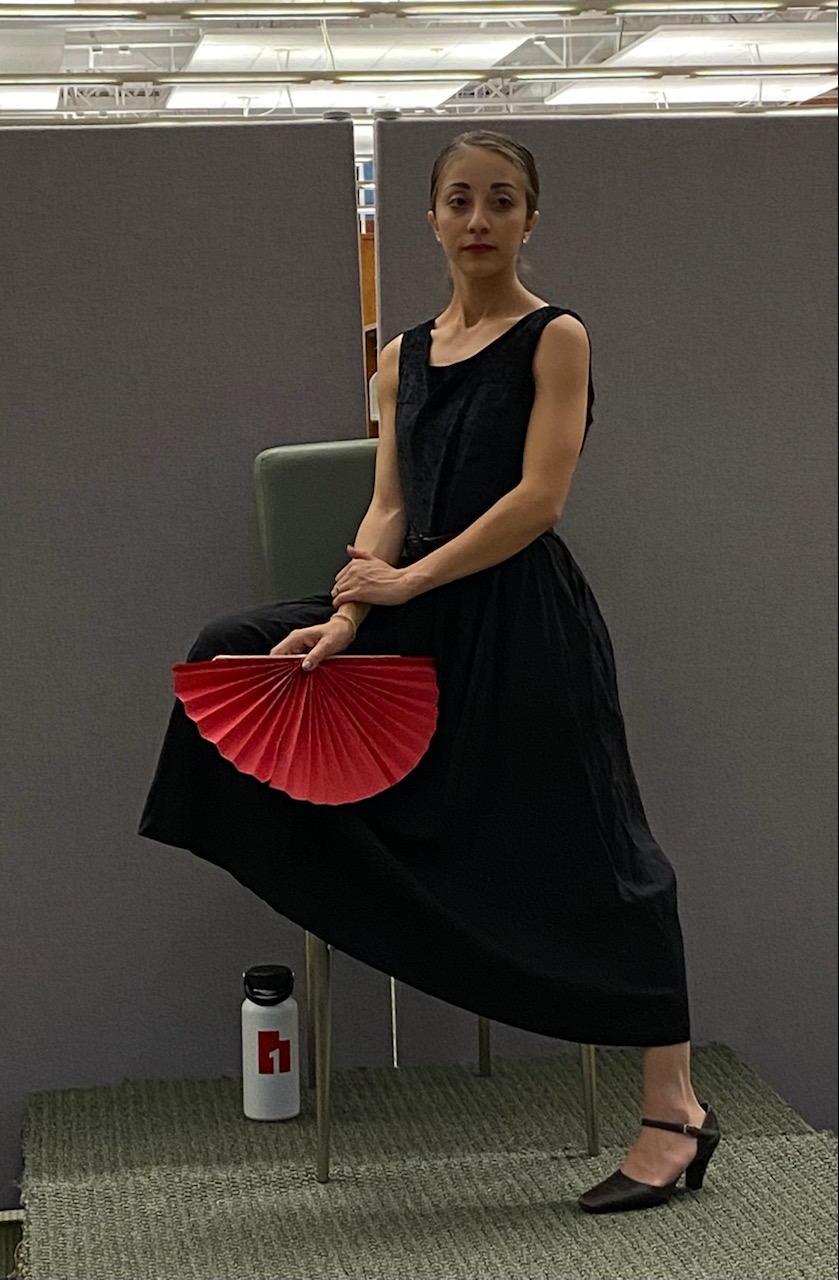 |
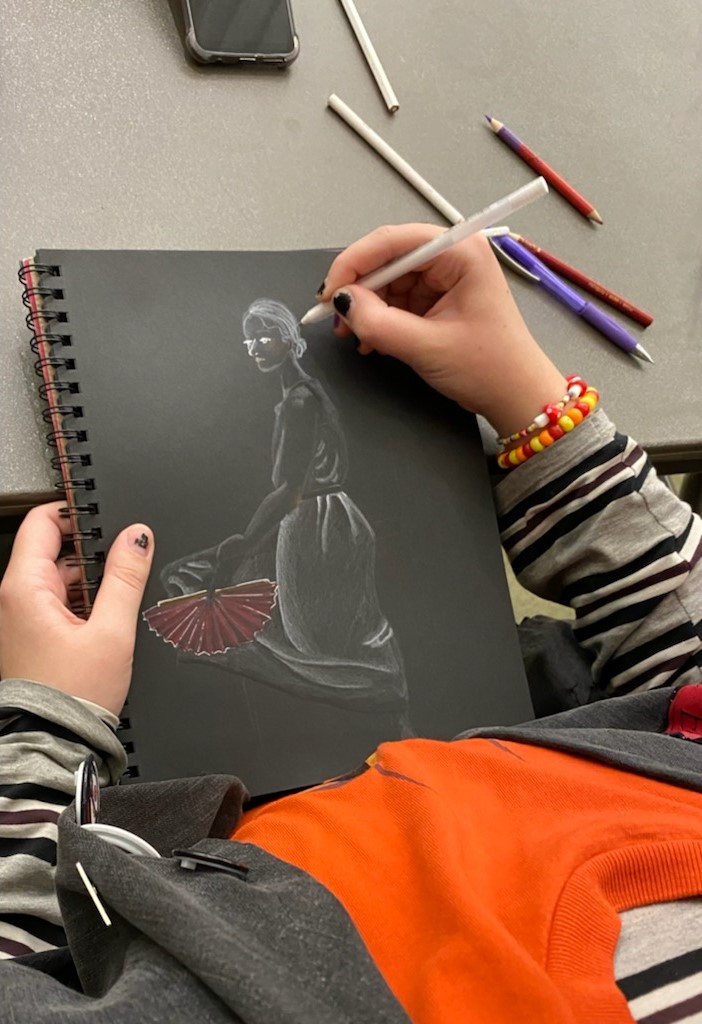 |
Photographers welcome.
|
Fabian Perez, b. 1967. Perez had a difficult childhood. His father was a gambler and owned illegal bordellos and nightclubs. His mother was artistic and encouraged her son to develop his aptitude for art. Perez did not take art classes in school or even finish high school. He currently lives in Los Angles. |
 |
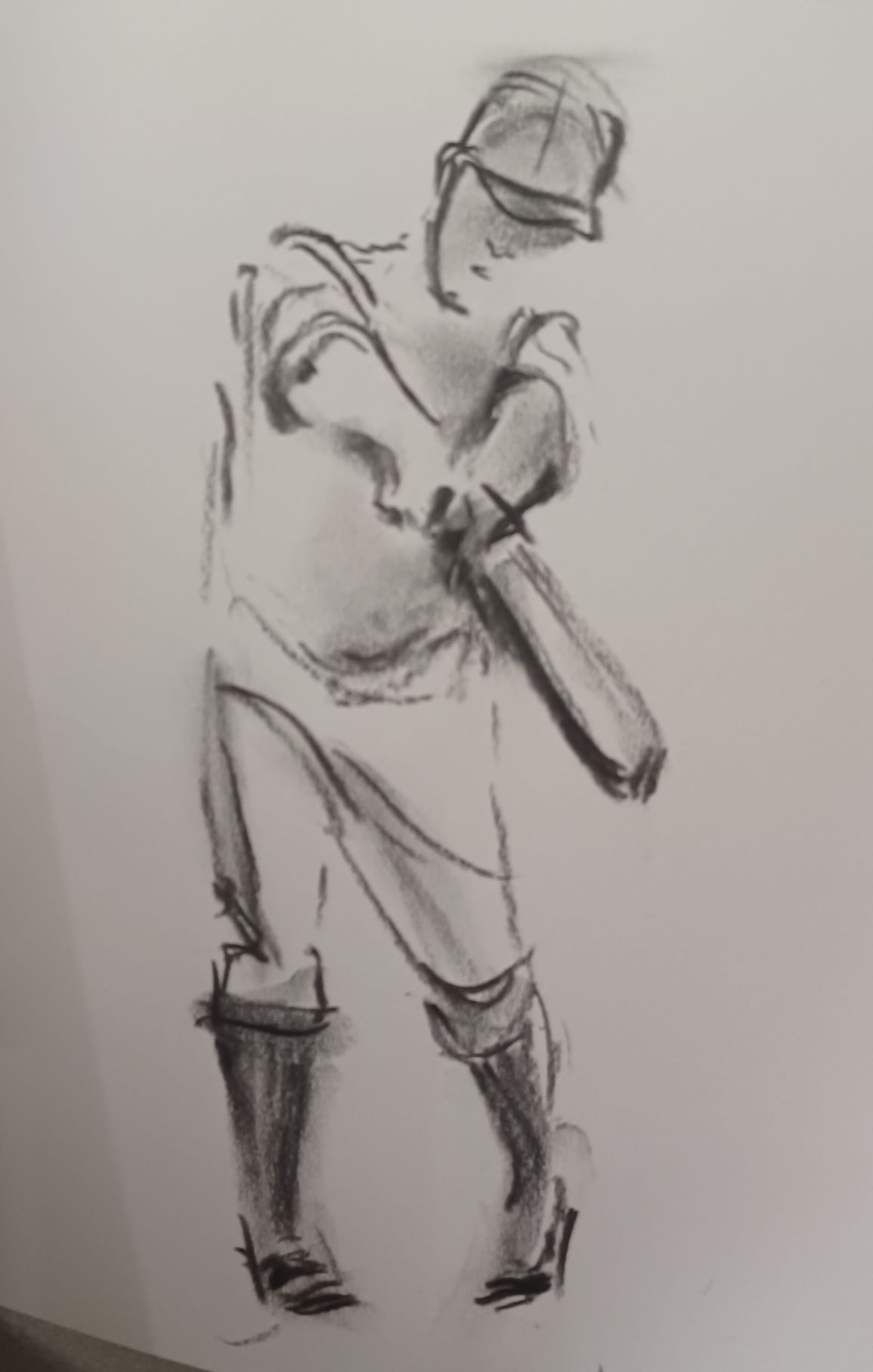 |
Susan Luery was born in Baltimore and attended the Maryland Institute College of Art, but her gift for sculpting was refined in Carrara, Italy. Susan’s visually arresting figurative sculptures can be found in private, public and museum collections throughout the world. Susan is best known for such monumental works as “Babe’s Dream”, the 16-foot sculpture honoring George Herman “Babe” Ruth standing heroically in front of Oriole Park at Camden Yards Stadium in Baltimore, Maryland . The “Babe” is considered to be one of the top ten monumental sports sculptures in the United States. |
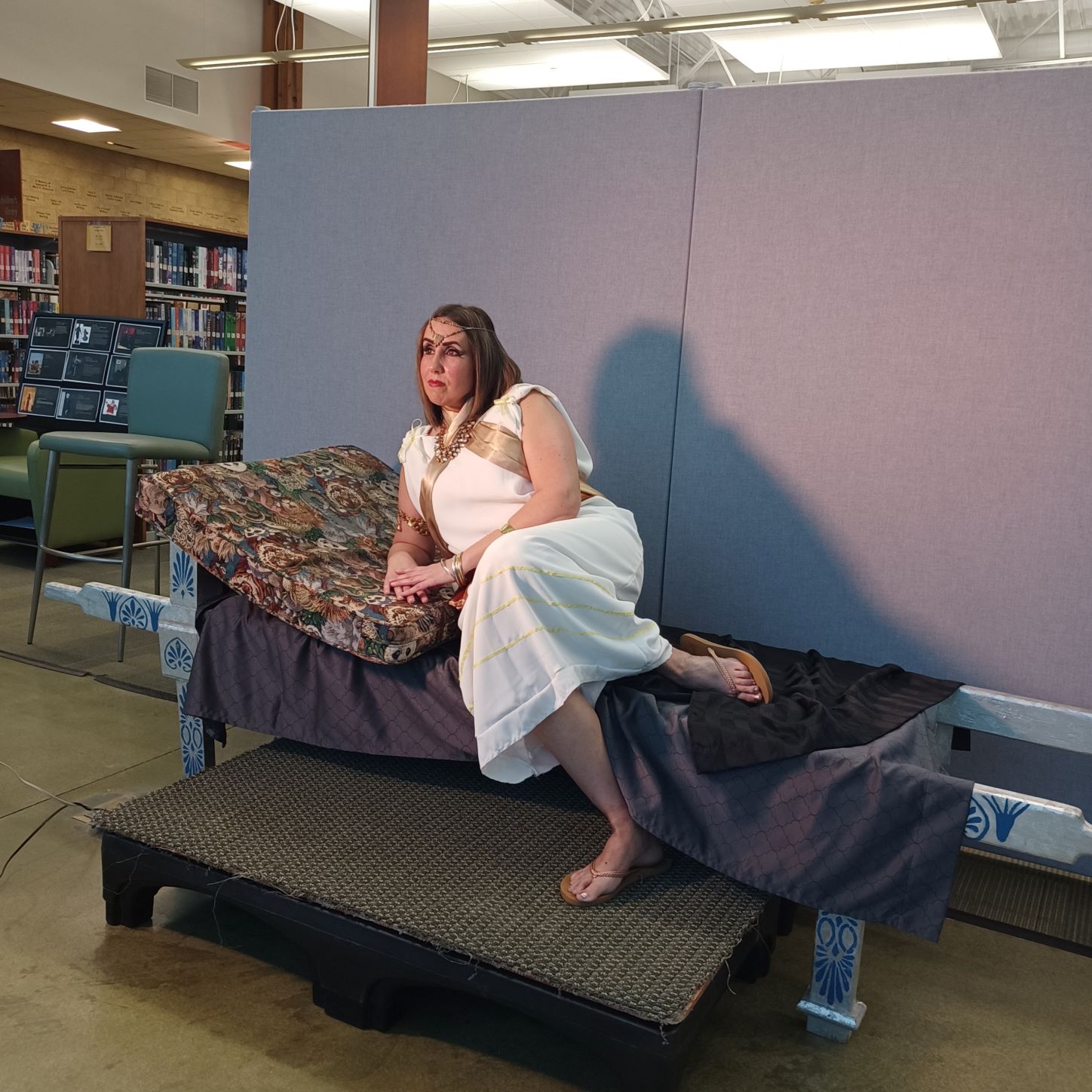 |
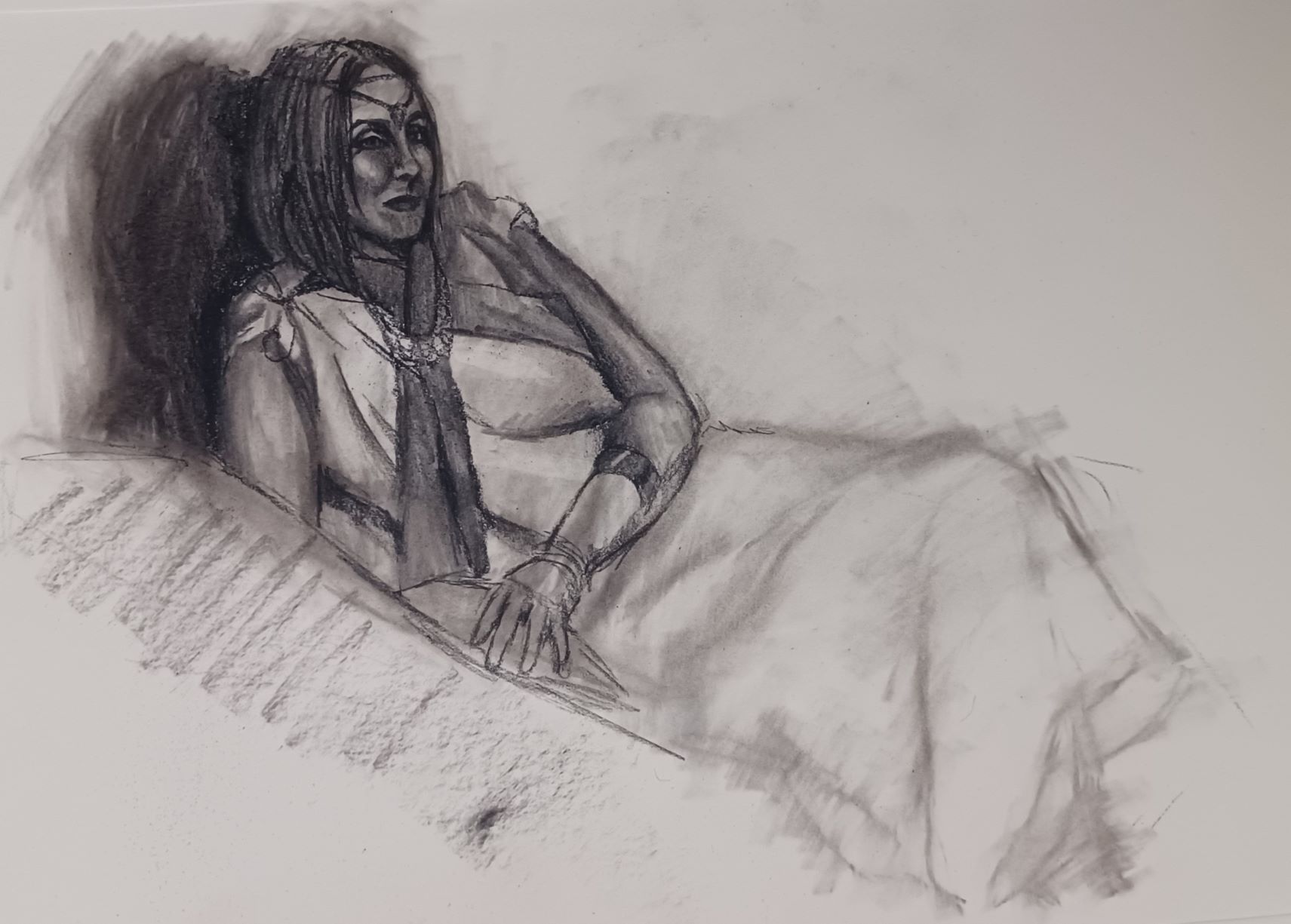 |
Cleopatra VII Philopator (Greek: Κλεοπάτρα Φιλοπάτωρ; 69 BC – 10 August 30 BC) was Queen of the Ptolemaic Kingdom of Egypt from 51 to 30 BC, and its last active ruler. A member of the Ptolemaic dynasty, she was a descendant of its founder Ptolemy I Soter, a Macedonian Greek general and companion of Alexander the Great. After the death of Cleopatra, Egypt became a province of the Roman Empire, marking the end of the second to last Hellenistic state and the age that had lasted since the reign of Alexander (336–323 BC). Her native language was Koine Greek, and she was the only Ptolemaic ruler to learn the Egyptian language. |
 |
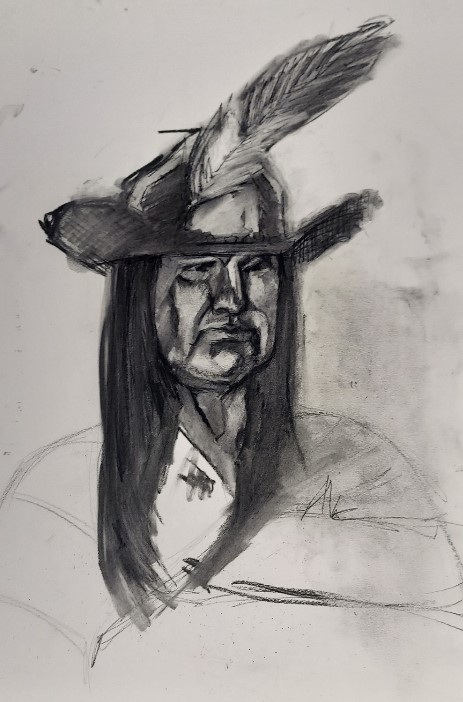 |
Sharp undertook a remarkable, life-long quest to venture west in search of unexplored places, subjects, and insights. Sharp’s enduring vision was subsumed in a life in art among people whom he recognized as the “real Americans” and began in earnest when, around 1899, he came to the realization that “The Indian is becoming a factor for distinctly American pictures.” Using first-hand experience, Sharp set himself apart from his contemporaries. As one critic noted in 1908, “Mr. Sharp has succeeded in doing what few white men have done – getting an insight into the real home life of the Indian. His Indians are not the austere, mock-heroic types that are painted by artists who work chiefly from imagination.” |
 |
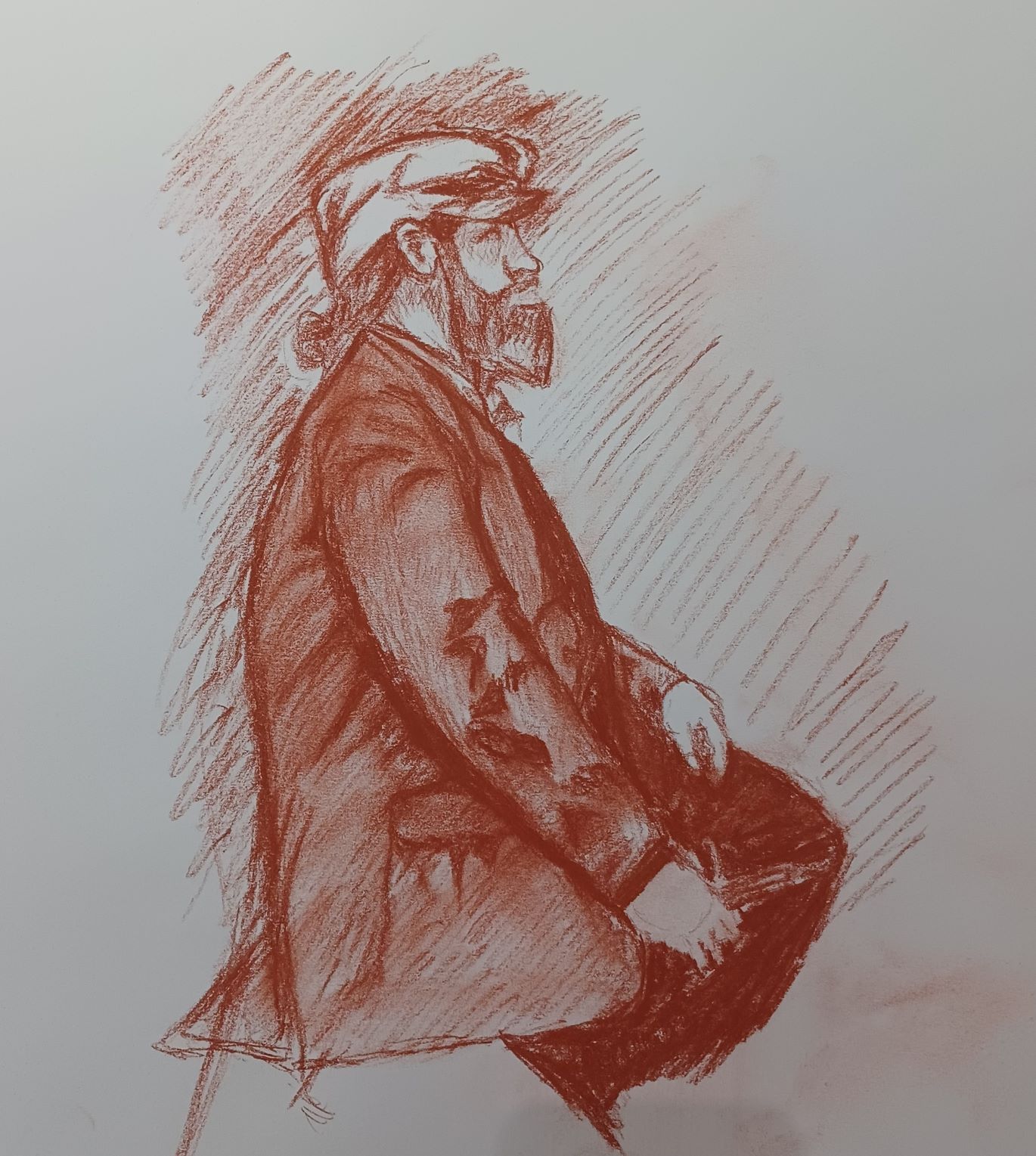 |
Claude Monet, 1840-1926. Monet depicts himself wearing a black beret and a grey coat over a white shirt, against a predominantly blue background. His gaze is slightly off centre, not quite meeting the viewer's eye. The left side of his face and forehead is highlighted and there is a distinct twinkle in his eyes, despite the serious expression represented by a slightly furrowed brow. |
| No photos of the model are currently available. |
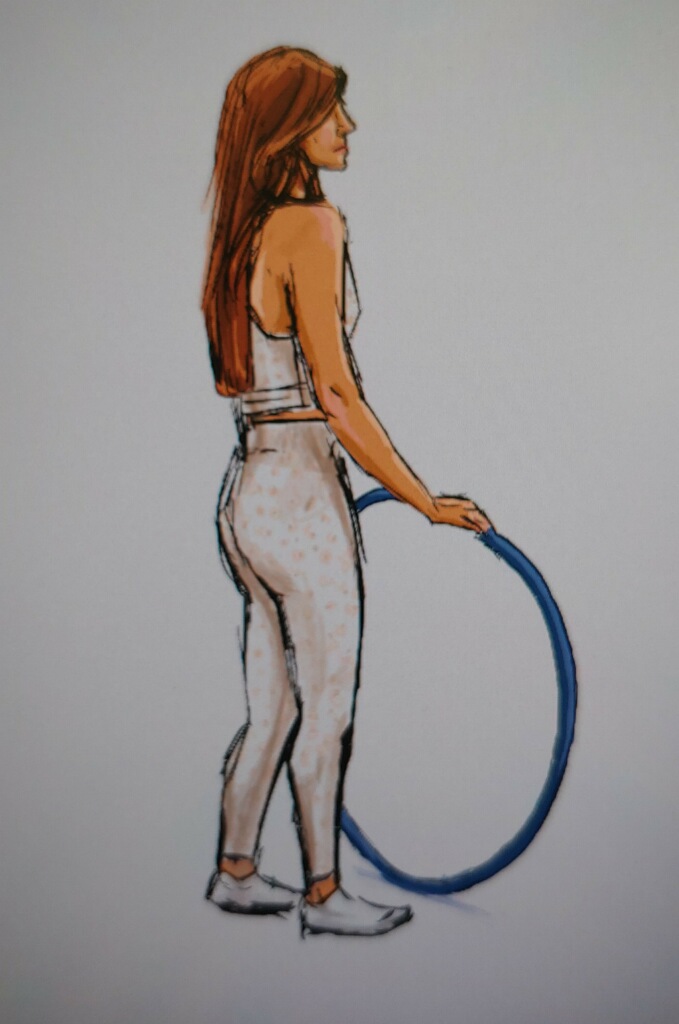 |
Cirque du Soleil, 1984-present. Cirque du Soleil, "Circus of the Sun" or "Sun Circus," is a Montreal-based entertainment company and the largest contemporary circus producer in the world. Located in the inner-city area of Saint-Michel, it was founded in Baie-Saint-Paul on 16 June 1984 by former street performers Guy Laliberté and Gilles Ste-Croix. |
 |
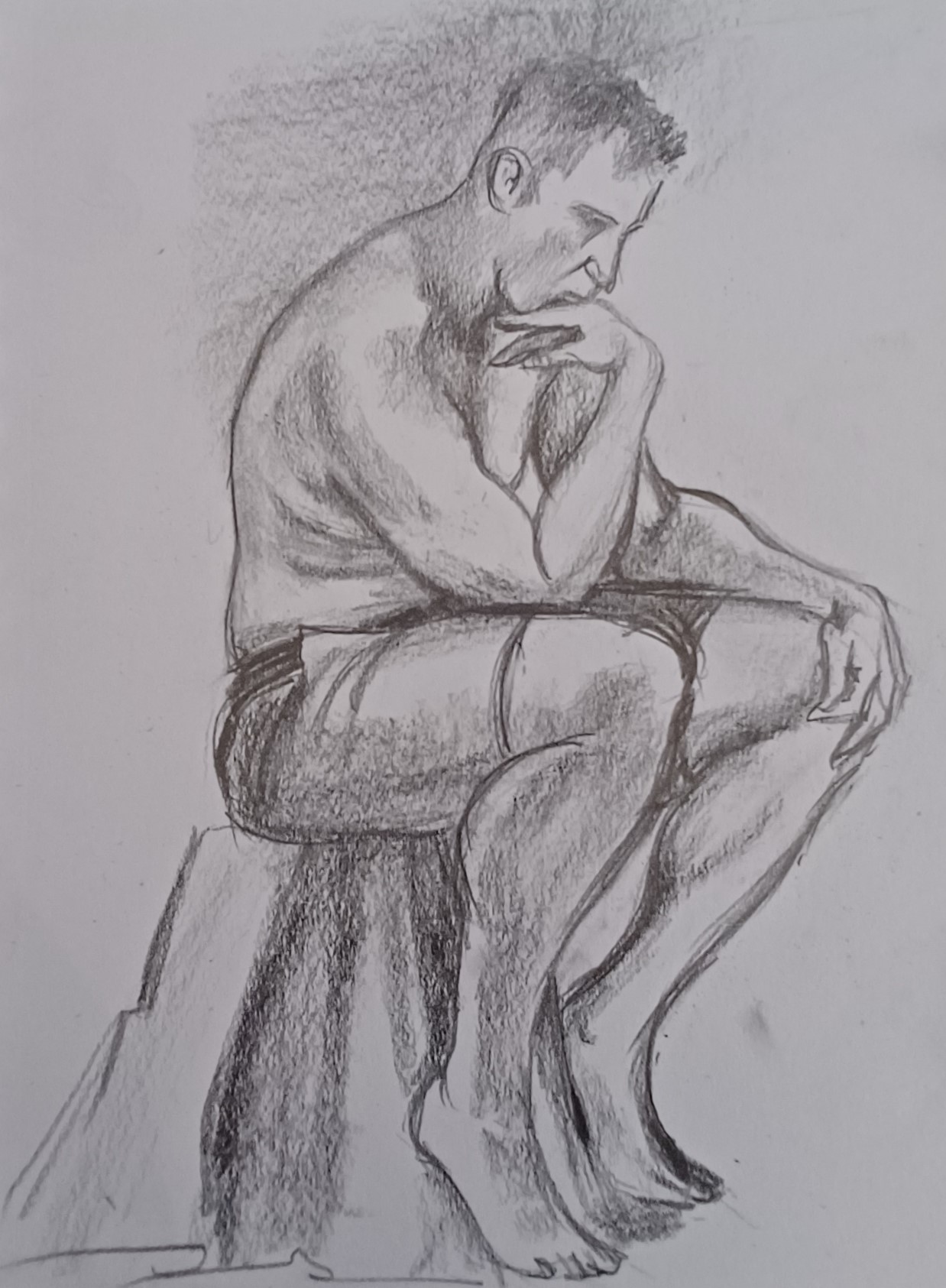 |
The Thinker, French Le Penseur, sculpture of a pensive nude male by French artist Auguste Rodin, one of his most well-known works. Many marble and bronze editions in several sizes were executed in Rodin’s lifetime and after, but the most famous version is the 6-foot (1.8-metre) bronze statue (commonly called a monumental) cast in 1904 that sits in the gardens of the Rodin Museum in Paris. The large muscular figure has captivated audiences for decades in his moment of concentrated introspection. |
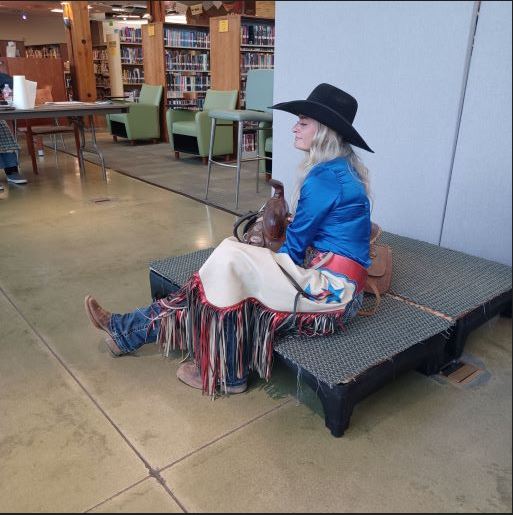 |
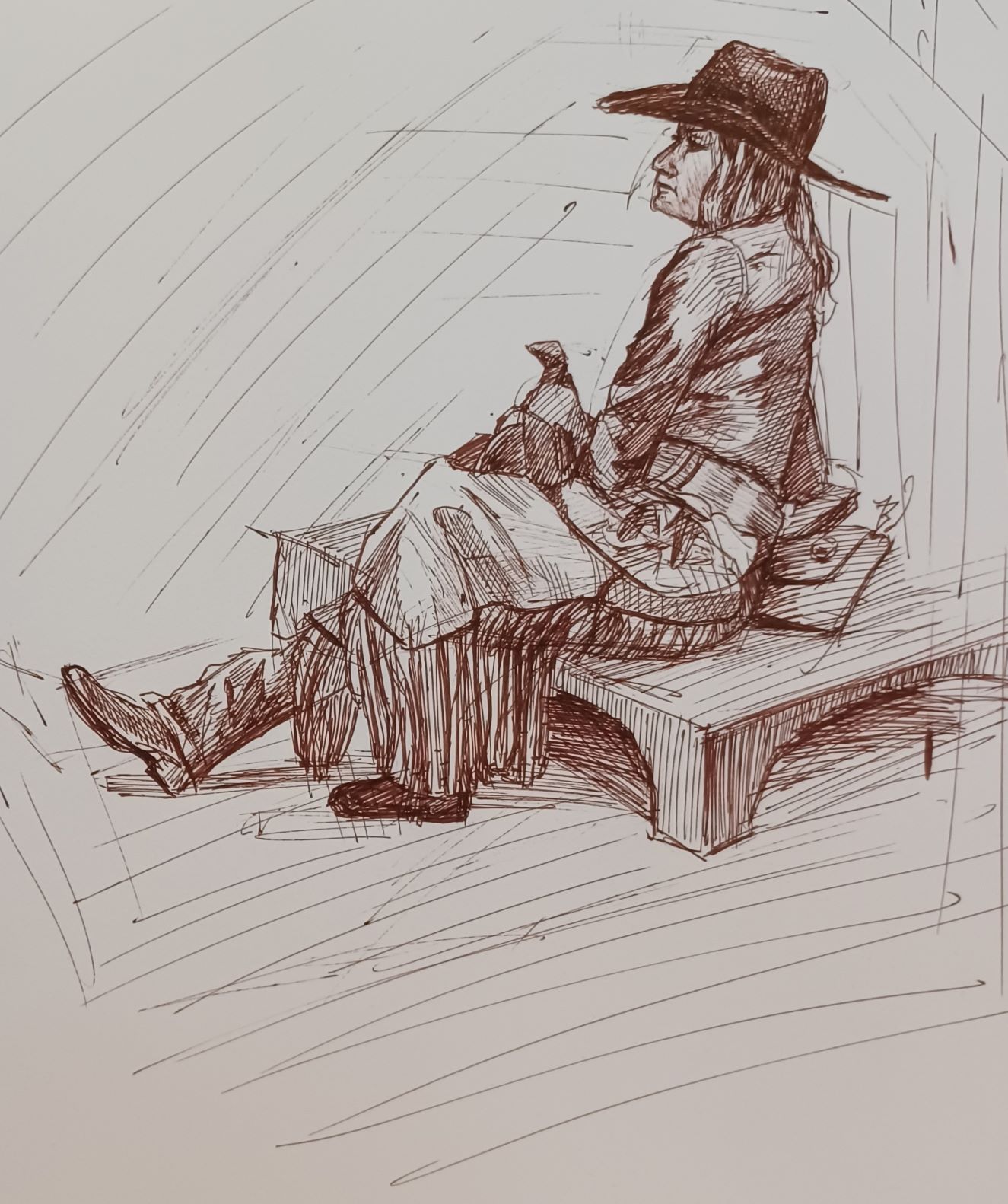 |
Inspired by the men and women of rodeo that rope and ride each year at the Iron County Fair (Labor Day Weekend). |
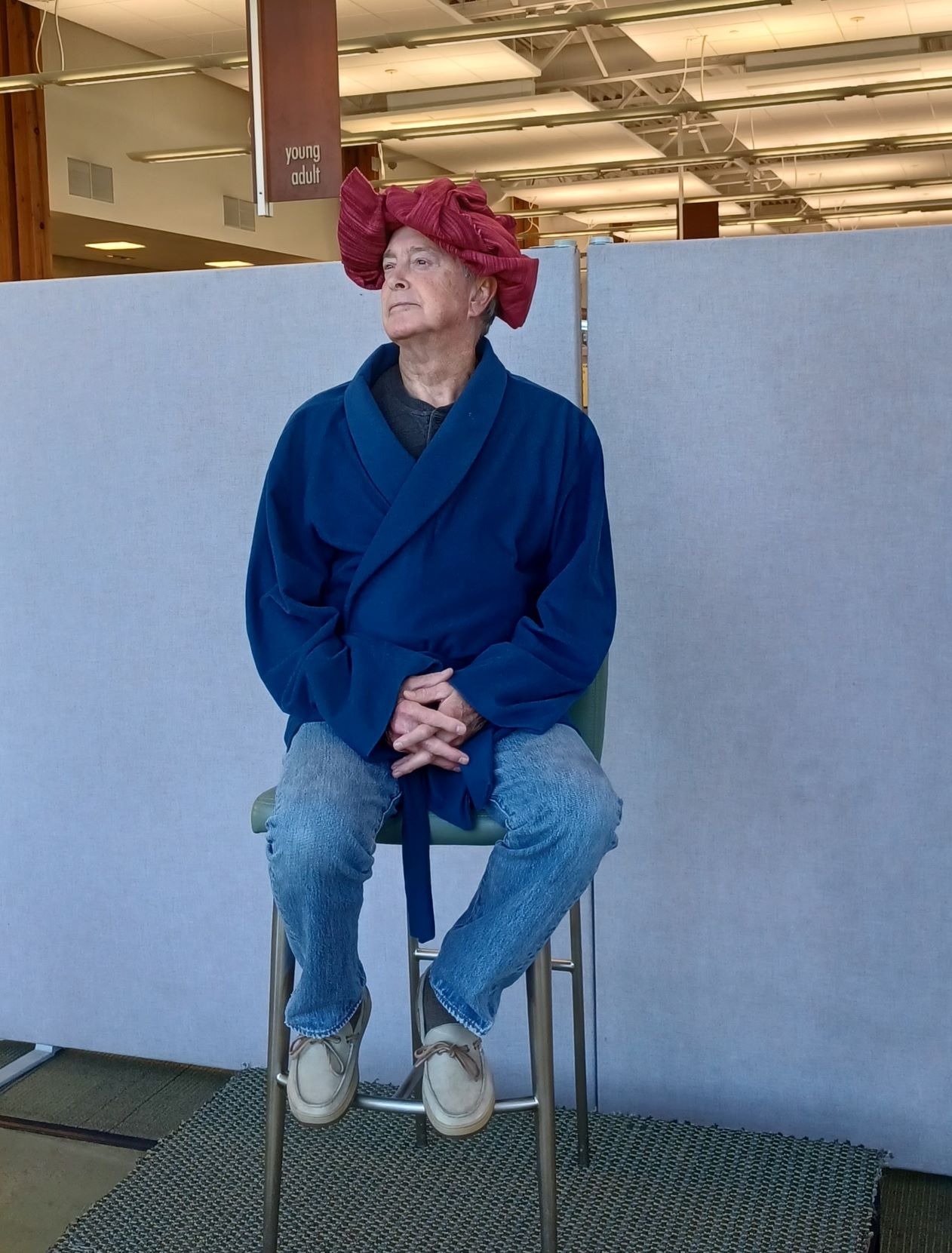 |
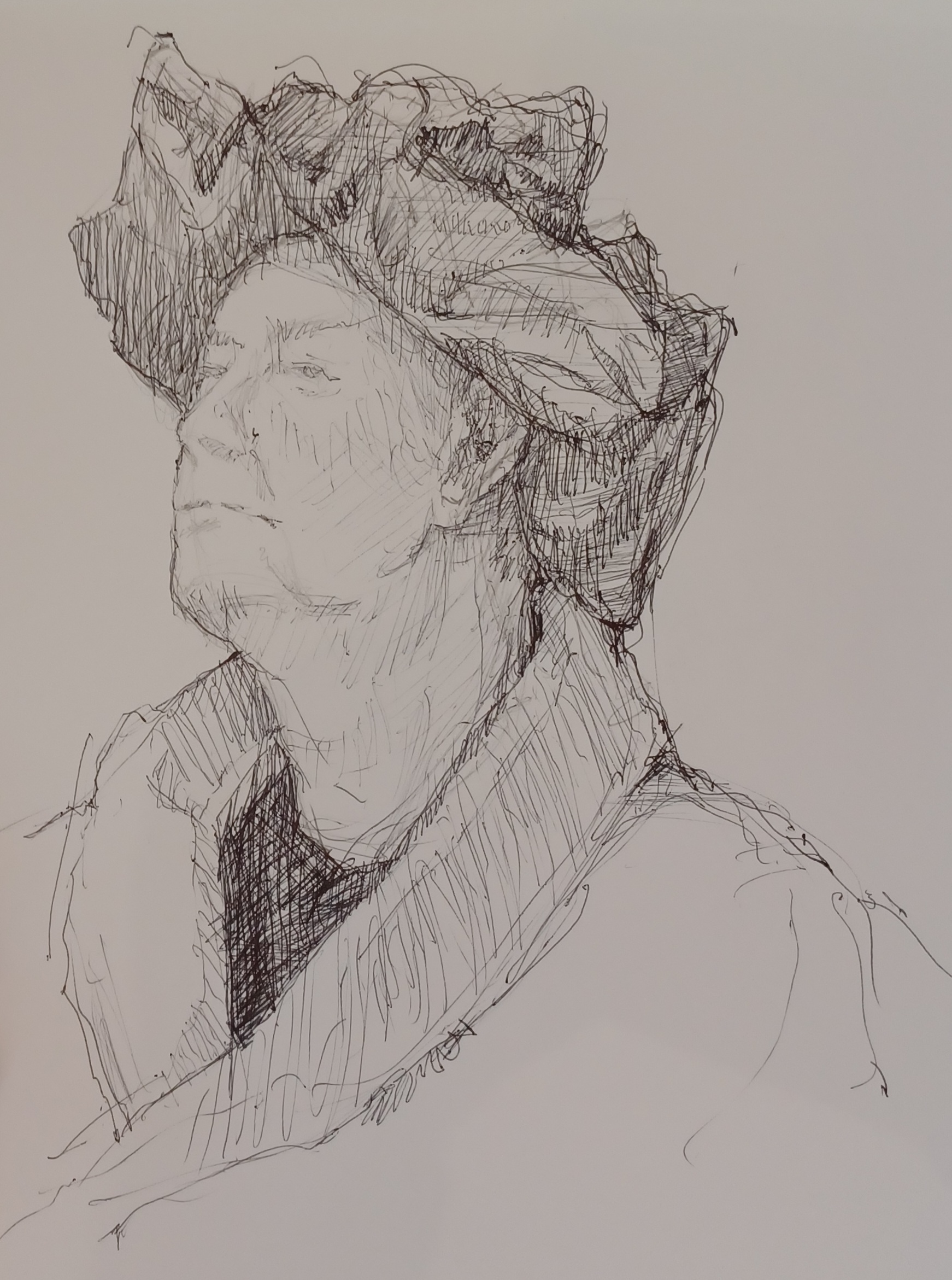 |
Is Jan van Eyck’s Portrait of a Man in a Red Turban a self-portrait? Although there is no direct evidence, there are many circumstantial clues. On the frame of this small painting, Jan van Eyck has painted an inscription in Latin (“Jan van Eyck Made Me on October 21, 1433”) and a motto in Greek at the top (“As I Can”, a pun on “As Eyck Can”). The personal motto only appears on a small number of paintings and never as prominent as here. The clothing is appropriate for van Eyck’s social position. The subject gazes directly, almost confrontationally, at the viewer, in stark contrast to the tradition of portraiture at the time. In addition, the way the subject’s headgear (not a turban but a chaperon, a common form of 15th Century male headwear) is tied up on the subject’s head would be a sensible precaution for a painter. |
 |
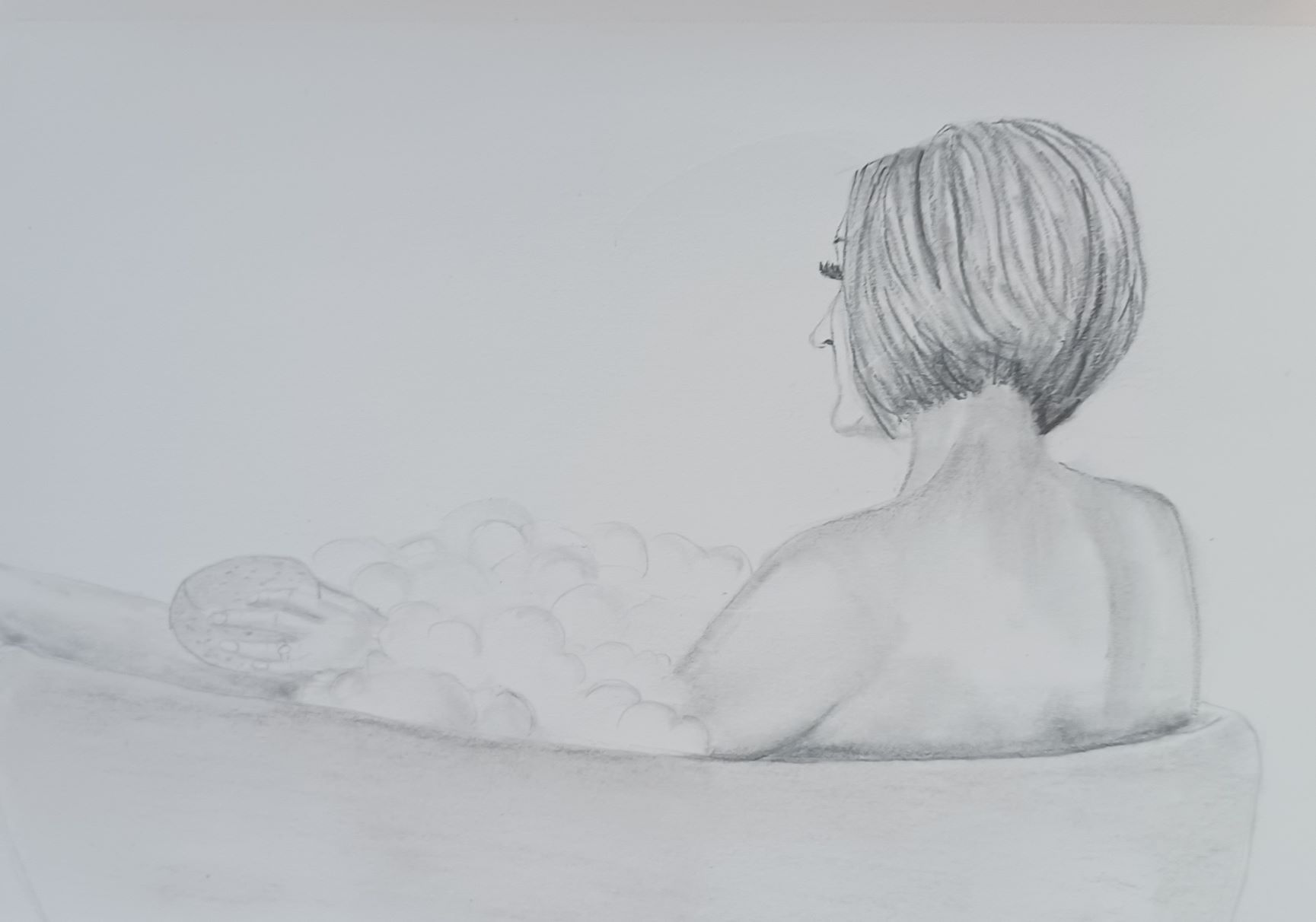 |
Woman in a Tub (or The Tub) is one of a suite of pastels on paper and is in the collection of the Hill-Stead Museum in Connecticut. The suite of pastels all featured women "bathing, washing, drying...combing their hair or having it combed" and were created in readiness for the sixth and final Impressionist Exhibition of 1886. |
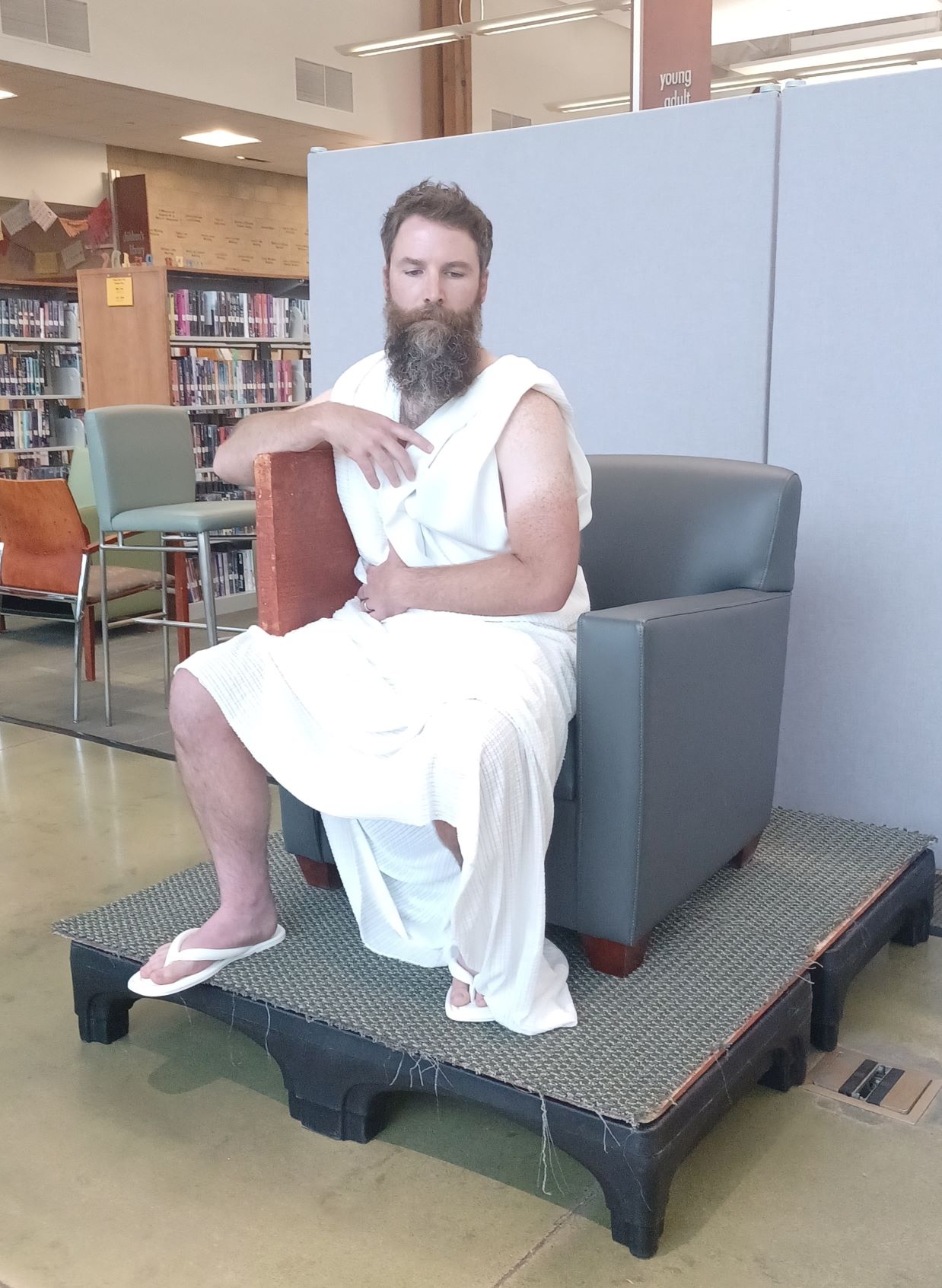 |
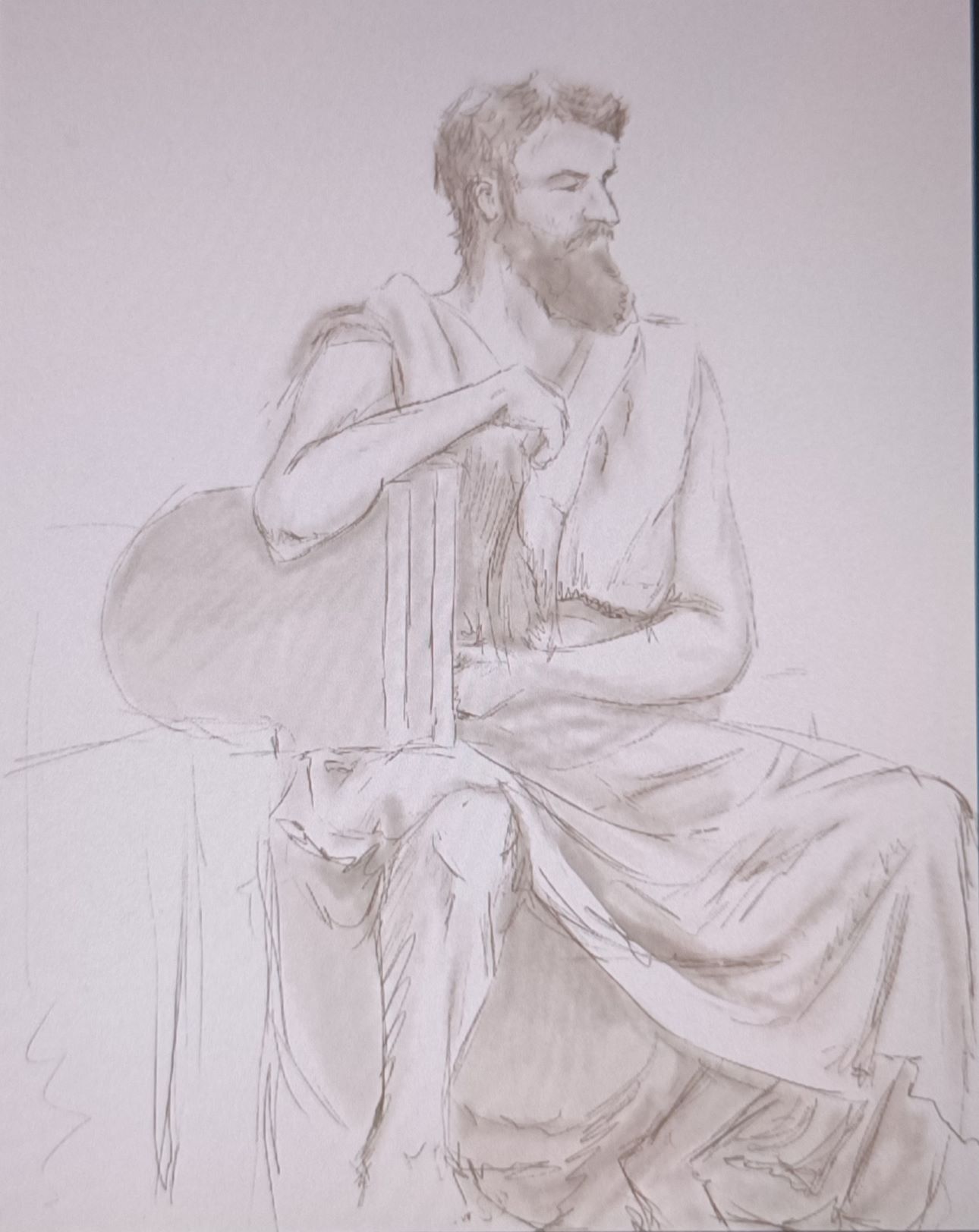 |
A sculpture by the Italian High Renaissance artist Michelangelo Buonarroti, housed in the church of San Pietro in Vincoli in Rome. Commissioned in 1505 by Pope Julius II for his tomb, it depicts the biblical figure Moses with horns on his head, based on a description in chapter 34 of Exodus in the Vulgate, the Latin translation of the Bible used at that time. |
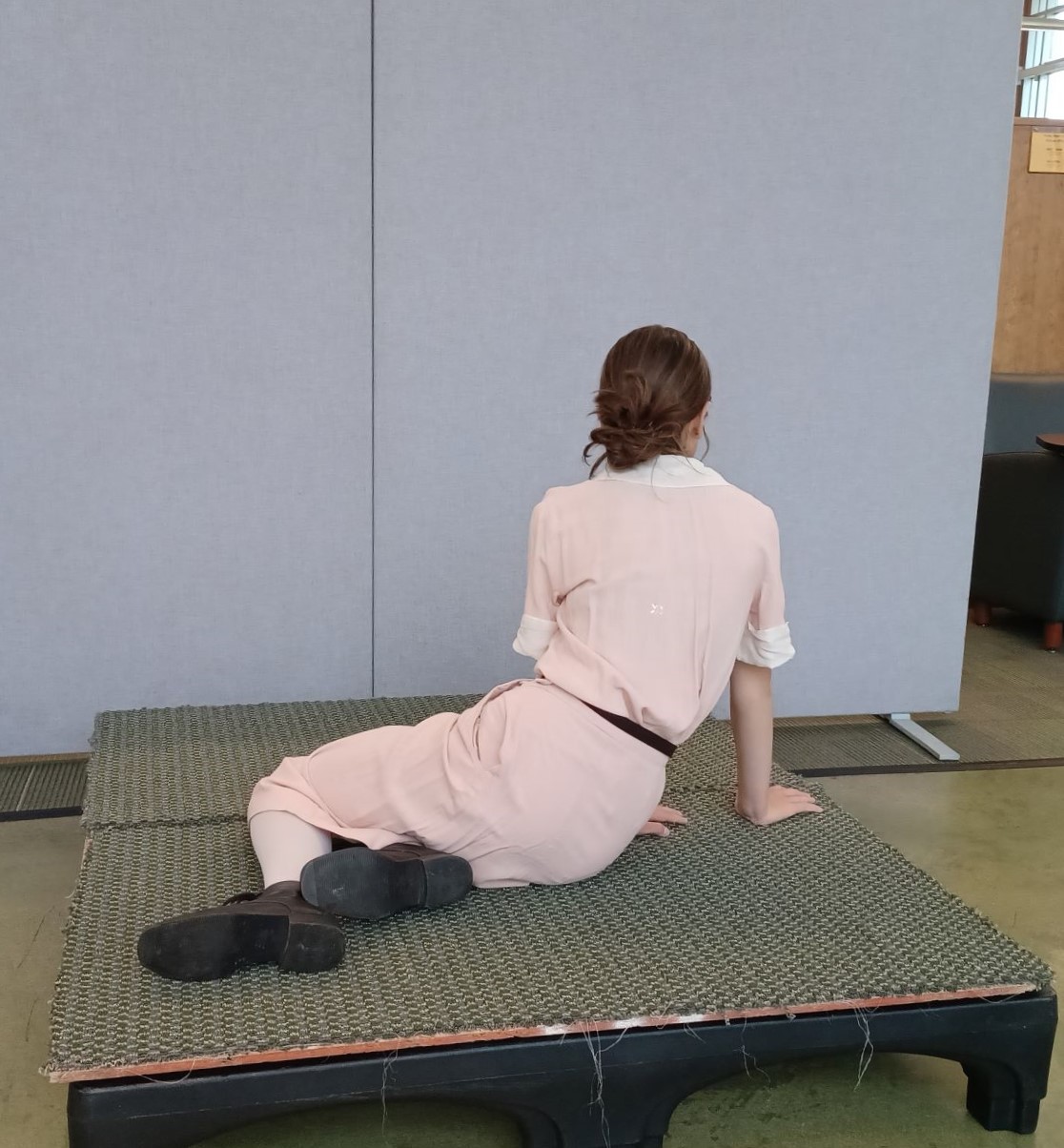 |
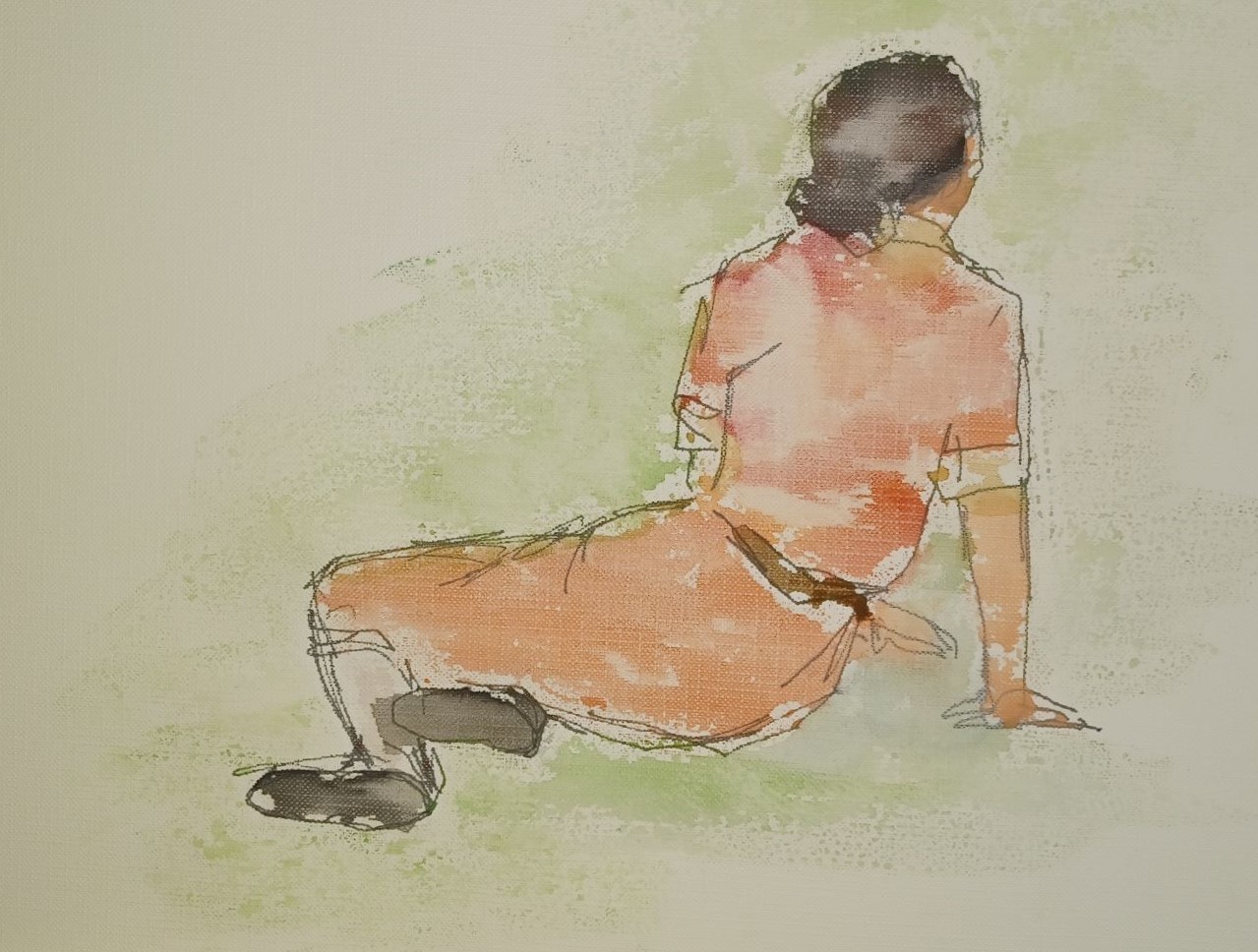 |
One of the best-known American paintings of the middle 20th century. It is a tempera work done in a realist style, depicting a woman semi-reclining on the ground in a treeless, mostly tawny field, looking up at a gray house on the horizon; a barn and various other small outbuildings are adjacent to the house. It is owned by the Museum of Modern Art in New York as part of its permanent collection. |
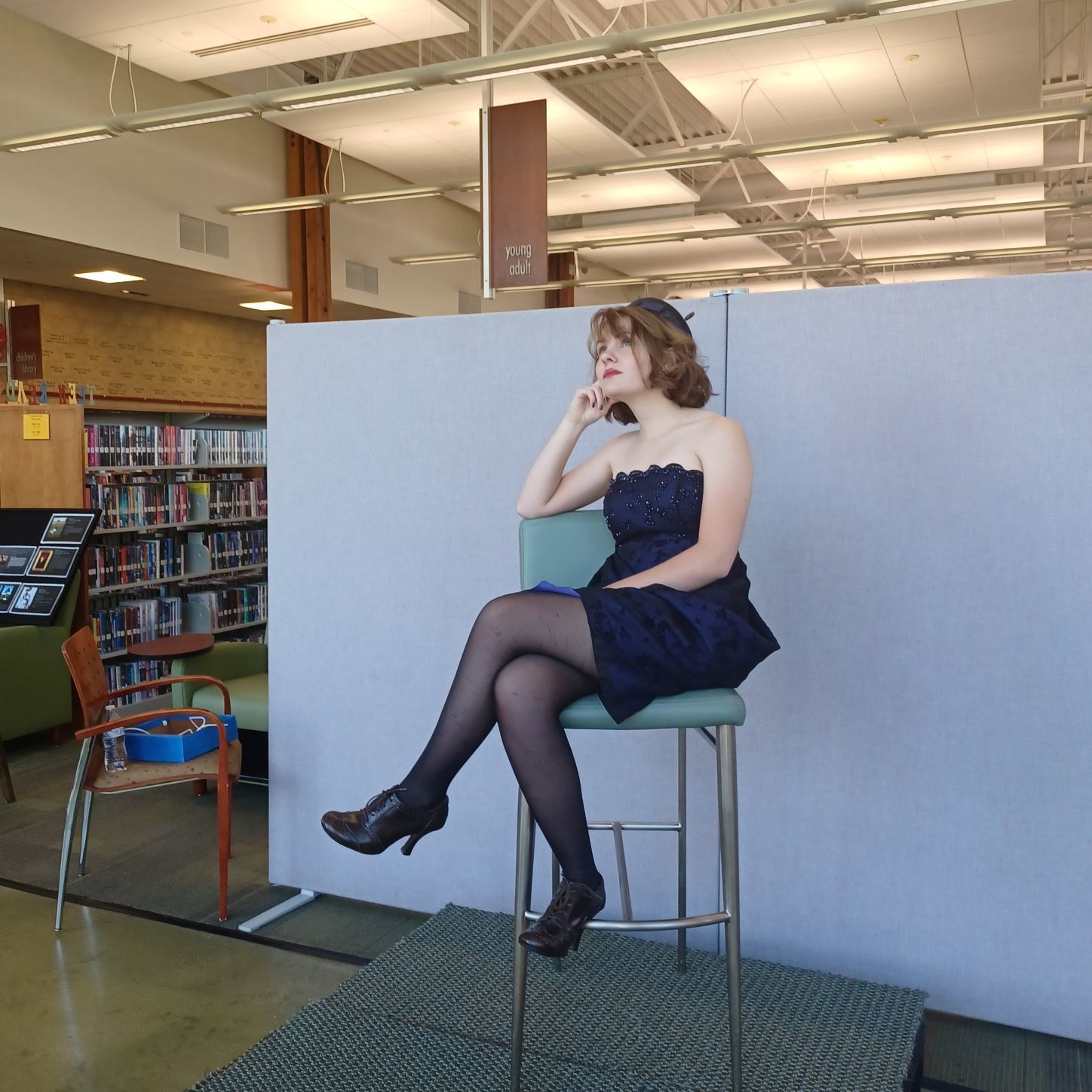 |
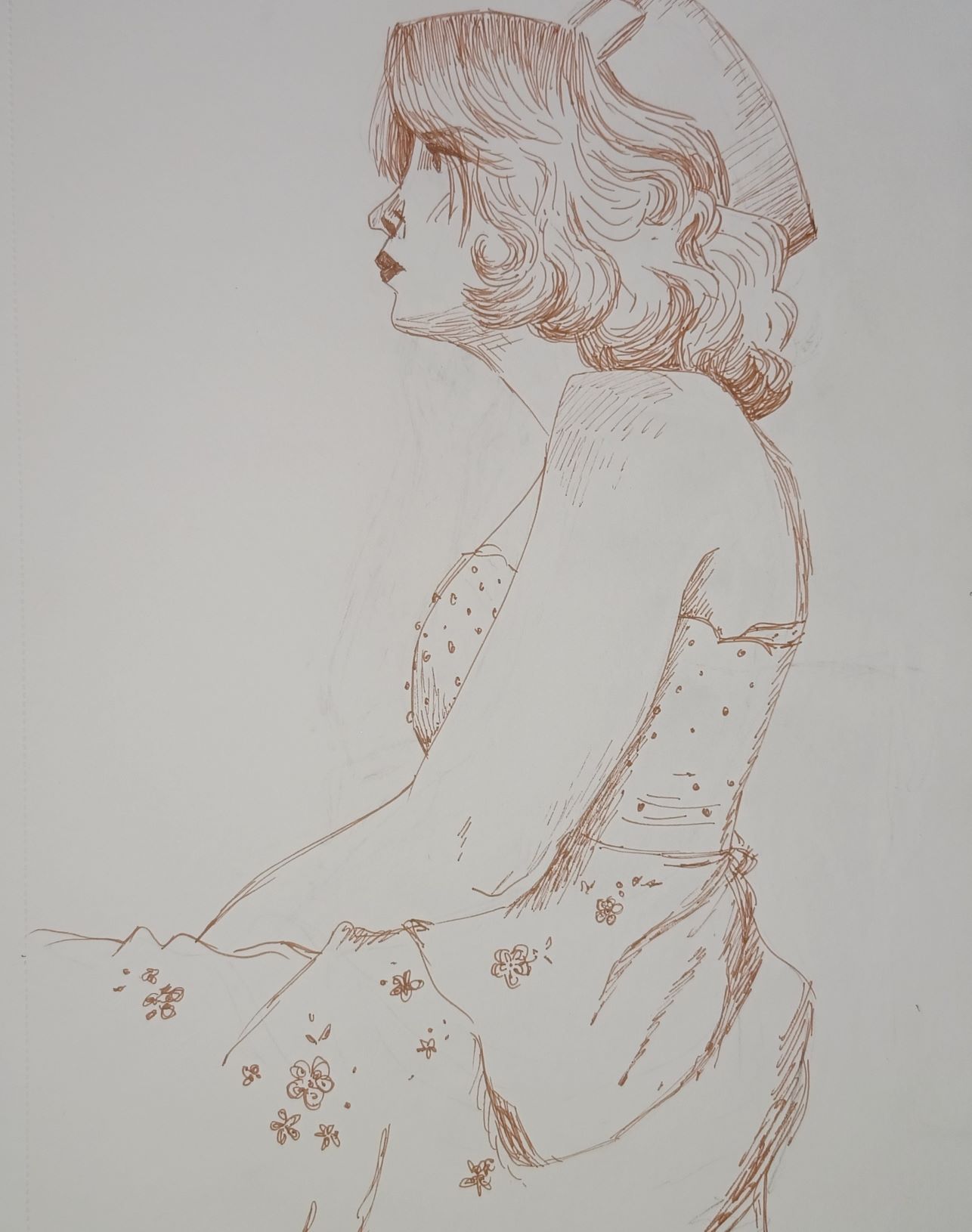 |
The modern image of cigarette girls, with their pillbox hats, short skirts, and tray held up by a neck strap, came with the urbanization of America in the 1920s. They were made known to the general public despite not being seen outside of speakeasies and supper clubs through Hollywood films. After the repeal of prohibition, cigarette girls became a common sight in restaurants, clubs, bars, airports, and casinos in the 1930s and 1940s and at sporting events and theatres during intermissions post WW II. |
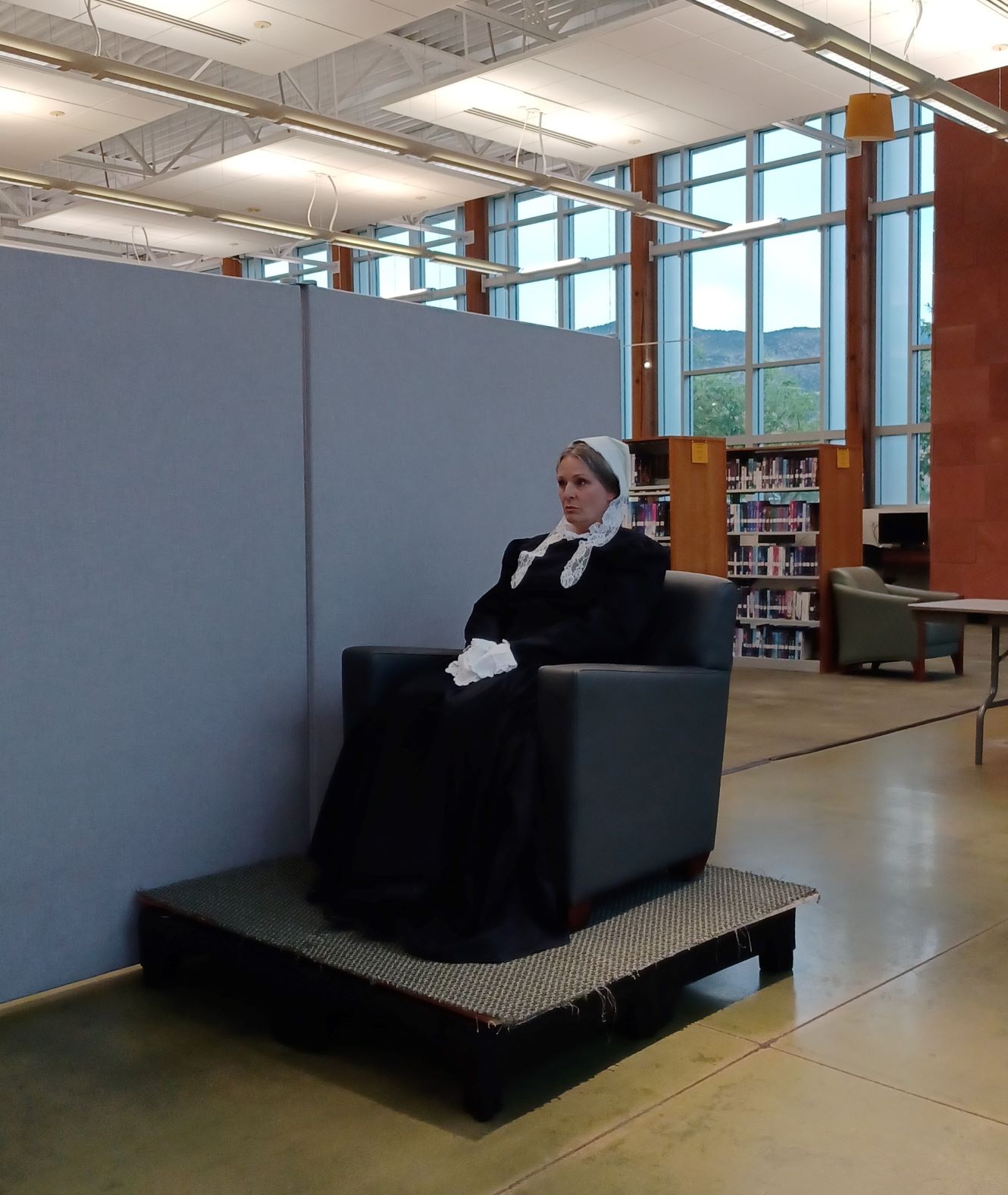 |
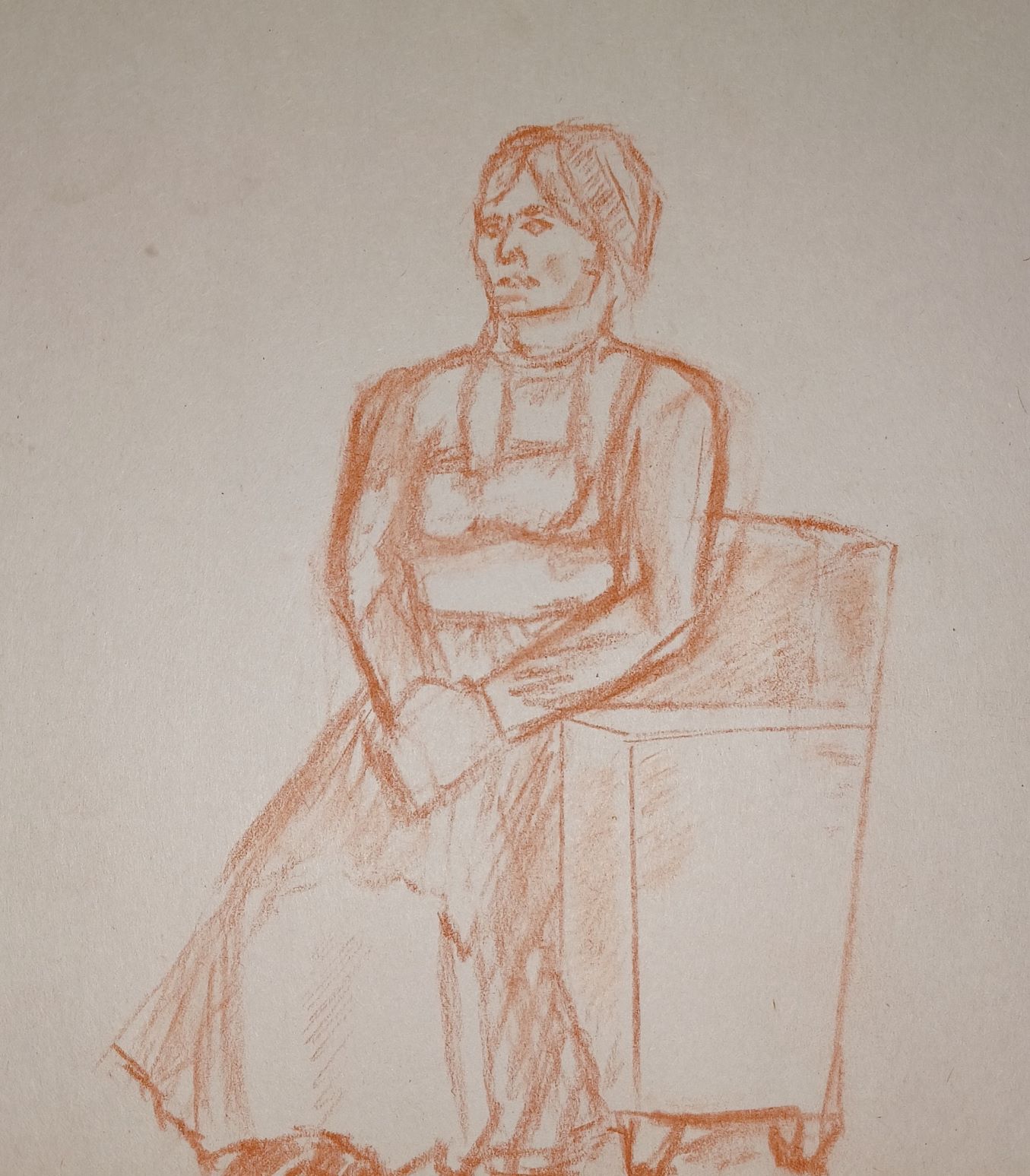 |
One of the most famous works by an American artist outside the United States. It has been variously described as an American icon and a Victorian Mona Lisa. Several unverifiable stories relate to the painting of the work; one is that Anna Whistler acted as a replacement for another model who could not make the appointment. It is also said that Whistler originally envisioned painting the model standing up, but that his mother was too uncomfortable to pose standing for an extended period. |
 |
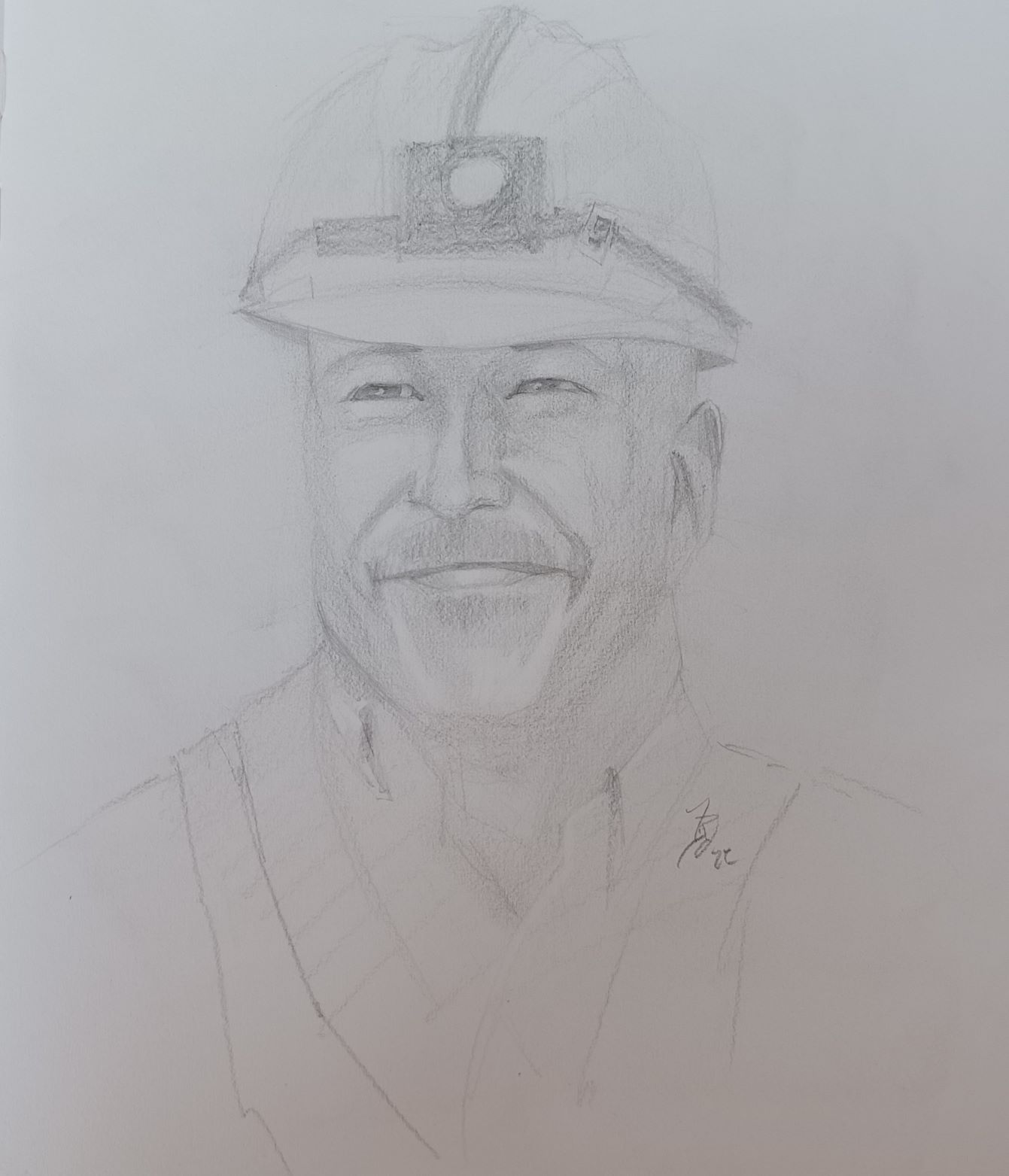 |
Remembered as one of the greatest illustrators in American history, Norman Rockwell brought emotion and artistic detail together in a way few ever have. This poster is a prime example of that standard, where Rockwell reminds workers that lives are at stake with the two-star pin found on the coal miner in this picture, signifying that he has two sons fighting overseas. |
 |
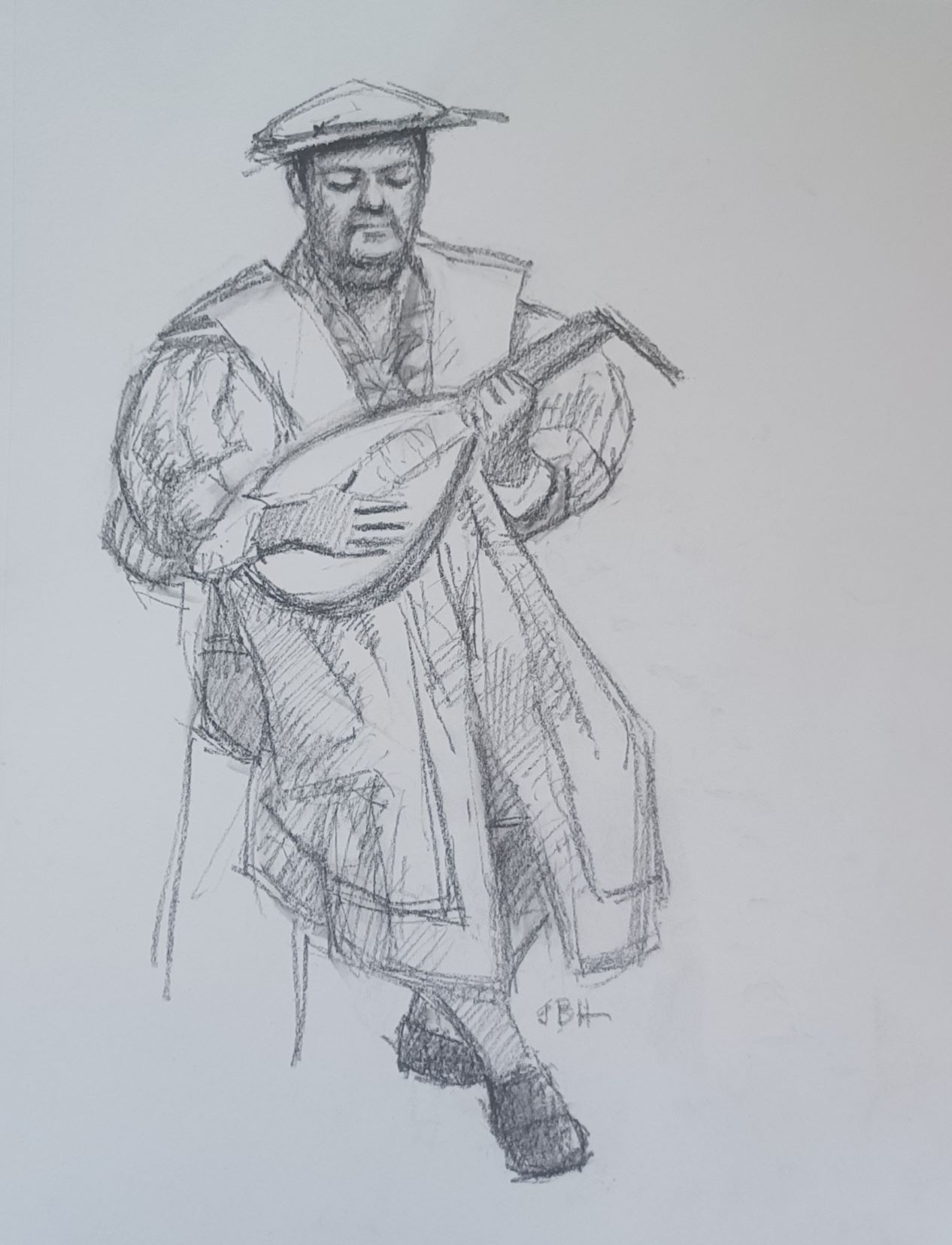 |
This painting was one of a group of English portraits carried out by Holbein and his school. Though German, Holbein was court painter to King Henry VIII of England, and the prototype for this image is his lost mural that once decorated the Privy Chamber of Whitehall Palace in London. Carried out in 1537, that wall painting depicted the king with his third wife Jane Seymour, the only one of Henry's queens to bear him a male heir. Of the numerous paintings derived from that prototype, including a copy at Windsor Castle, this is without doubt the one of highest quality. |
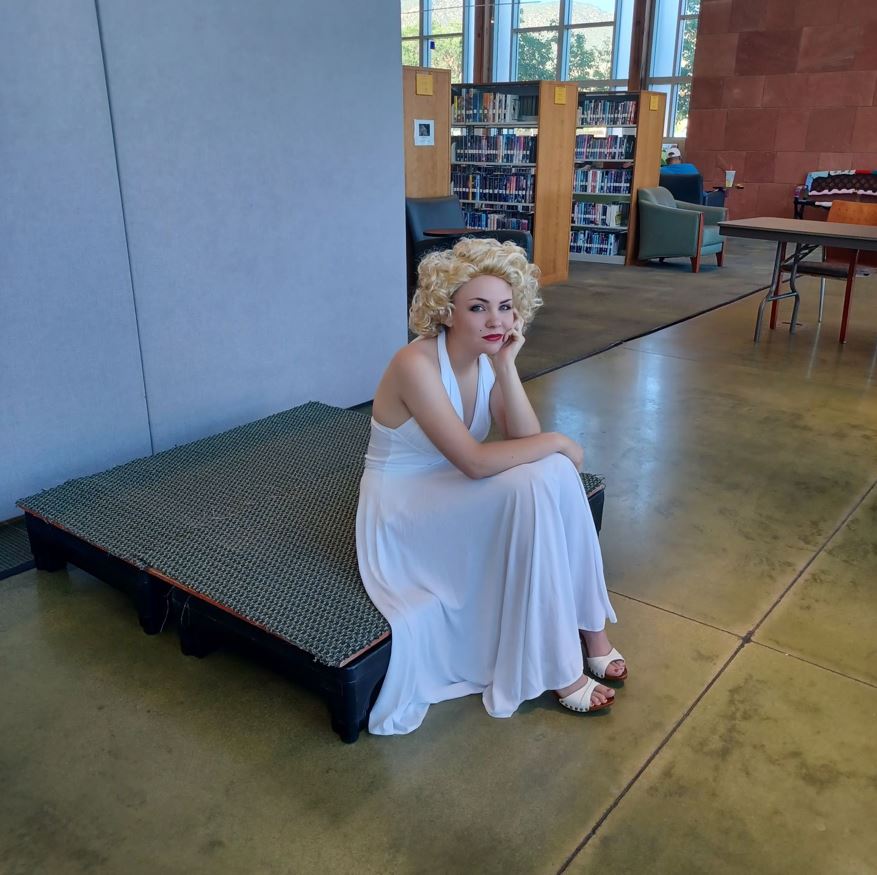 |
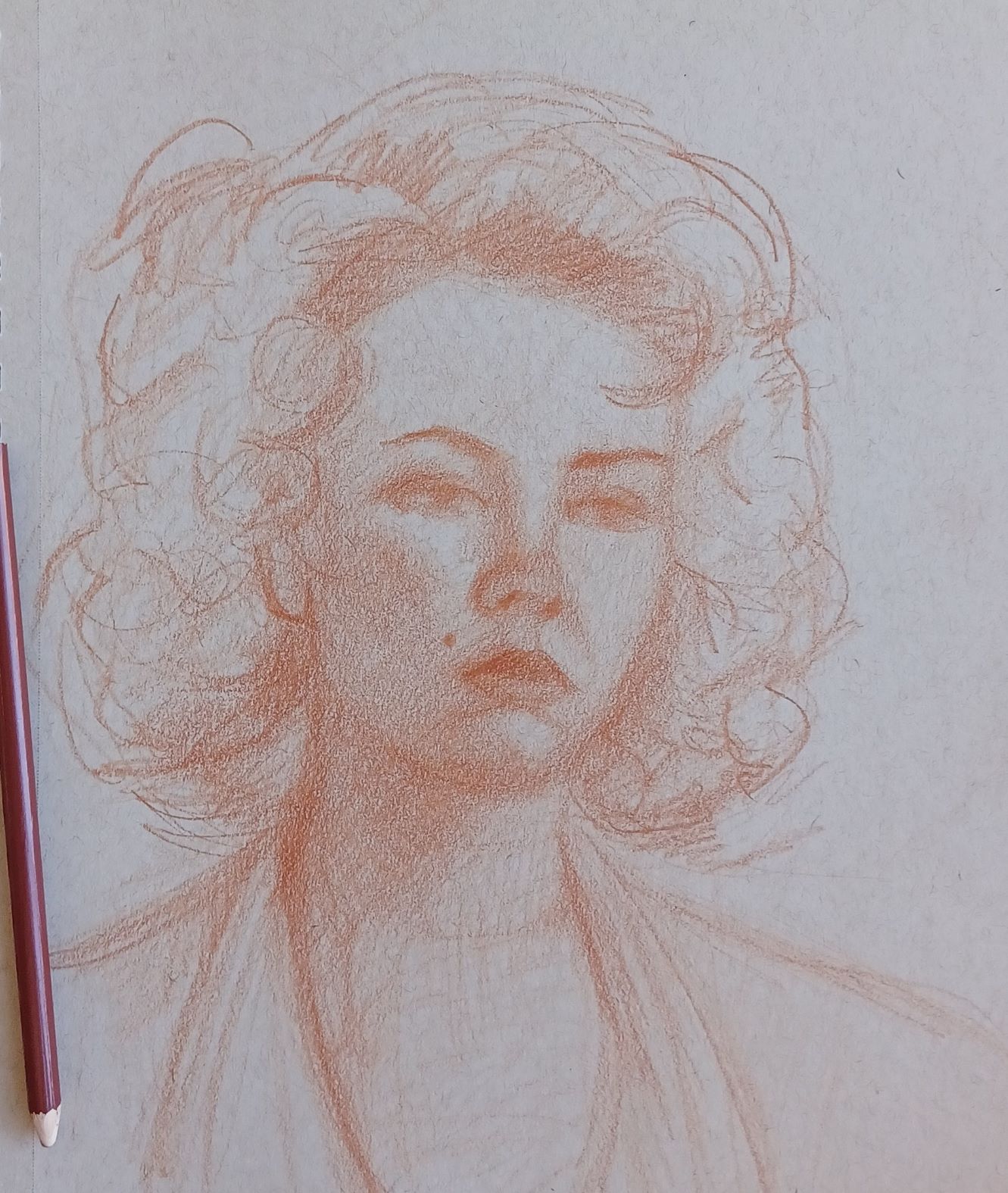 |
Marilyn Monroe mesmerized a crowd of lucky onlookers while her white dress blew suggestively above her knees — and sometimes over her head. It was 1954, and the director Billy Wilder was filming a scene of the film The Seven Year Itch on Lexington Avenue between 52nd and 53rd Street in New York City. In the script, Monroe and co-star Tom Ewell exit a movie theater and a breeze from the subway passing below lifts Monroe’s skirt. Instead of rushing to cover her legs, as any decent woman of that era would have, Monroe exclaims, “Isn't it delicious?” |
 |
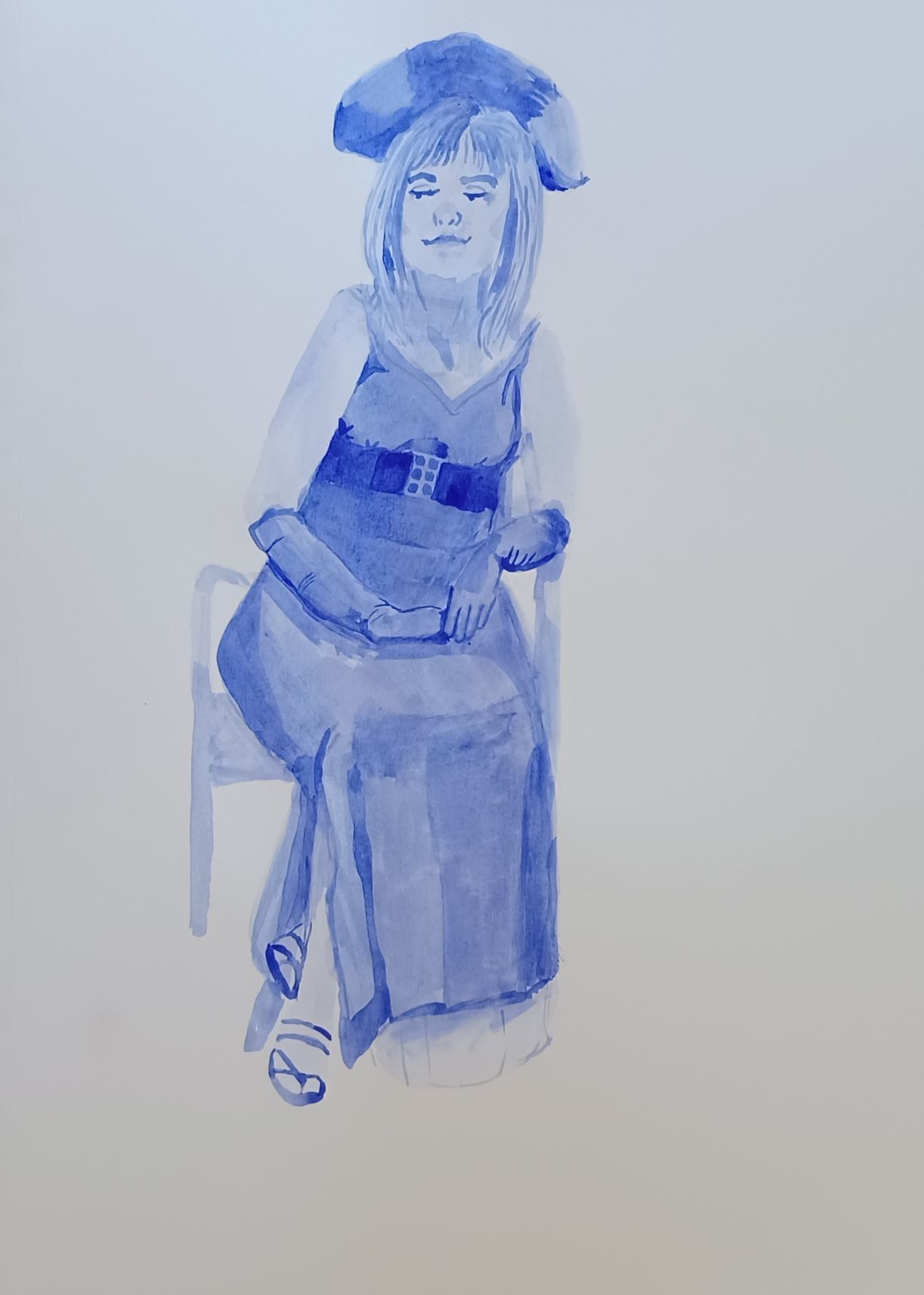 |
Film Genre: 1940s and 1950s A cinematic term used primarily to describe stylish Hollywood crime dramas, particularly those that emphasize cynical attuites and motivations. The era is often associated with a low-key, black-and-white visual style that has roots in German Expressionist cinematography. French for “black film” (literal) or “dark film” (closer meaning). |
 |
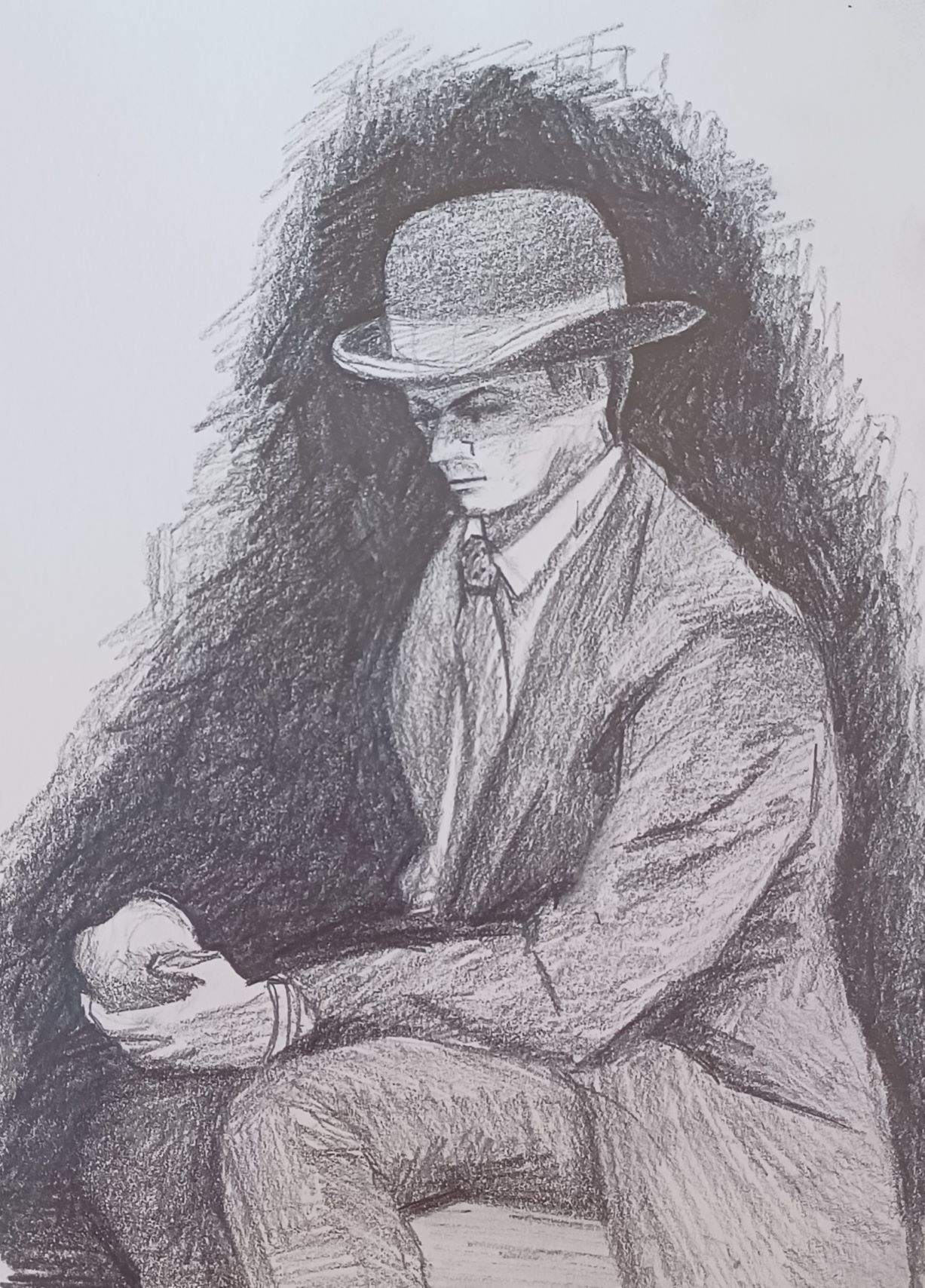 |
Magritte painted it as a self-portrait. The painting consists of a man in an overcoat and a bowler hat standing in front of a low wall, beyond which are the sea and a cloudy sky. The man's face is largely obscured by a hovering green apple. However, the man's eyes can be seen peeking over the edge of the apple. Another subtle feature is that the man's left arm appears to bend backwards at the elbow. |
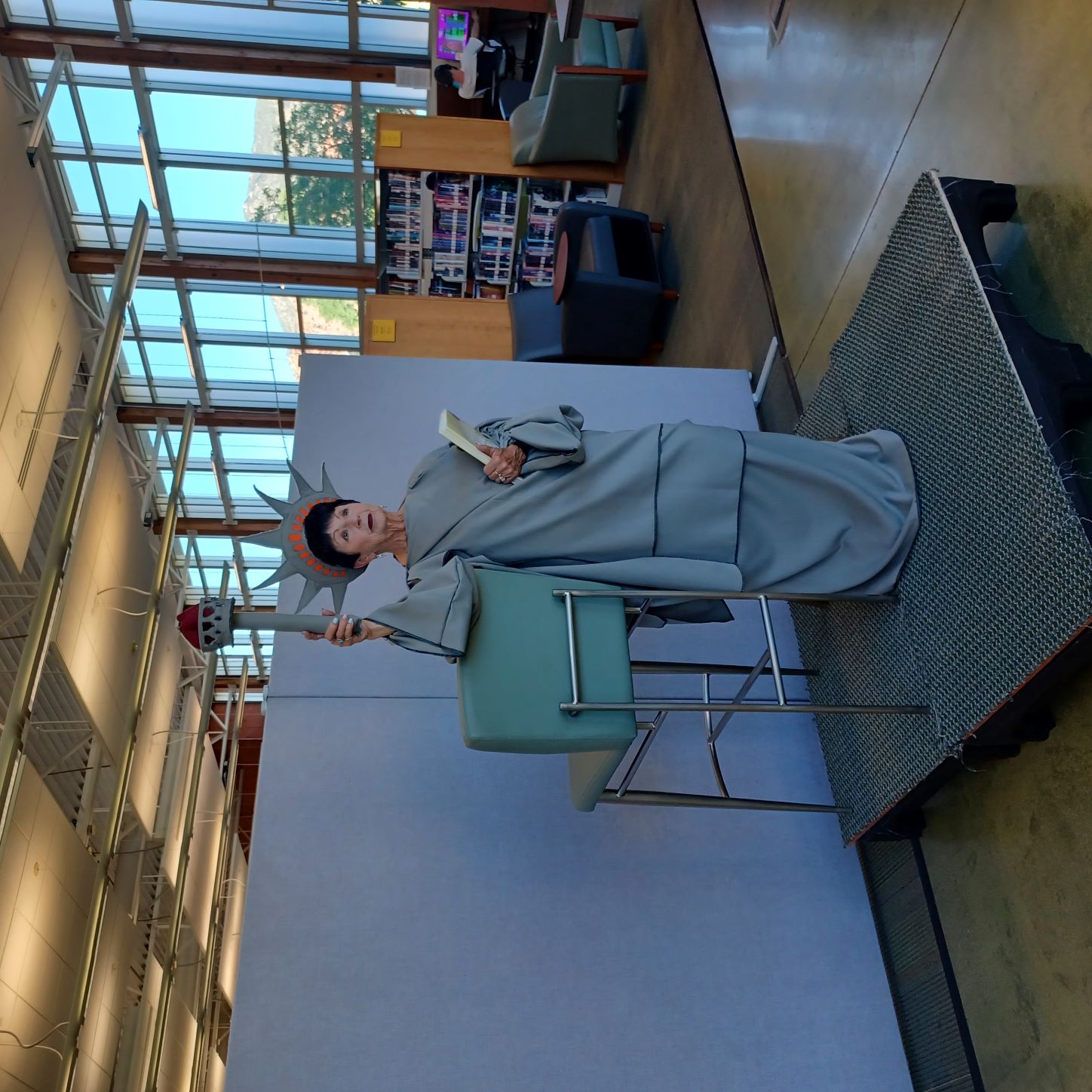 |
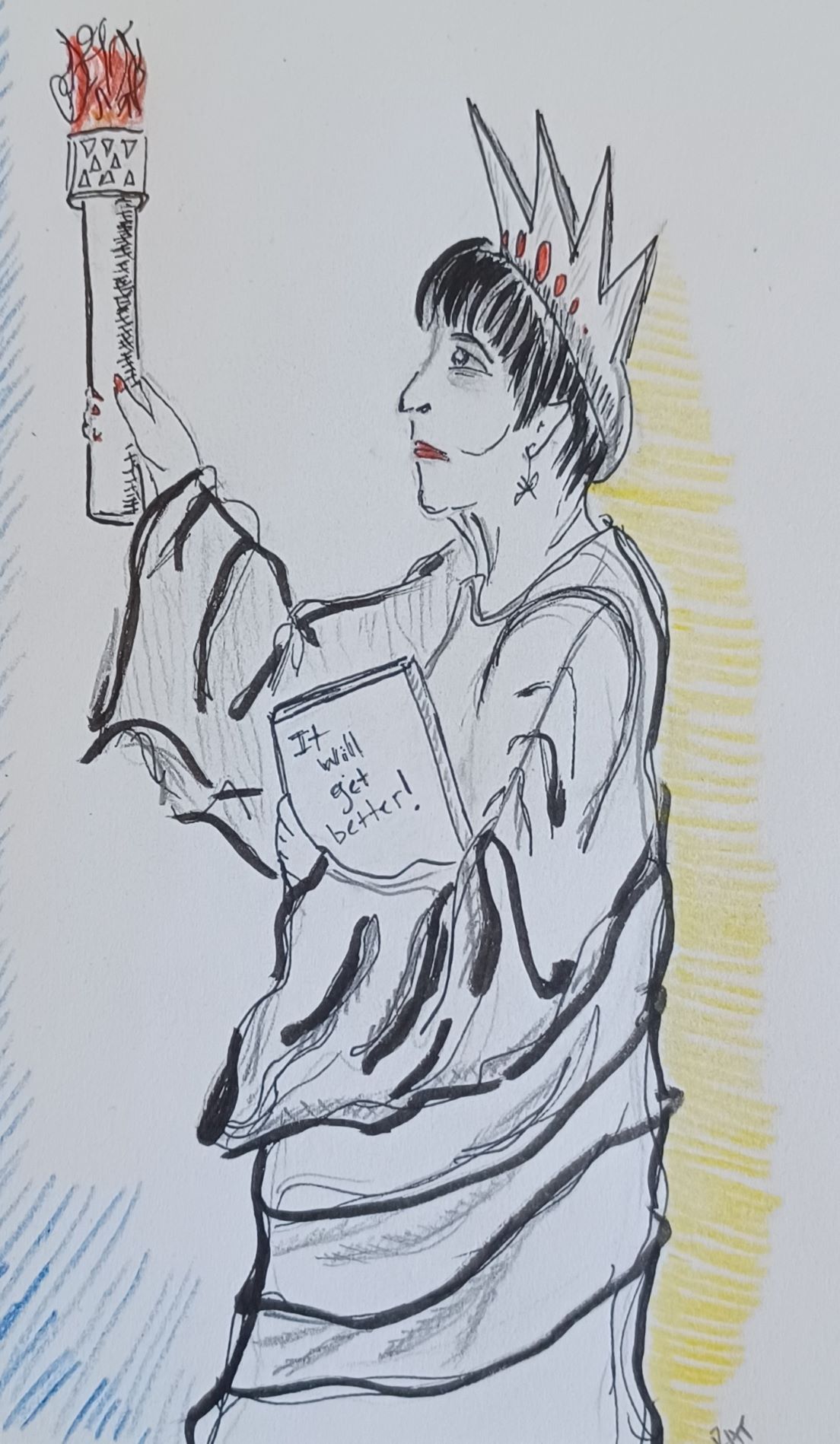 |
Frederic Auguste Bartholdi, 1834-1904. Officially titled Liberty Enlightening the World by its French designer, Frédéric Auguste Bartholdi, the Statue of Liberty was a gift from the French government to the American people. The idea of such a monument was first proposed by French abolitionist and politician Édouard René de Laboulaye, who thought it was appropriate to celebrate the America founded on the principle that “all men are created equal” now that slavery was abolished. Bartholdi envisioned an immense statue standing at the gates of the New World, raising a torch for freedom. |
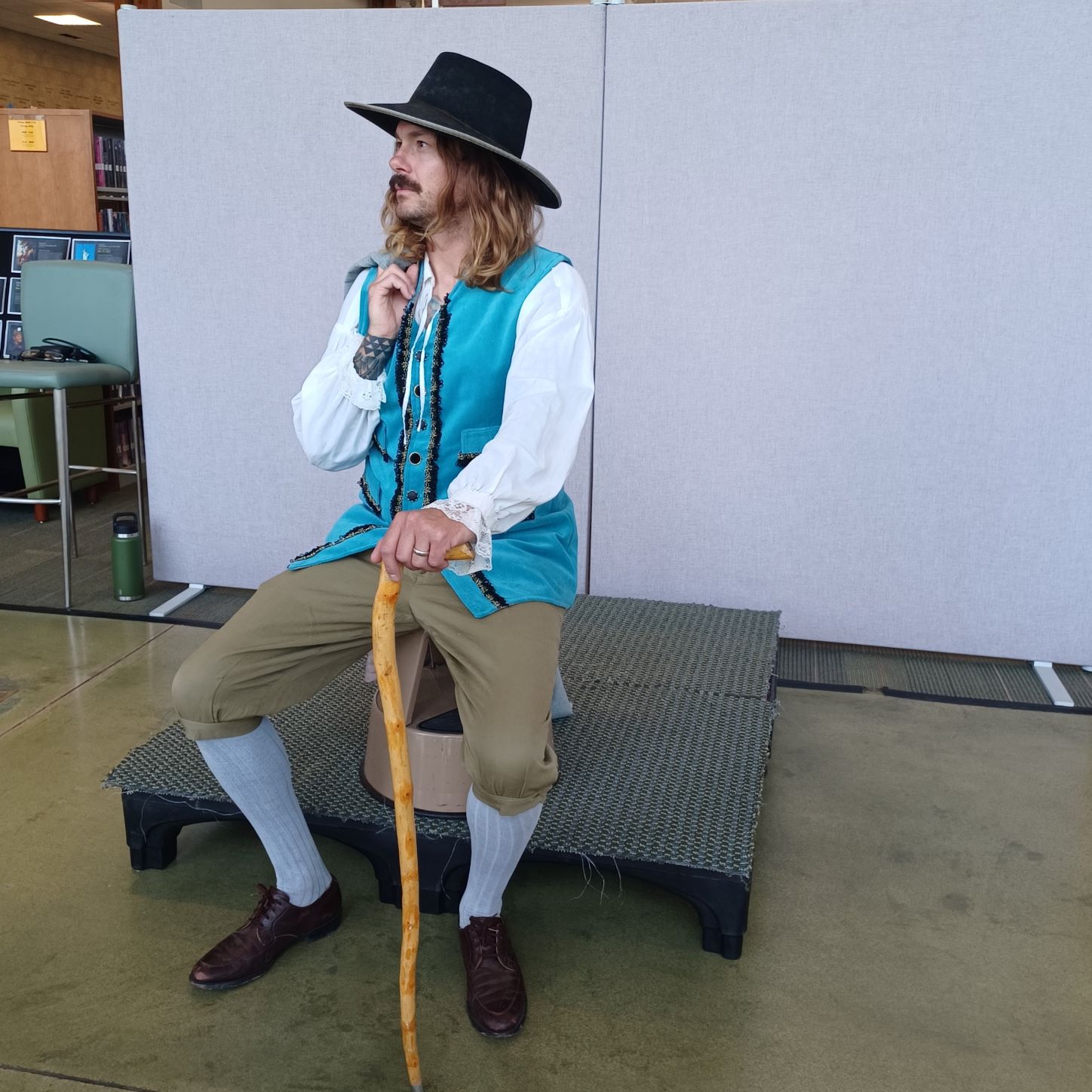 |
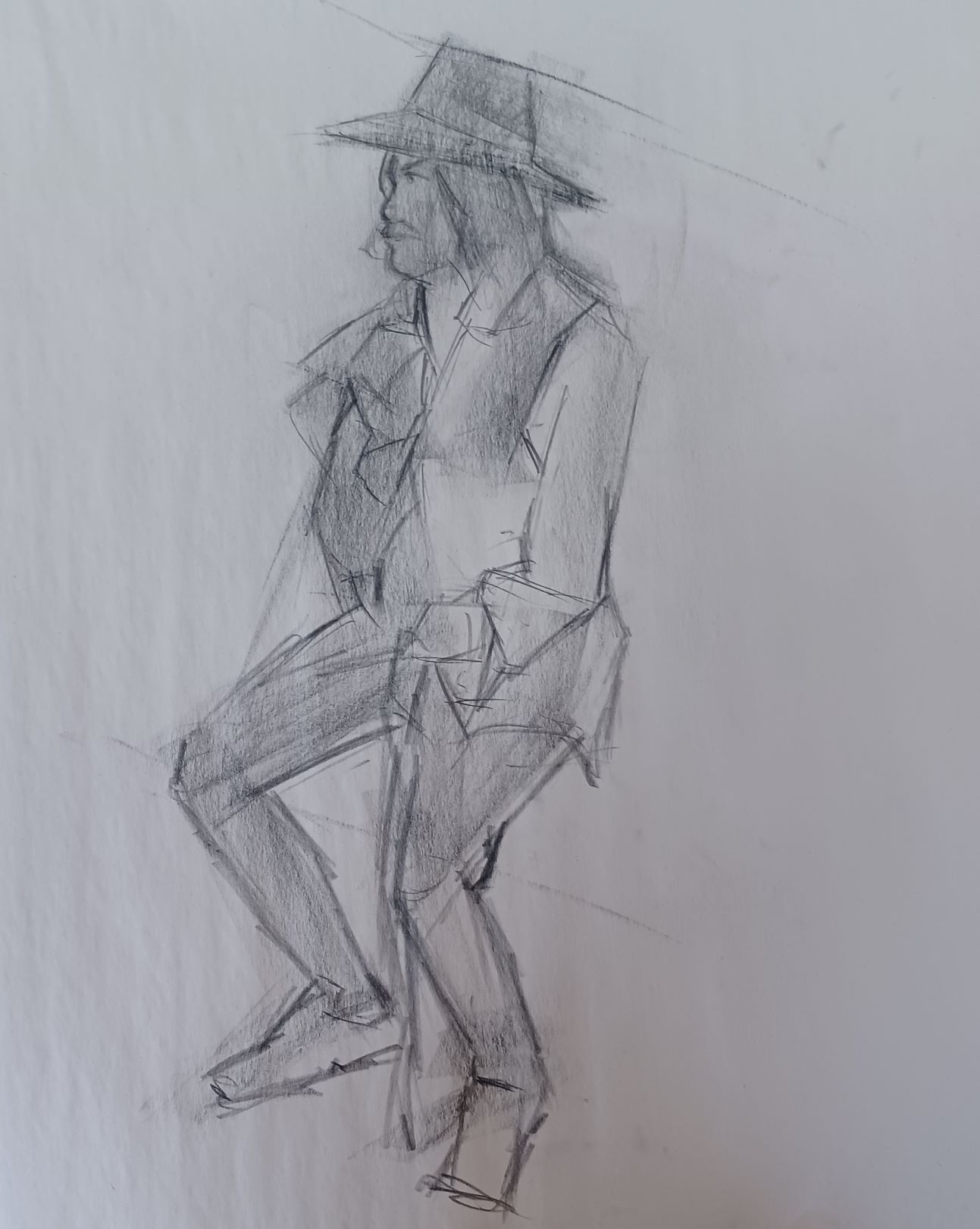 |
At less than five feet tall, diminutive English monarch Charles I was looking for an artist who could make him look like a king and court portraitist Daniel Mytens was not getting the job done. Flemish artist Anthony van Dyck (a student of Rubens) had gained a reputation in Italy and Flanders as a superb portraitist, and he had gained Charles I’s attention by assisting his agents in building the king’s art collection and by sending Charles a few of his own works, including a portrait of Charles’s sister, Queen Elizabeth of Bohemia. In 1632, Charles I made van Dyck his new principal court painter, granting him a knighthood and an annual salary of 200 pounds. |
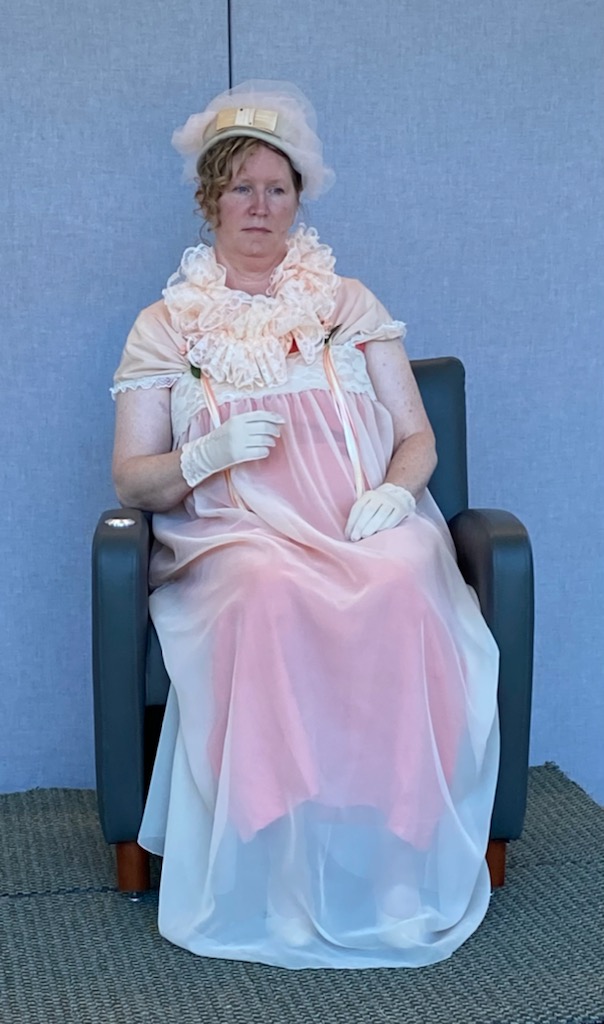 |
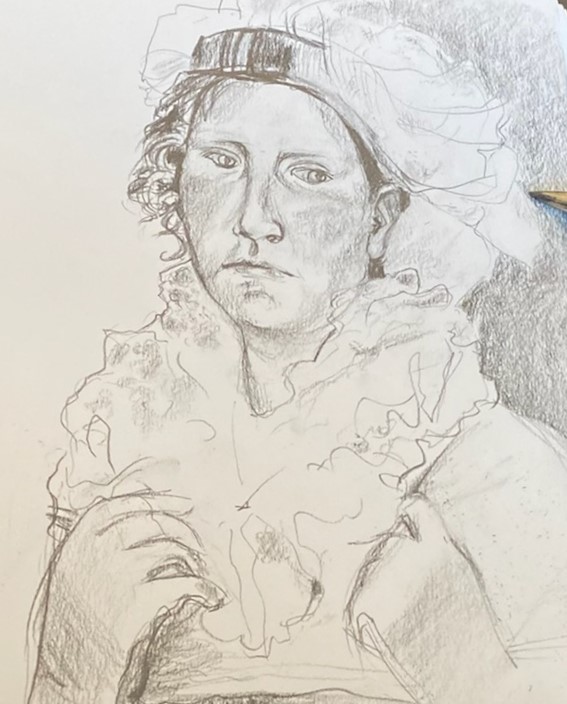 |
Famous for her oil paintings featuring women and children, this one represents Mary Cassatt’s sister Lydia participating in the social ritual of tea drinking. Criticized heavily due to the use of the unfinished canvas as part of the image, the painting is done in Cassatt’s early Impressionist style and exemplifies her skillful use of color. It’s believed that this painting was in the French Impressionist exhibition in 1879 in Paris, and its was in the same exhibition two years later along with another painting of Lydia Simpson Cassatt, Lydia Crocheting in the Garden at Marly. |
 |
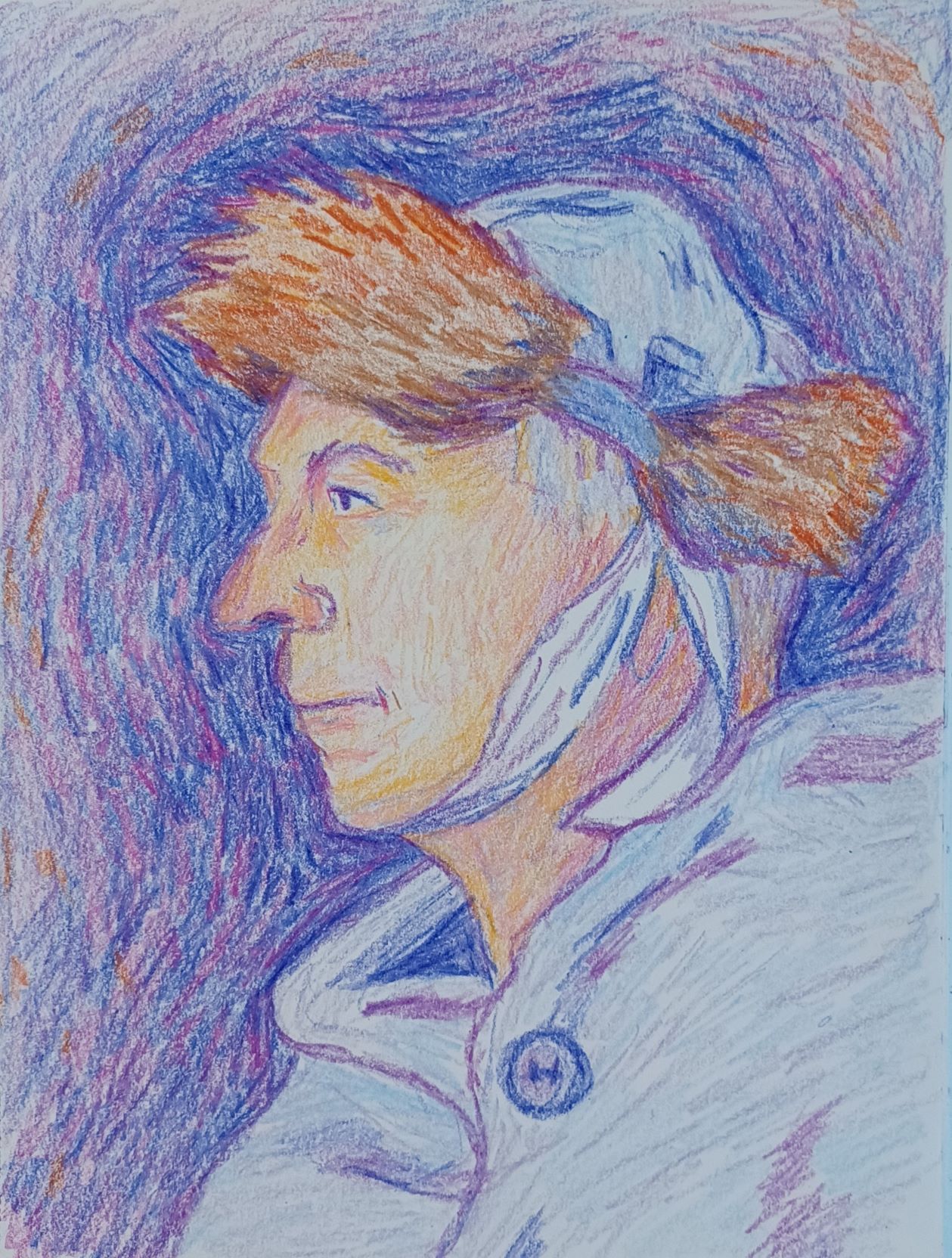 |
Vincent van Gogh is famous for having severed his own ear; the strained relationship with fellow post-impressionist Paul Gauguin that precipitated the artist’s self-mutilation is not nearly as well known. Van Gogh spent 1888 working in the South of France and was joined in October of that year by Gauguin. Their friendship deteriorated, and van Gogh didn’t react well to the news of Gauguin’s impending departure. The troubled artist cut off his ear, wrapped in newspaper, and reportedly gave it to a local prostitute for safekeeping. “Self-Portrait with Bandaged Ear” depicts van Gogh in his studio, with the right side of his head wrapped in cloth. In fact, it was a portion of van Gogh’s left ear that was removed. |
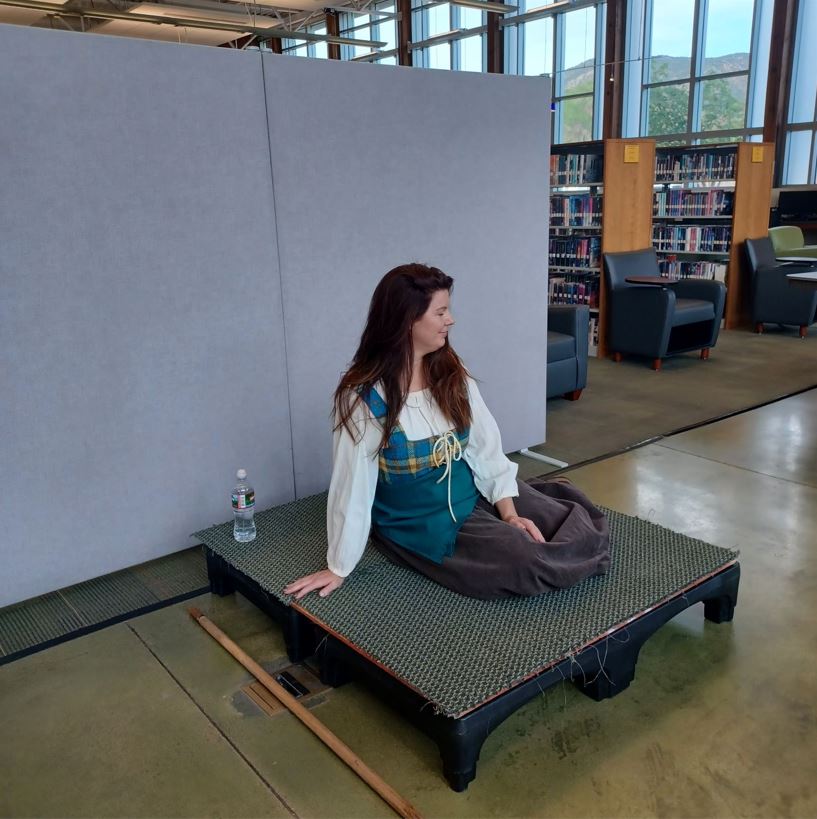 |
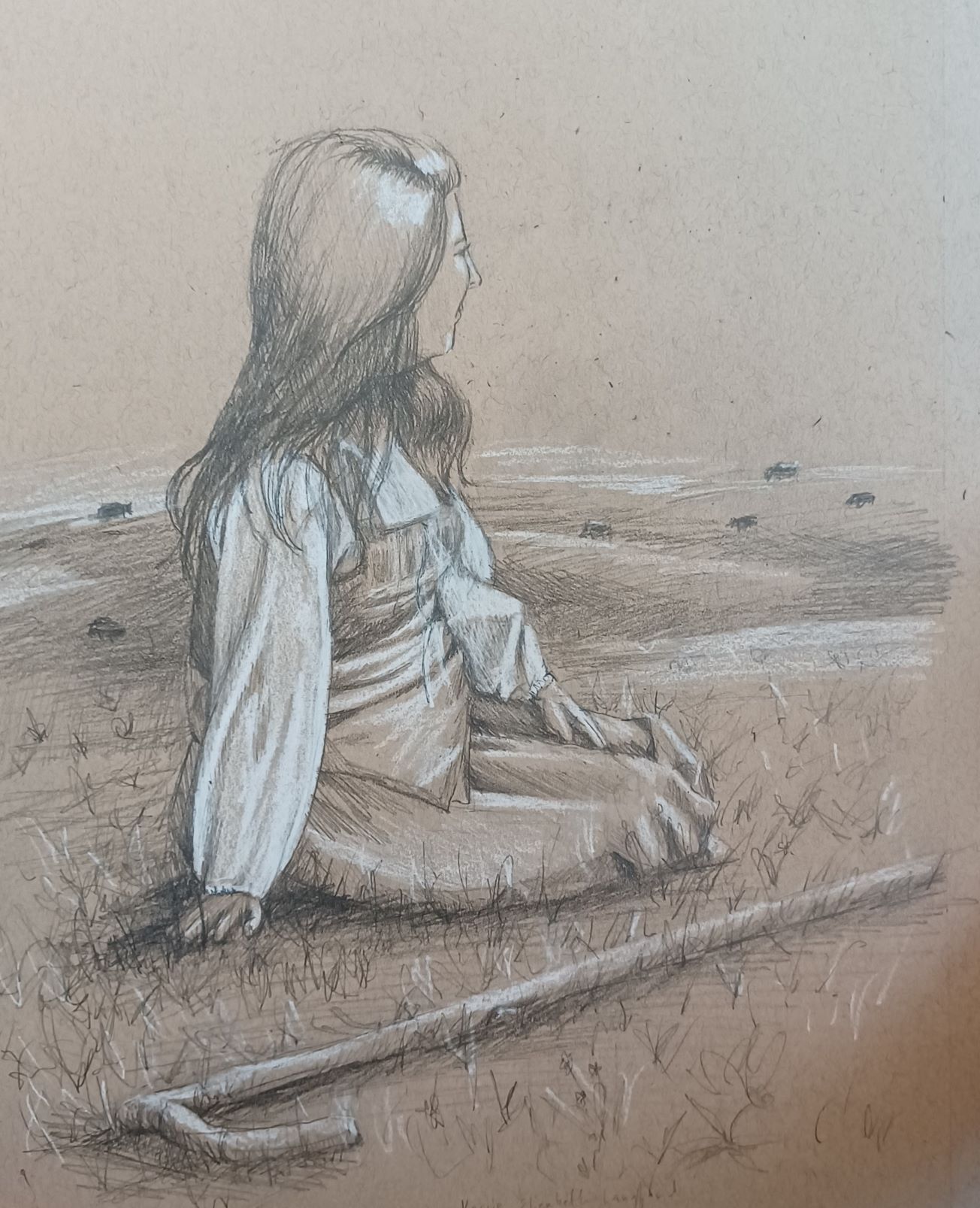 |
The Shepherdess (French: Pastourelle), also known as The Little Shepherdess, is a painting by William-Adolphe Bouguereau completed in 1889. The title is taken from the Southern French dialect. The painting depicts an idyllic, pastoral scene of a lone young woman in peasant attire posed for the artist, balancing a stick (likely her crook) across her shoulders, standing barefooted in the foreground. In the background are oxen grazing in a field. |
 |
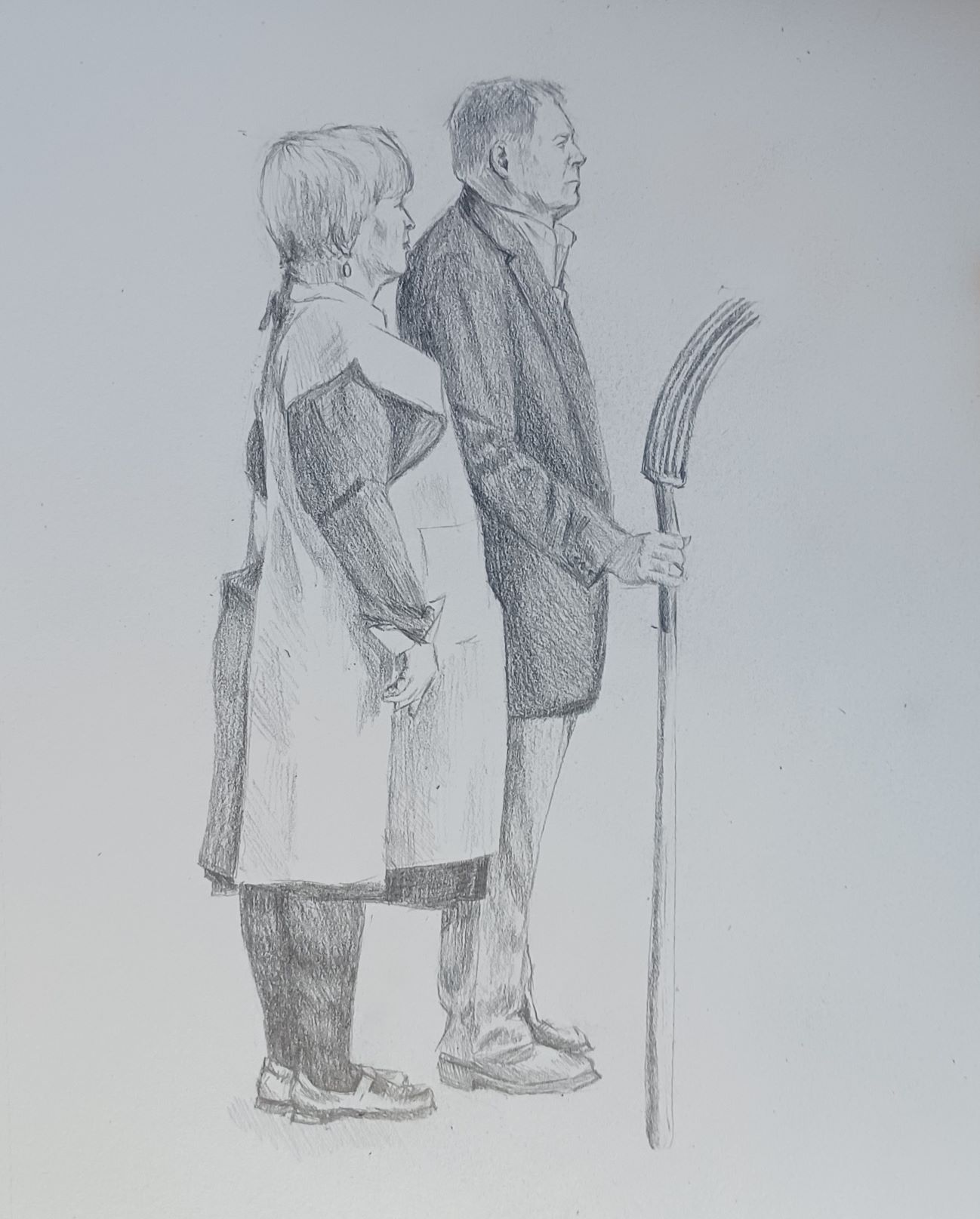 |
Grant Wood, 1891-1942. Wood was inspired to paint what is now known as the American Gothic House in Eldon, Iowa, along with "the kind of people [he] fancied should live in that house". It depicts a farmer standing beside his daughter – often mistakenly assumed to be his wife. The figures were modeled by Wood's sister Nan Wood Graham and their dentist Dr. Byron McKeeby. |
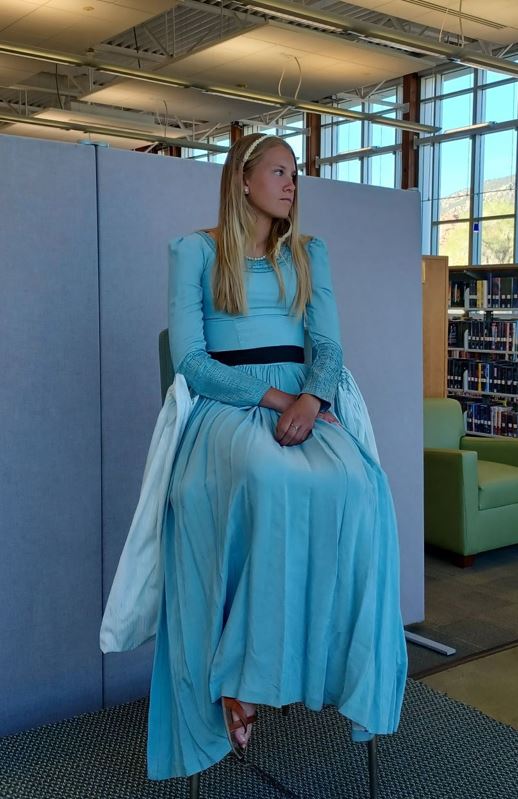 |
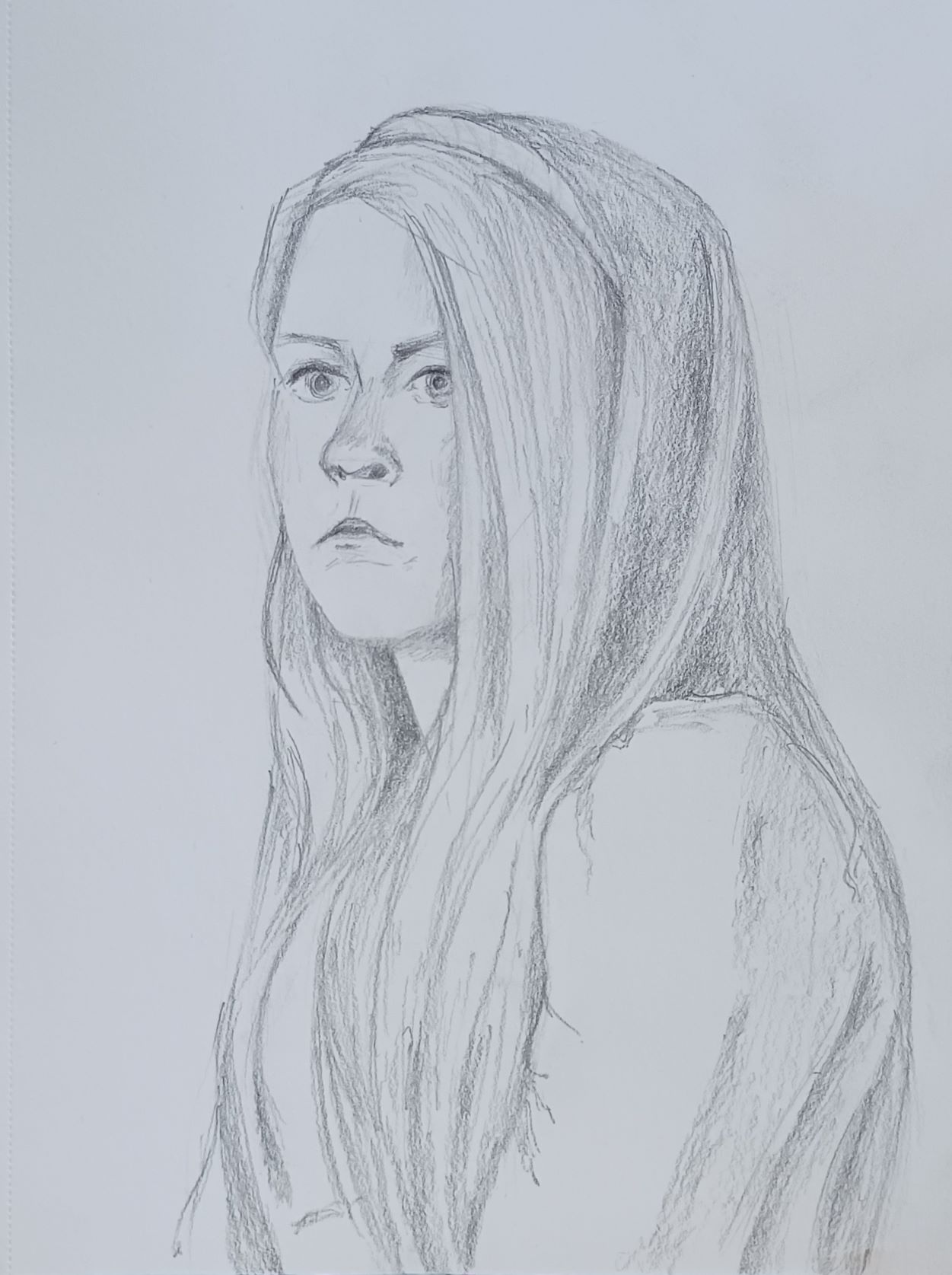 |
John William Waterhouse, 1849-1917. The Lady of Shalott an 1888 oil-on-canvas painting, is one of John William Waterhouse's most famous works. It depicts a scene from Alfred, Lord Tennyson's poem in which the poet describes the plight and the predicament of a young woman, loosely based on the figure of Elaine of Astolat from medieval Arthurian legend, who yearned with an unrequited love for the knight Sir Lancelot, isolated under an undisclosed curse in a tower near King Arthur's Camelot. Waterhouse painted three versions of this character, in 1888, 1894 and 1915. |
 |
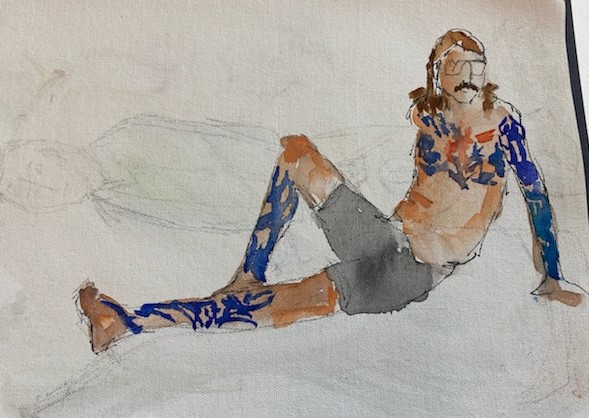 |
Did you know...
There are 21,000 tattoo parlors in US in 2018. |
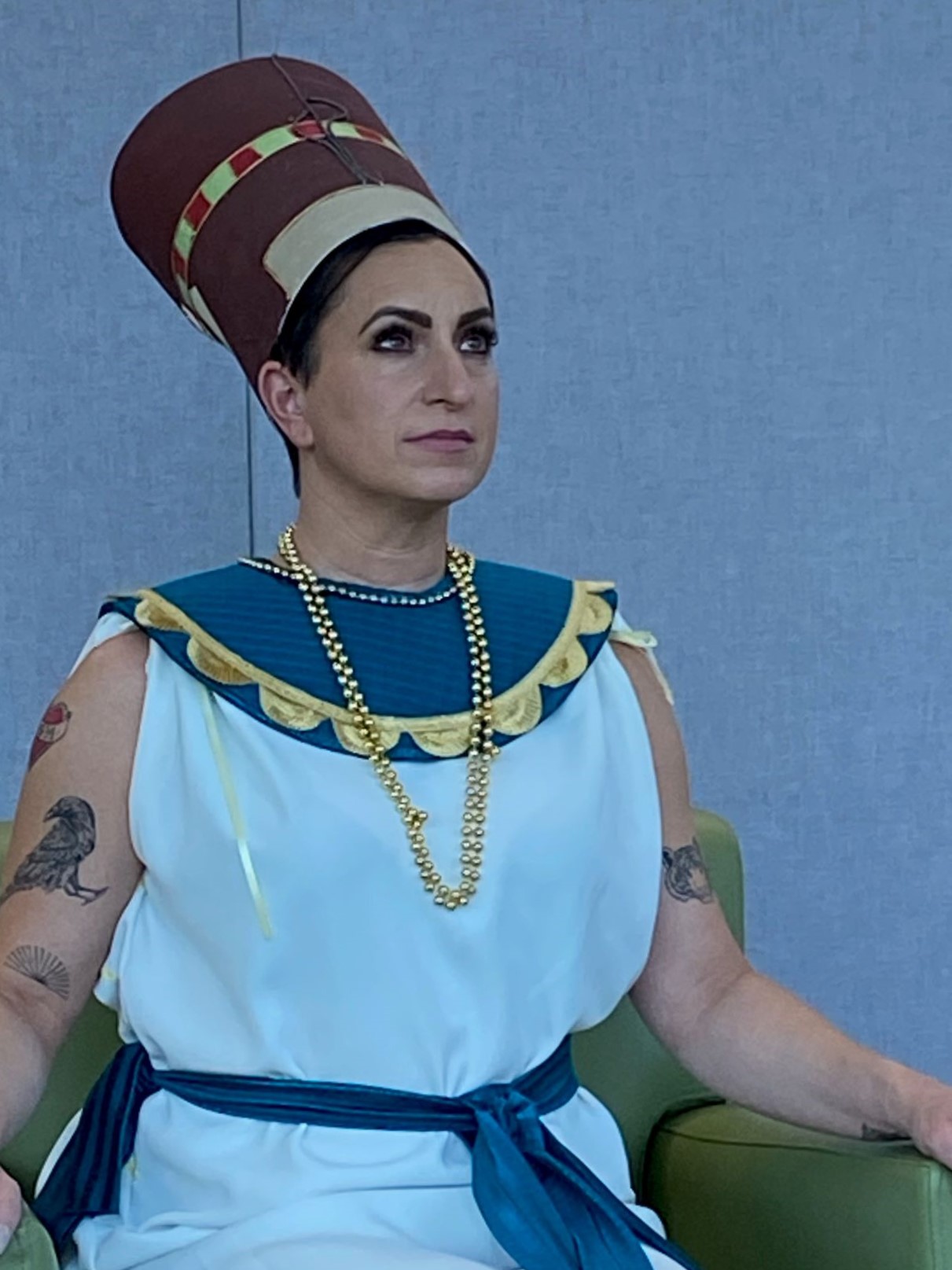 |
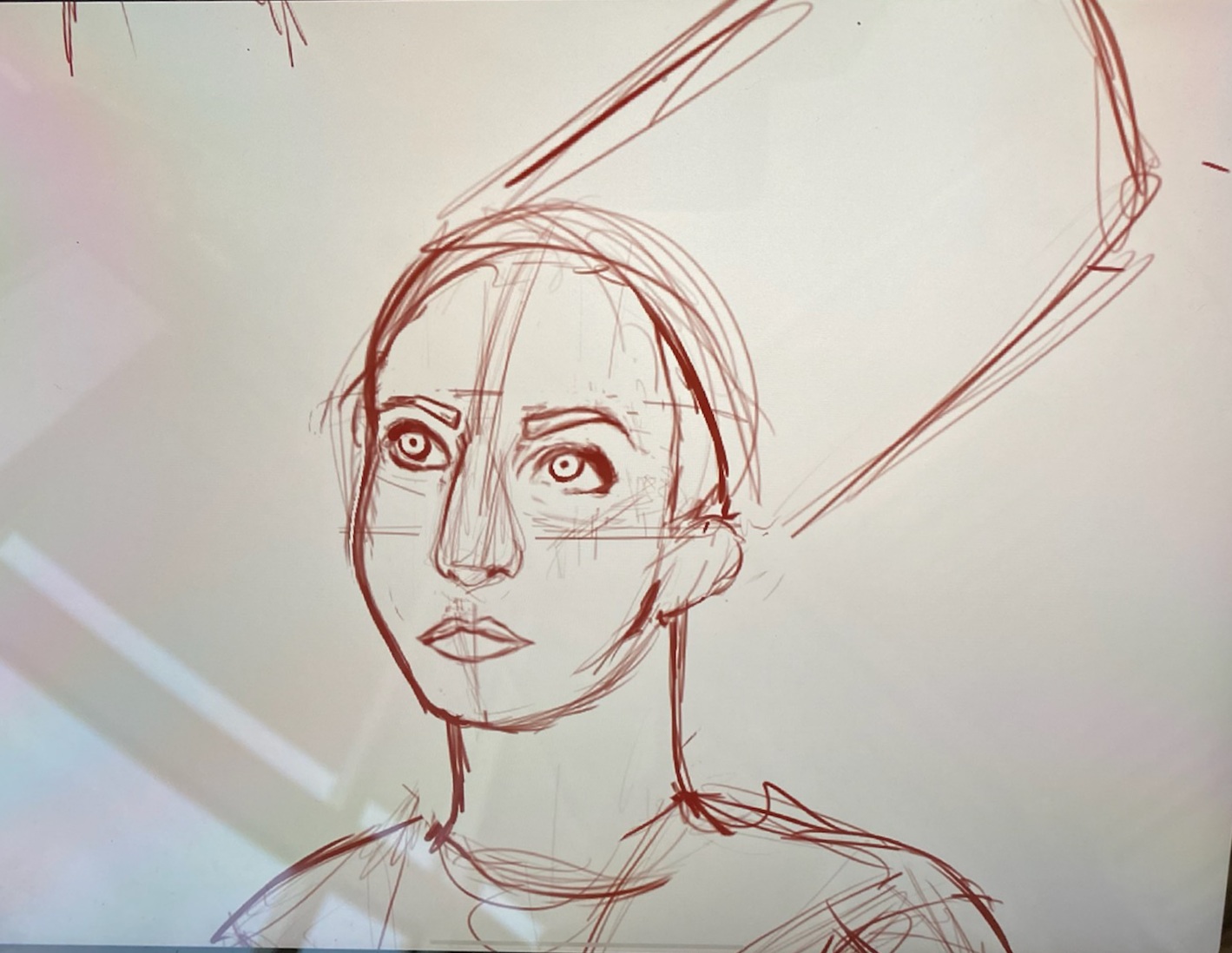 |
Attributed to Thutmose, 14th Century BC. This has been a symbol of feminine beauty since it was first unearthed in 1912 within the ruins of Amarna, the capital city built by the most controversial Pharaoh of Ancient Egyptian history: Akhenaten. Ascending the throne as Amenhotep IV, Akhenaten changed his name as part of his decision to overturn the established pantheon of Egyptian gods to start his own a religion: Some Egyptologists believe she was Tut’s mother. |
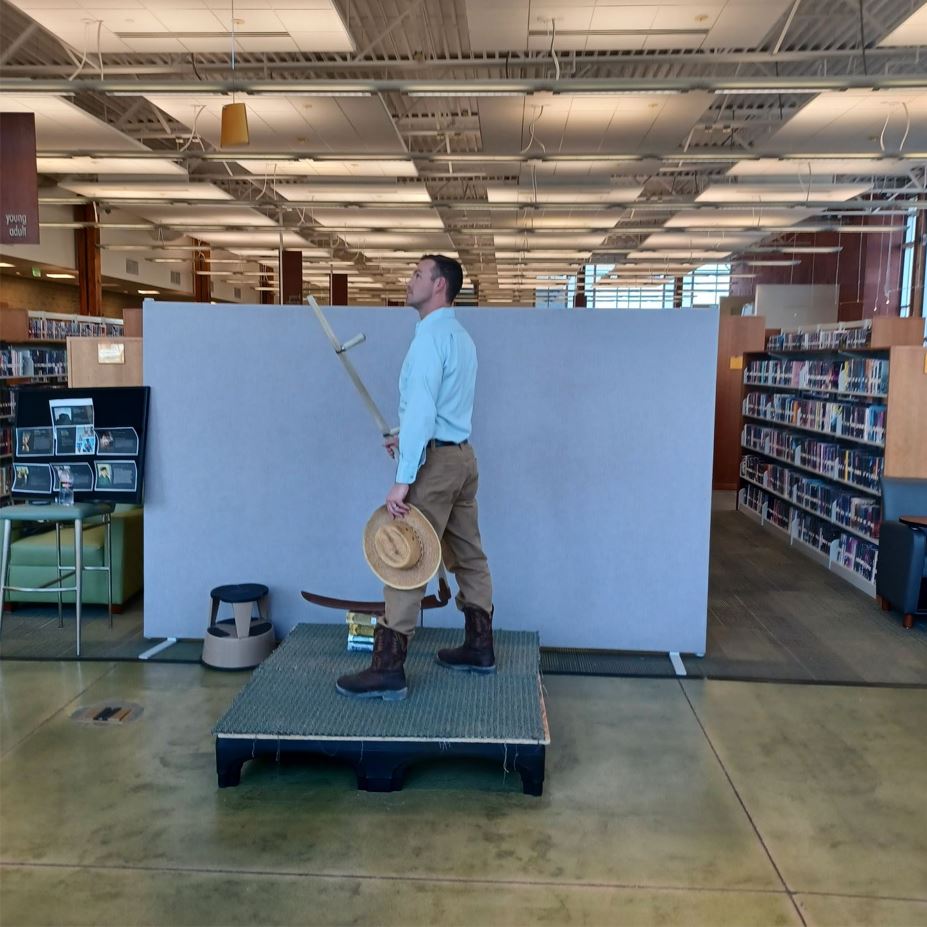 |
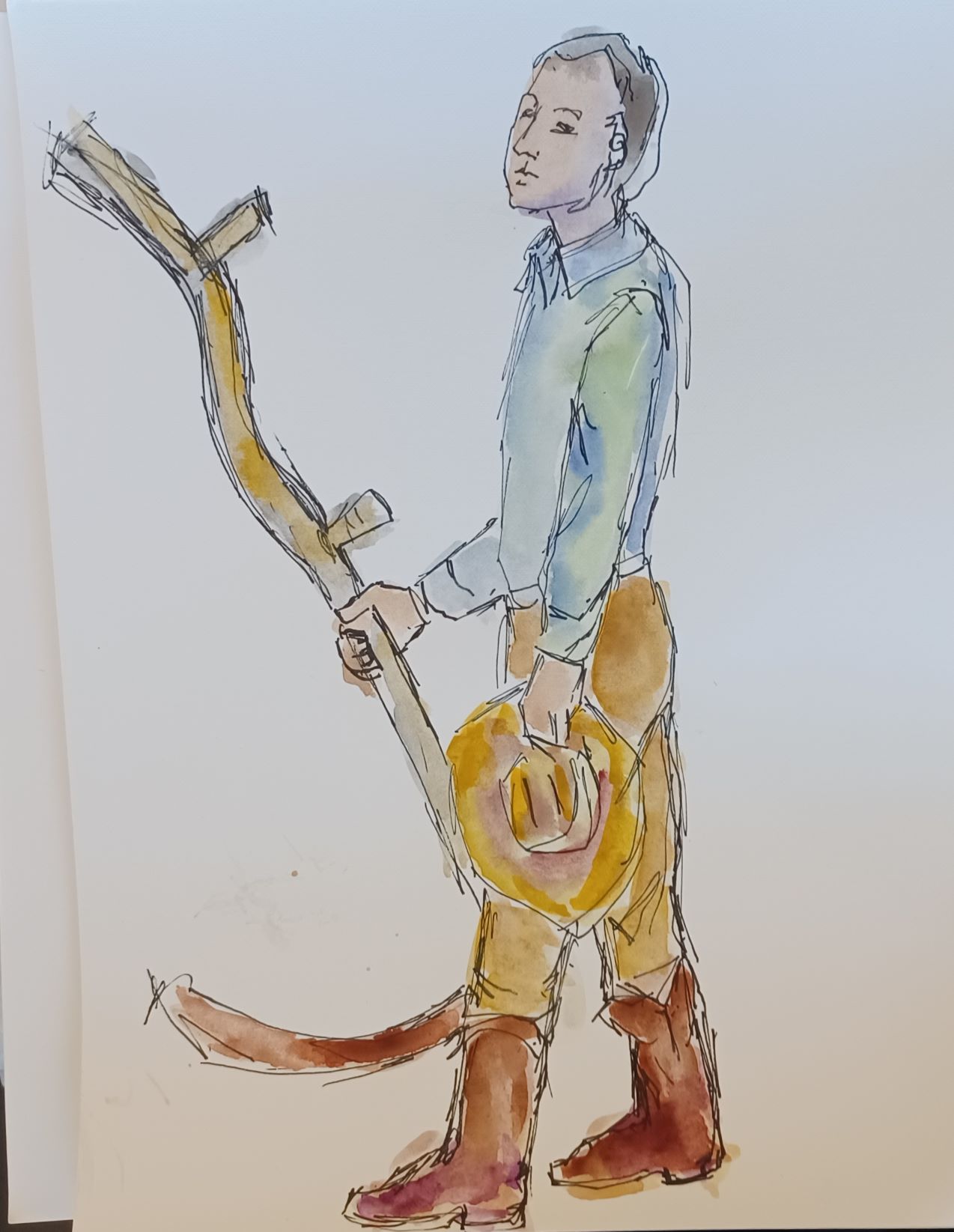 |
Winslow Homer, 1836-1910. This is an oil on canvas painting. A young farmer, holding a scythe, leaves his fields at sunset and is transfixed momentarily by the call of an unseen bird. |
 |
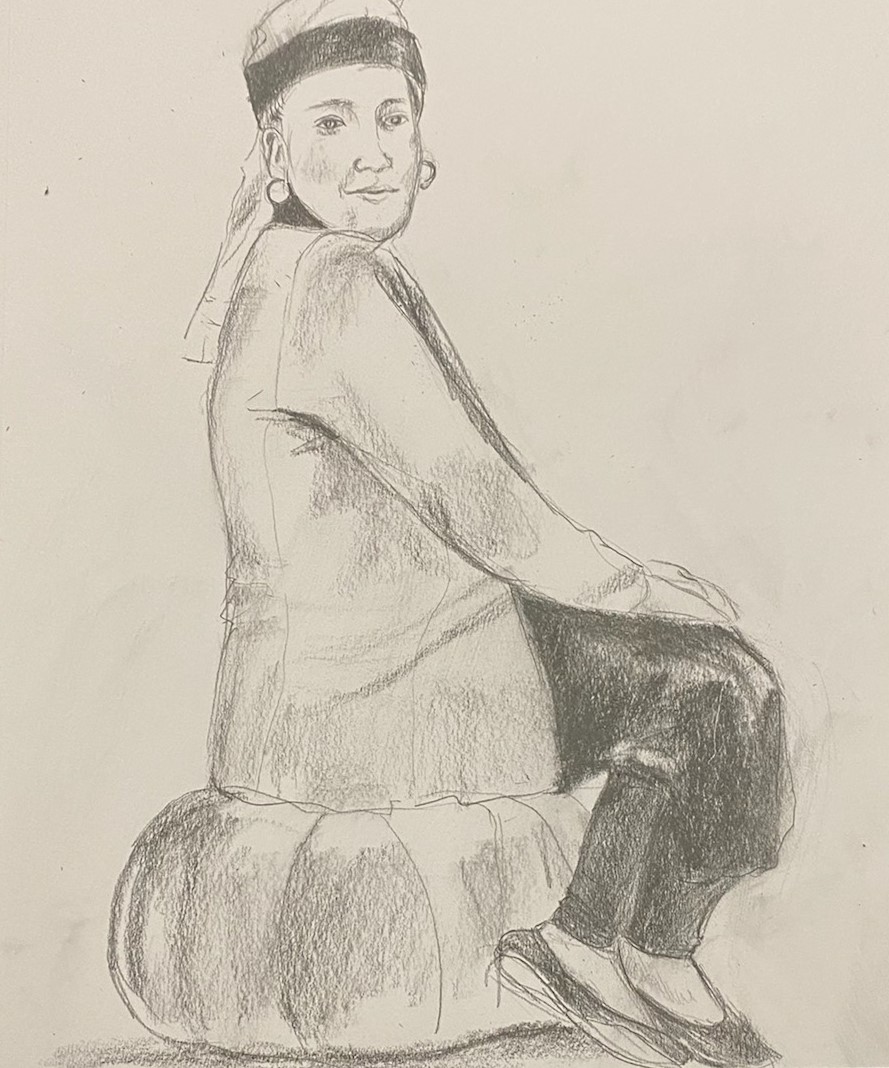 |
Going by various names over the centuries, it became known by its present title towards the end of the 20th century after the earring worn by the girl portrayed there. The work has been in the collection of the Mauritshuis in The Hague since 1902 and has been the subject of various literary treatments. In 2006, the Dutch public selected it as the most beautiful painting in the Netherlands. It depicts a European girl wearing an exotic dress, an oriental turban, and what was thought to be a very large pearl as an earring. In 2014, Dutch astrophysicist Vincent Icke raised doubts about the material of the earring and argued that it looks more like polished tin than pearl on the grounds of the specular reflection, the pear shape and the large size of the earring. |
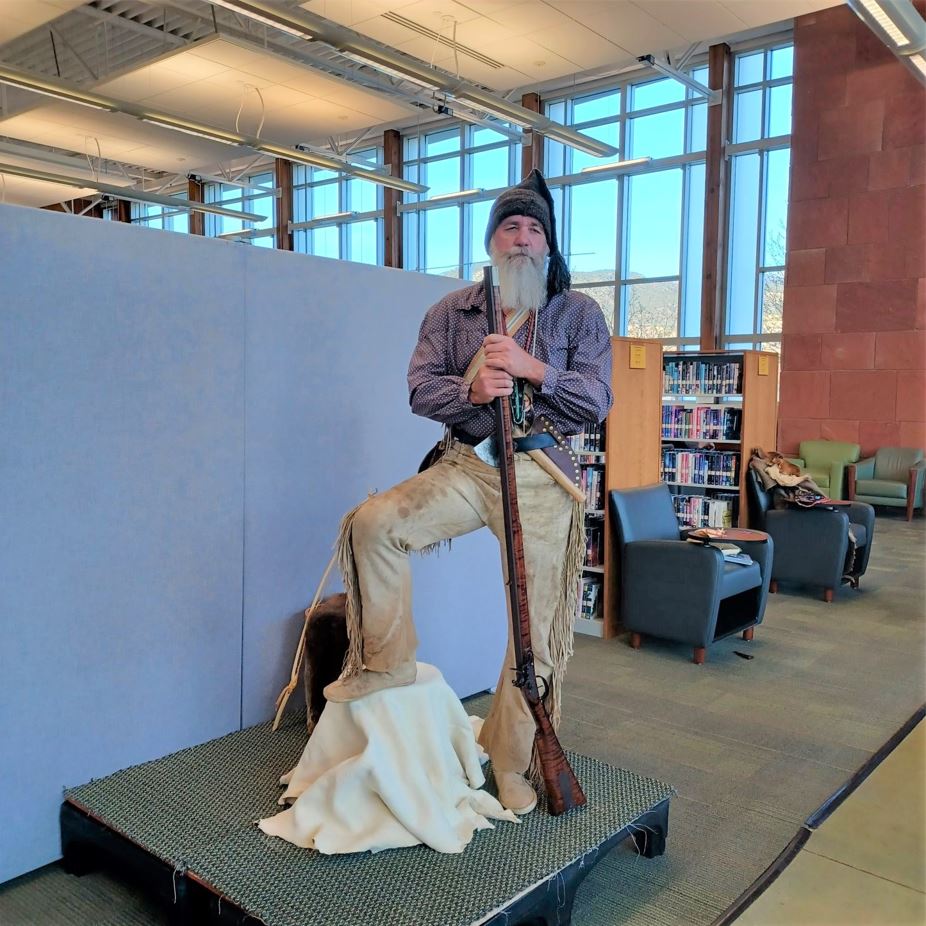 |
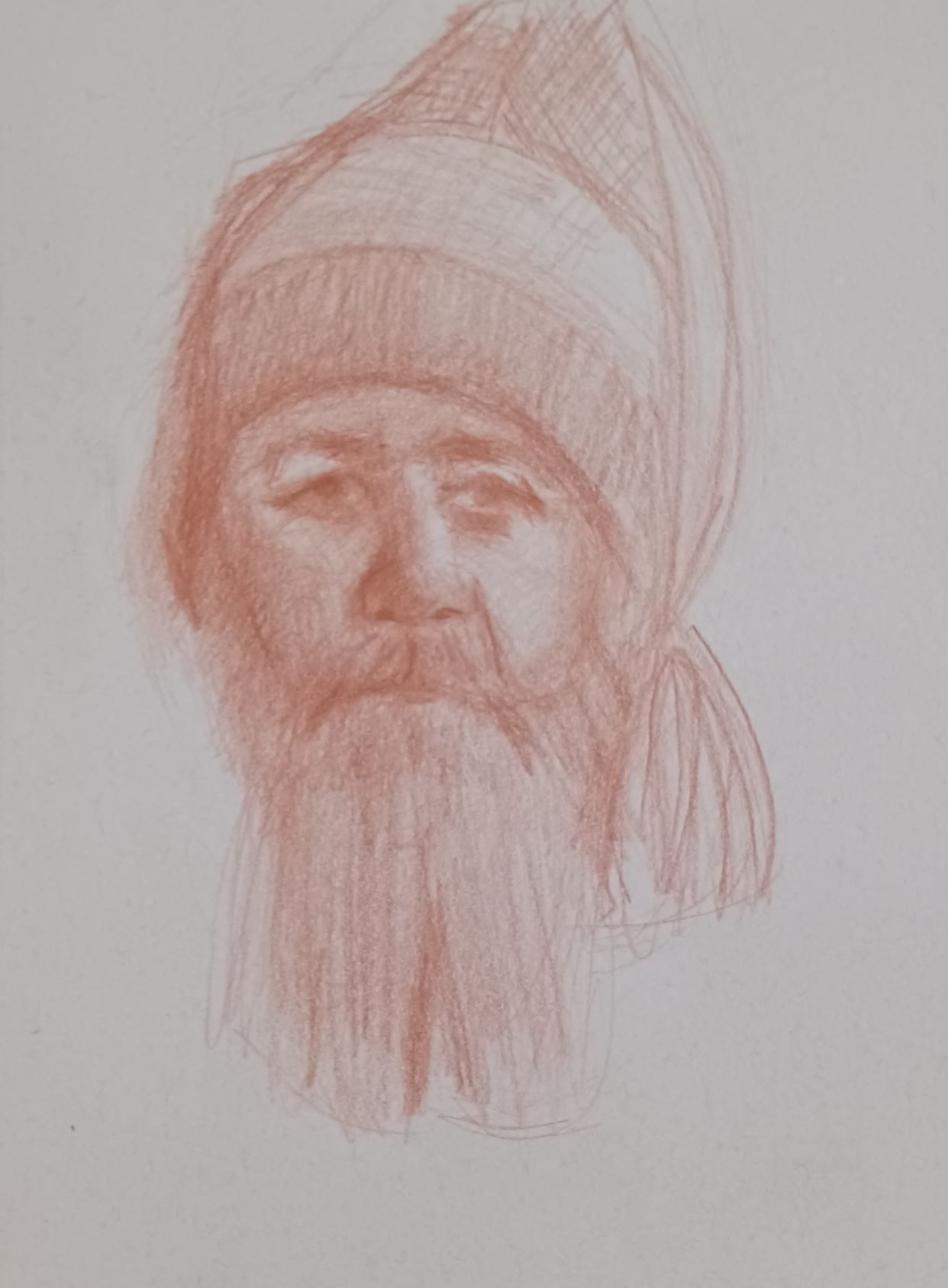 |
Manifest Destiny was a popular belief in the mid-to-late 19th century. Its proponents claimed that the United States had the divine right to expand westward—meaning that U.S. expansion was the will of God. Popular in the decades before the American Civil War, Manifest Destiny was used as a pretext for the United States to acquire land in the Oregon Country, Texas, Mexico, and California, even if the U.S. had to pay large amounts for new land, start a war with neighboring countries, or battle Native Americans who had lived on the land for generations. |
 |
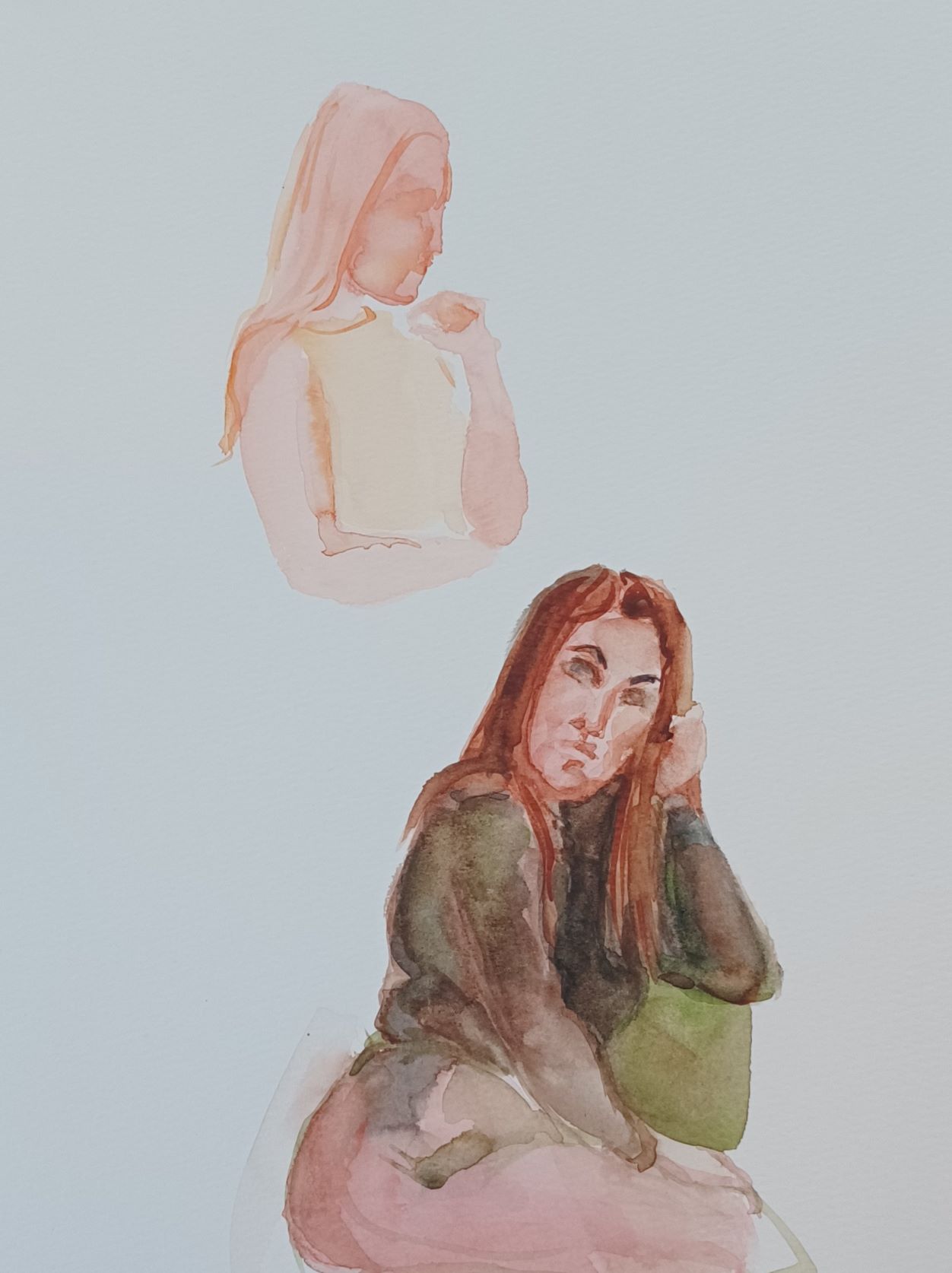 |
Last minute costuming issues prompted the abandonment of the scheduled character: "The Girl," Marilyn Monroe, "The Seven Year Itch." Click here for all images of Emma Mathews. |
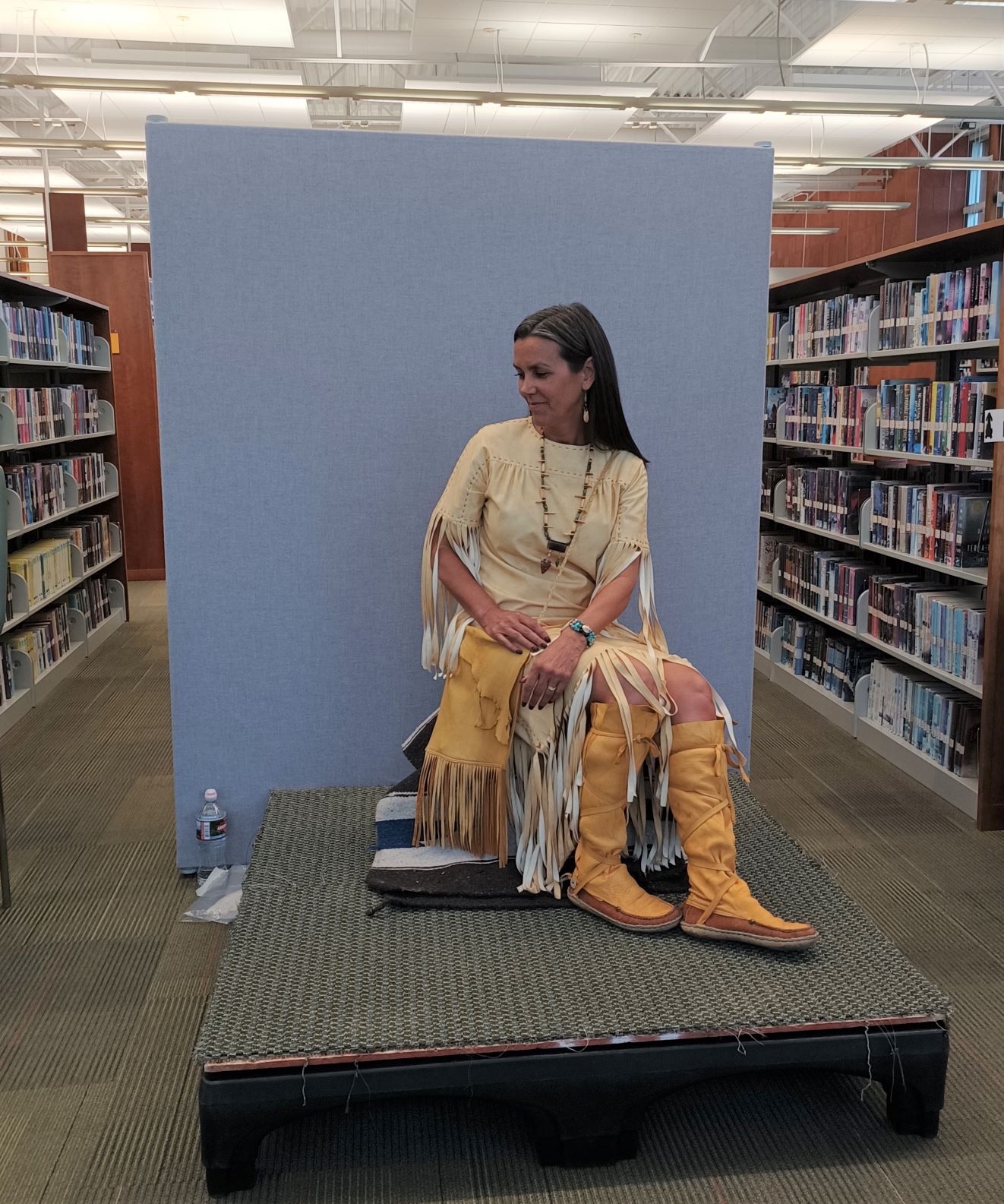 |
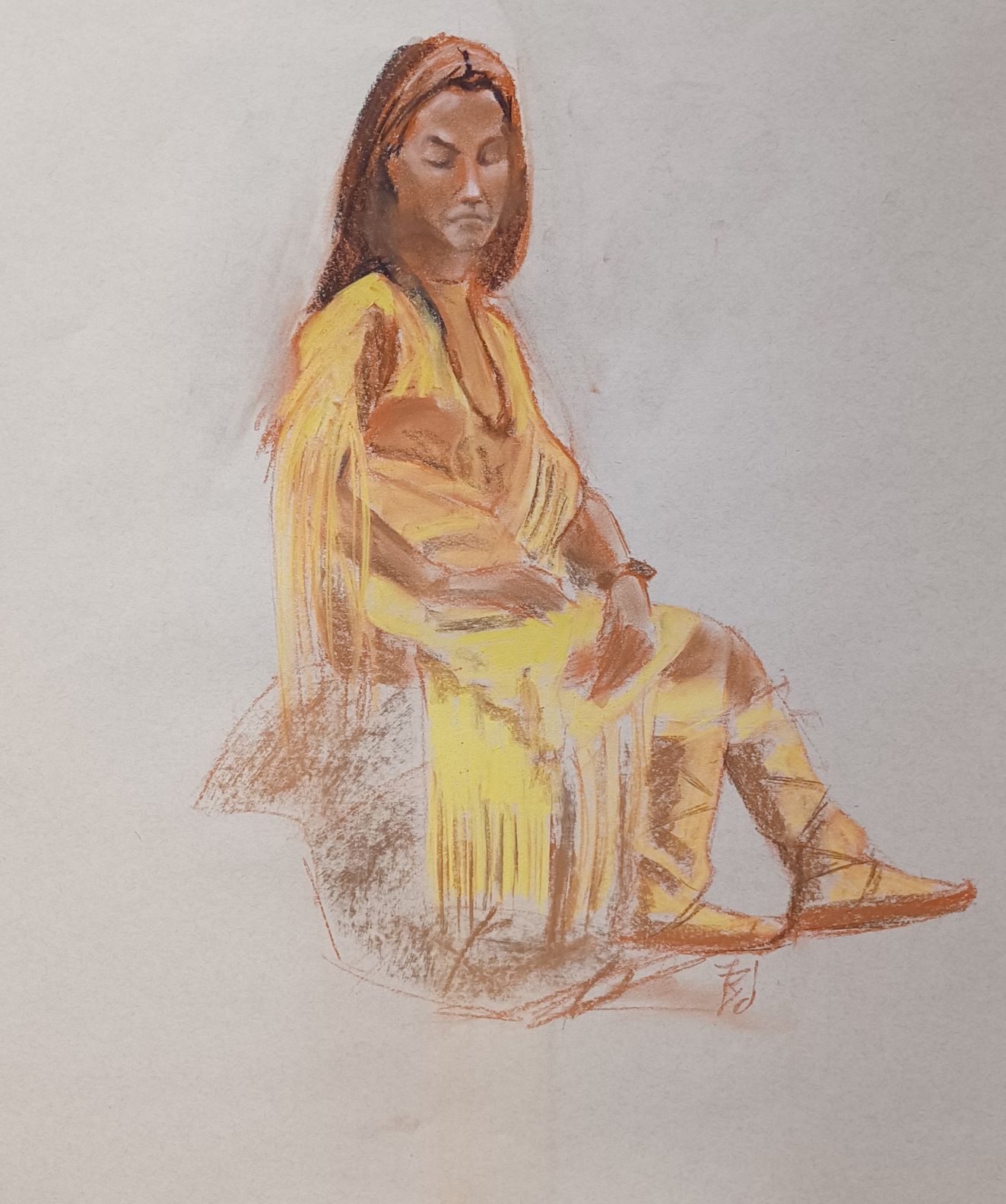 |
Special thanks to Denise for stepping in at the last moment because the originally scheduled model had to cancel. Denise is a direct descendant of Pocahontas. Her family genealogy is displayed in an exhibit at the Smithsonian Institute. The deerskin dress was made by her late mother. The necklace was made by her husband. |
 |
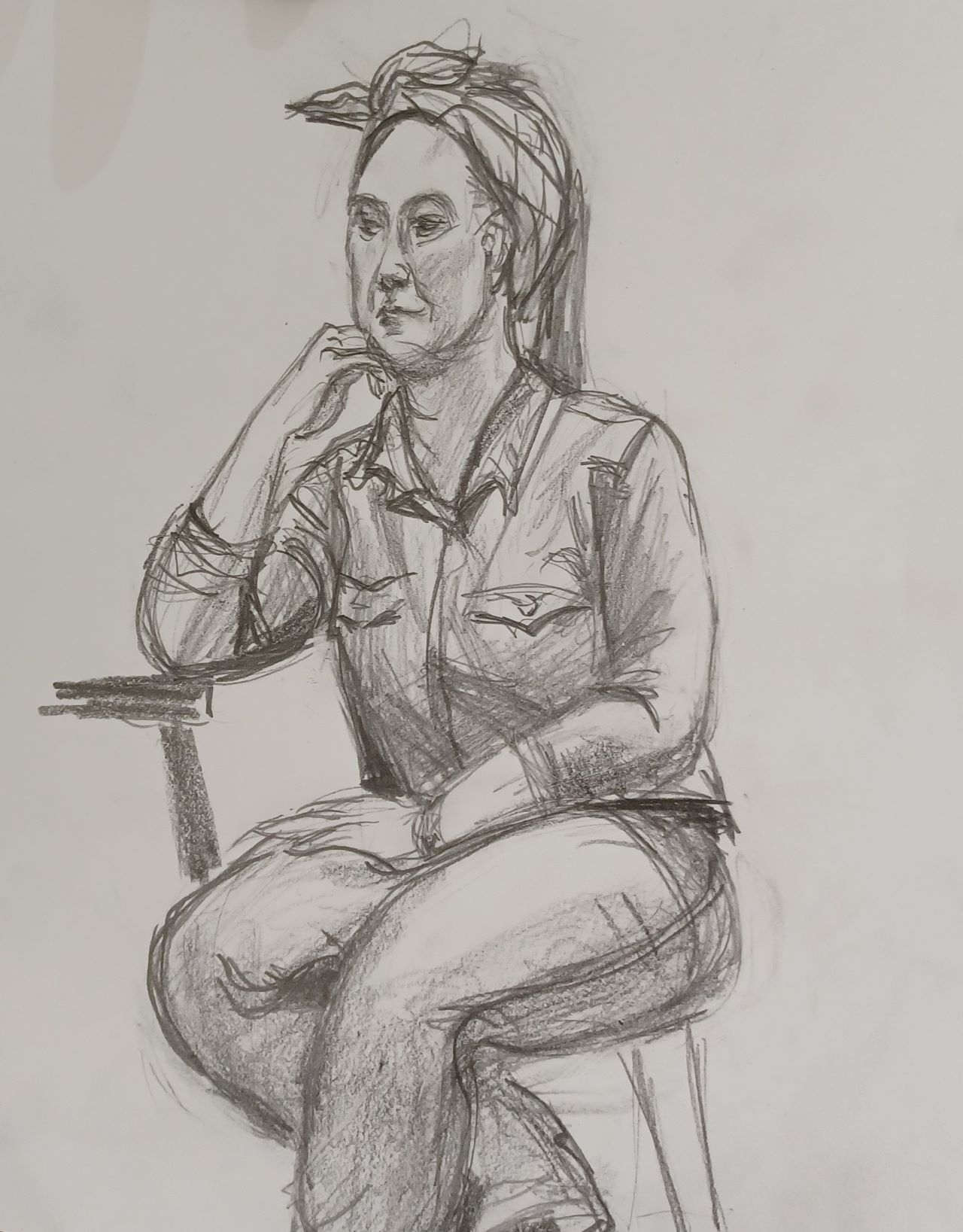 |
Poster Photo by J. Howard Miller, 2018-2004.
|
 |
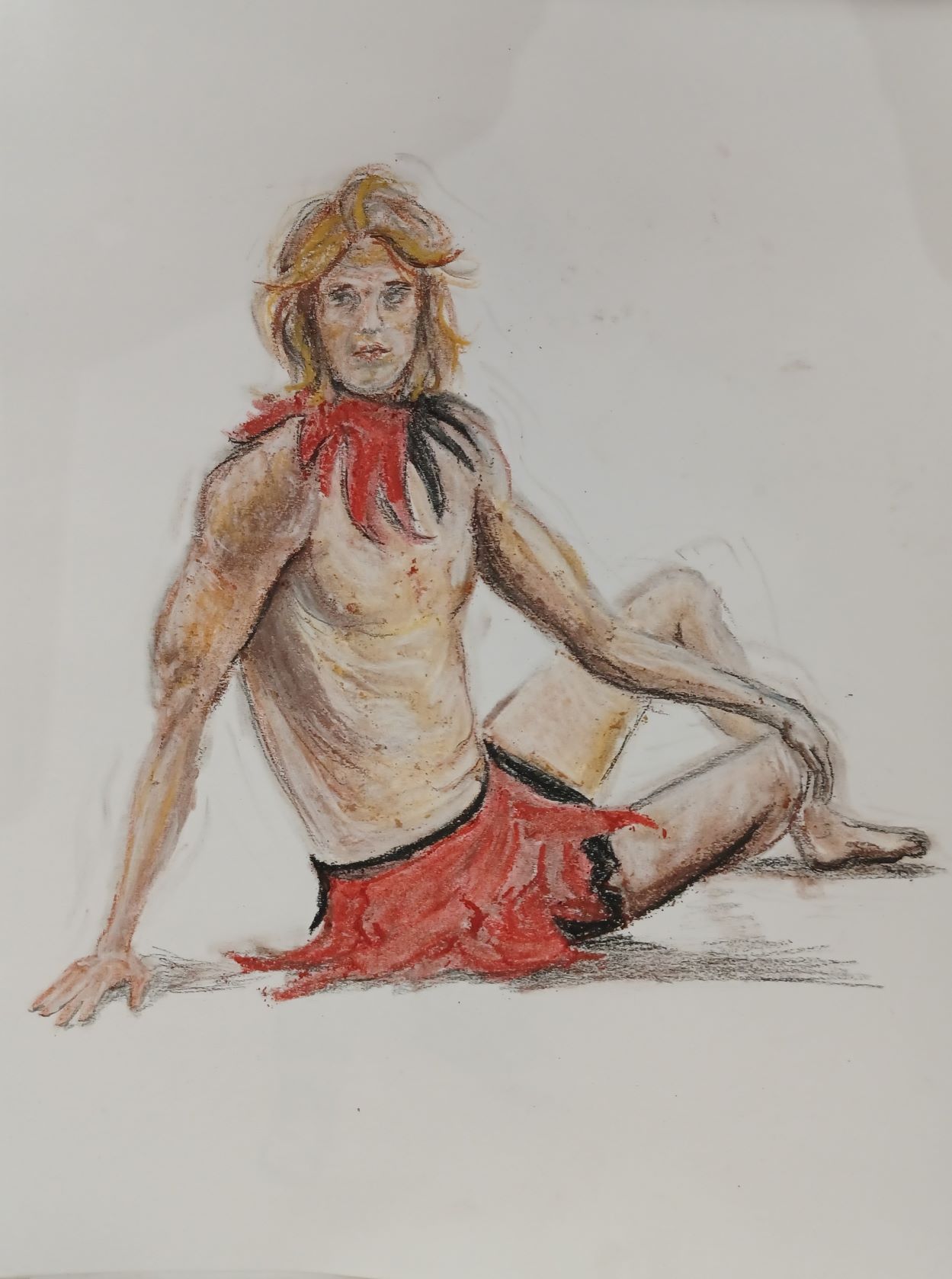 |
Mark Twain: “An American has not seen the United States until he has seen Mardi-Gras in New Orleans.” *Mardi Gras origins can be traced to 17th and 18th medieval Europe. *Celebrated in the New Orleans / Mobile area from 1699 through the early 1700s. *New Orleans was established in 1718 and by the early 1730s, Mardi gras was openly celebrated in New Orleans with elegant society balls. *The earliest reference to a Mardi Gras carnival was in 1781. |
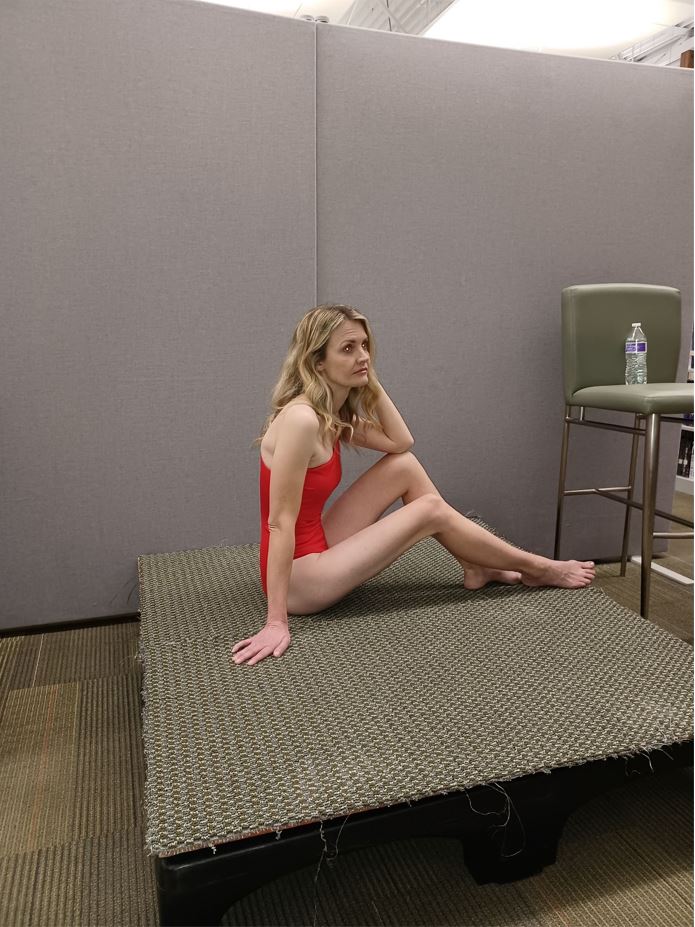 |
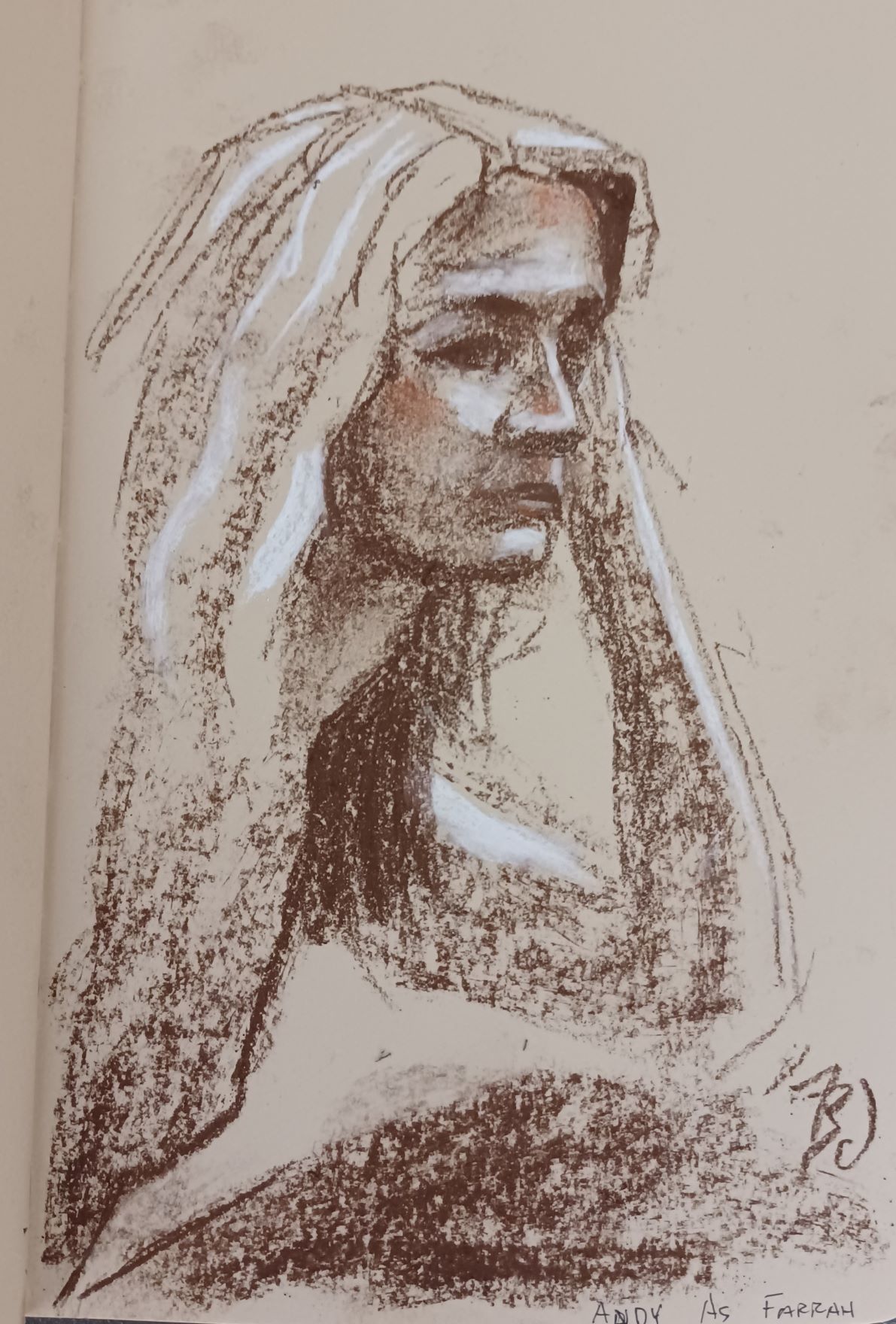 |
For Farrah Fawcett, 1976 was a big year. Besides achieving breakout success on the small screen as one of Charlie's Angels, that was the year her iconic swimsuit poster was released. This pinup poster, which showcased Fawcett's wholesome beauty and sex appeal, would be prominently placed on millions of bedroom and dorm room walls across the United States and around the world. It is considered to be the best-selling poster of all time (a record that's unlikely to be broken now that the internet's around). Twelve million copies of the poster sold. |
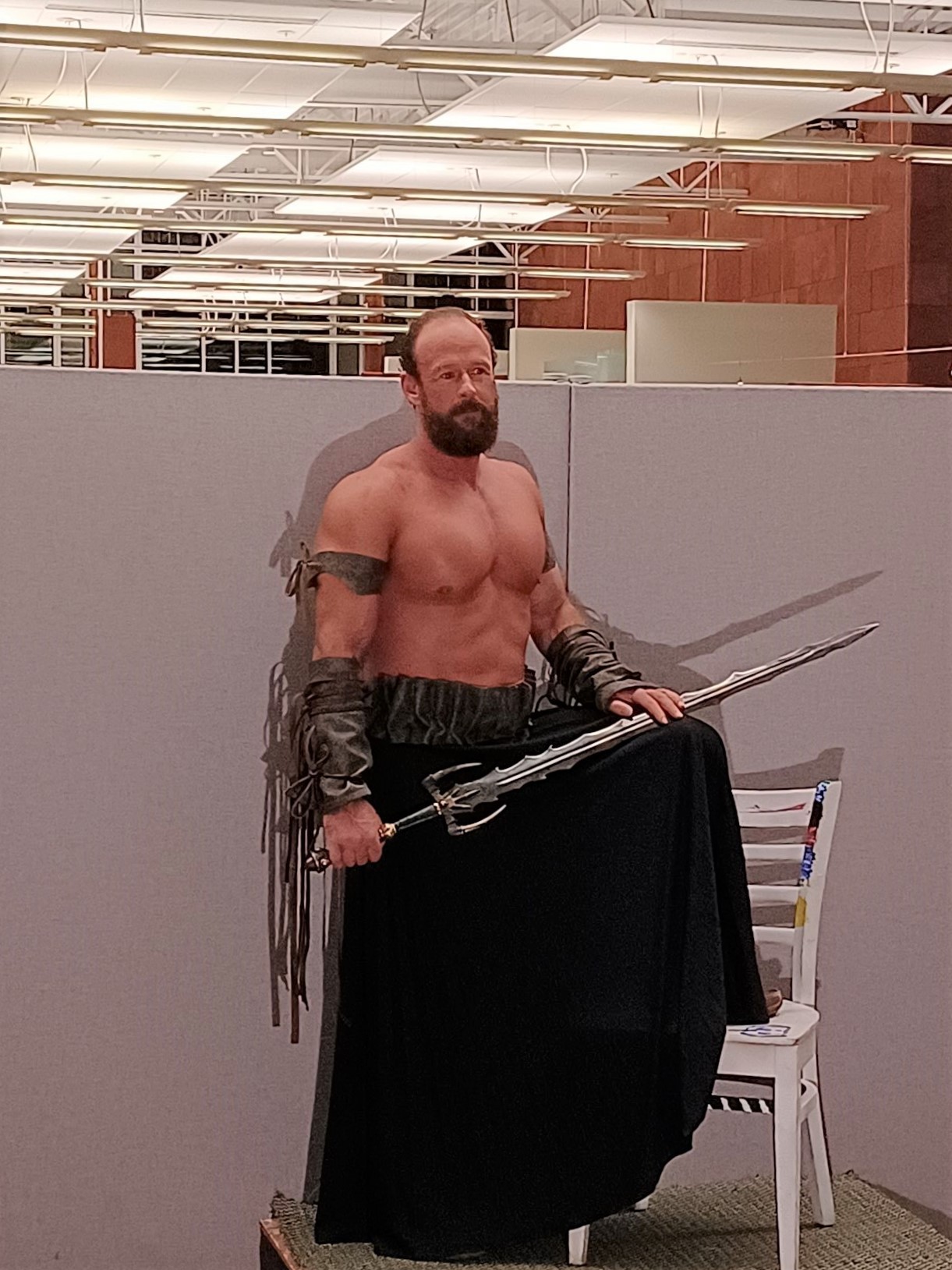 |
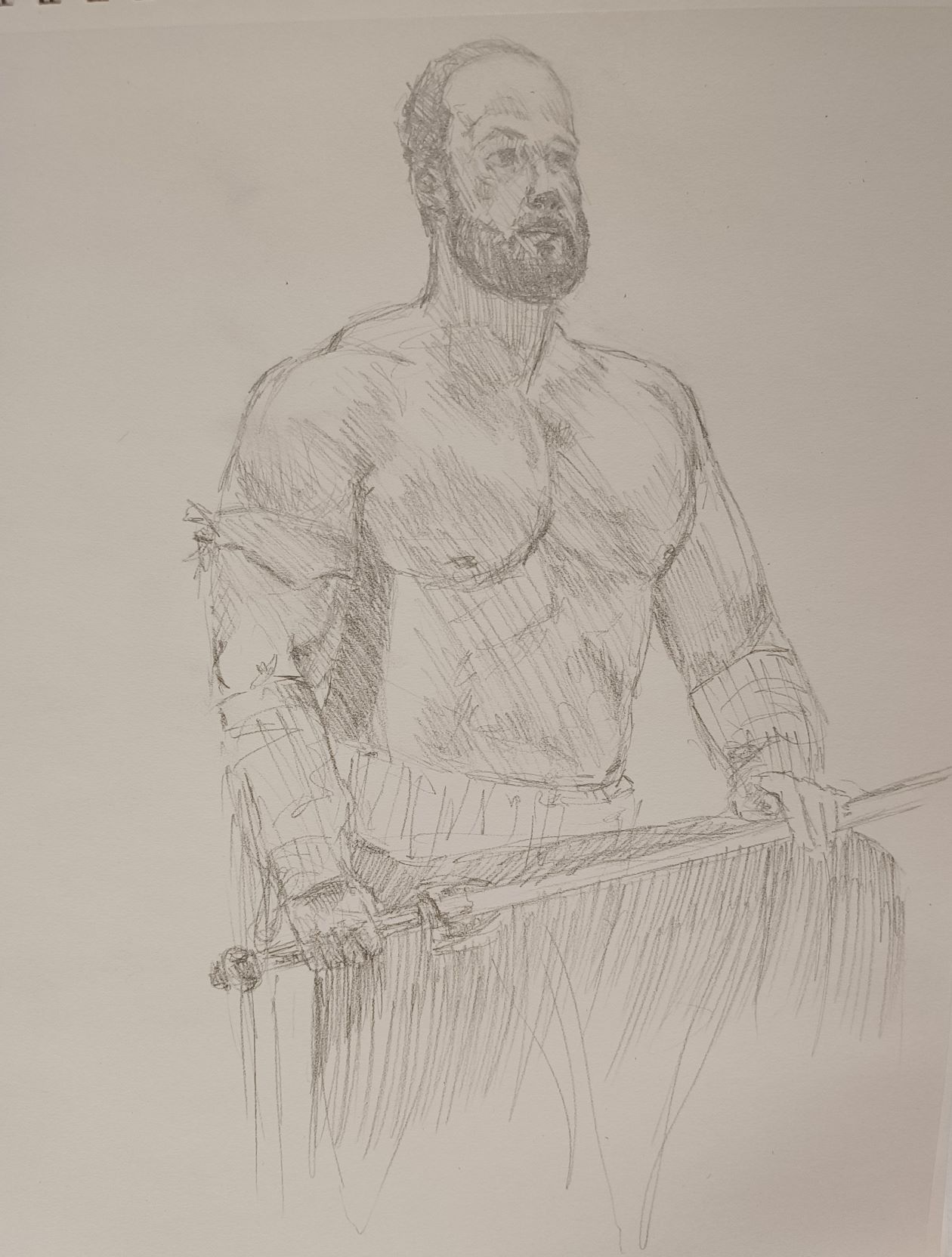 |
An unstable compound of two parts god and one part man, Gilgamesh suffers most from immoderation. He is the greatest of all men, and both his virtues and his flaws are outsized. He is the fiercest of warriors and the most ambitious of builders. Yet until Enkidu, his near equal, arrives to serve as a counterweight to Gilgamesh’s restless energies, he exhausts his subjects with ceaseless battle, forced labor, and arbitrary exercises of power. |
 |
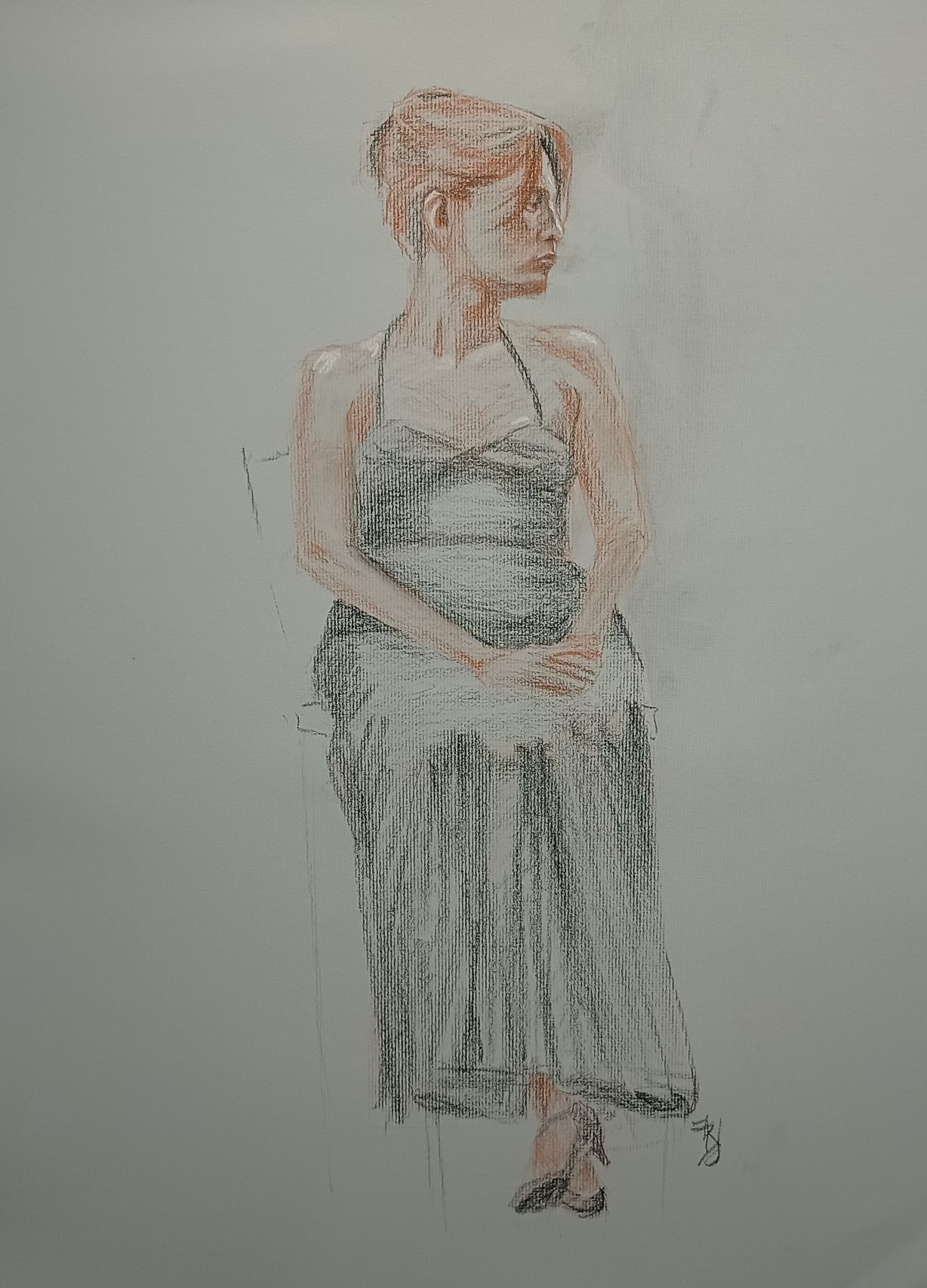 |
Hoping for fame and a kick-start to his painting career, John Singer Sargent got what he wanted, but not in the way in which he’d imagined. The model, high-society beauty Virginie Gautreau, was chosen and posed carefully to get the image for which he was looking. Her forward-facing posture showed assertiveness with a hint of retreat, shown by her head turned in a profile. Her low-cut, revealing dress was not looked too kindly upon by the public when the painting was released at an exhibition. Ms. Gautreau retired from society, while Sargent repainted portions of the dress, and then left Paris to continue his career. |
 |
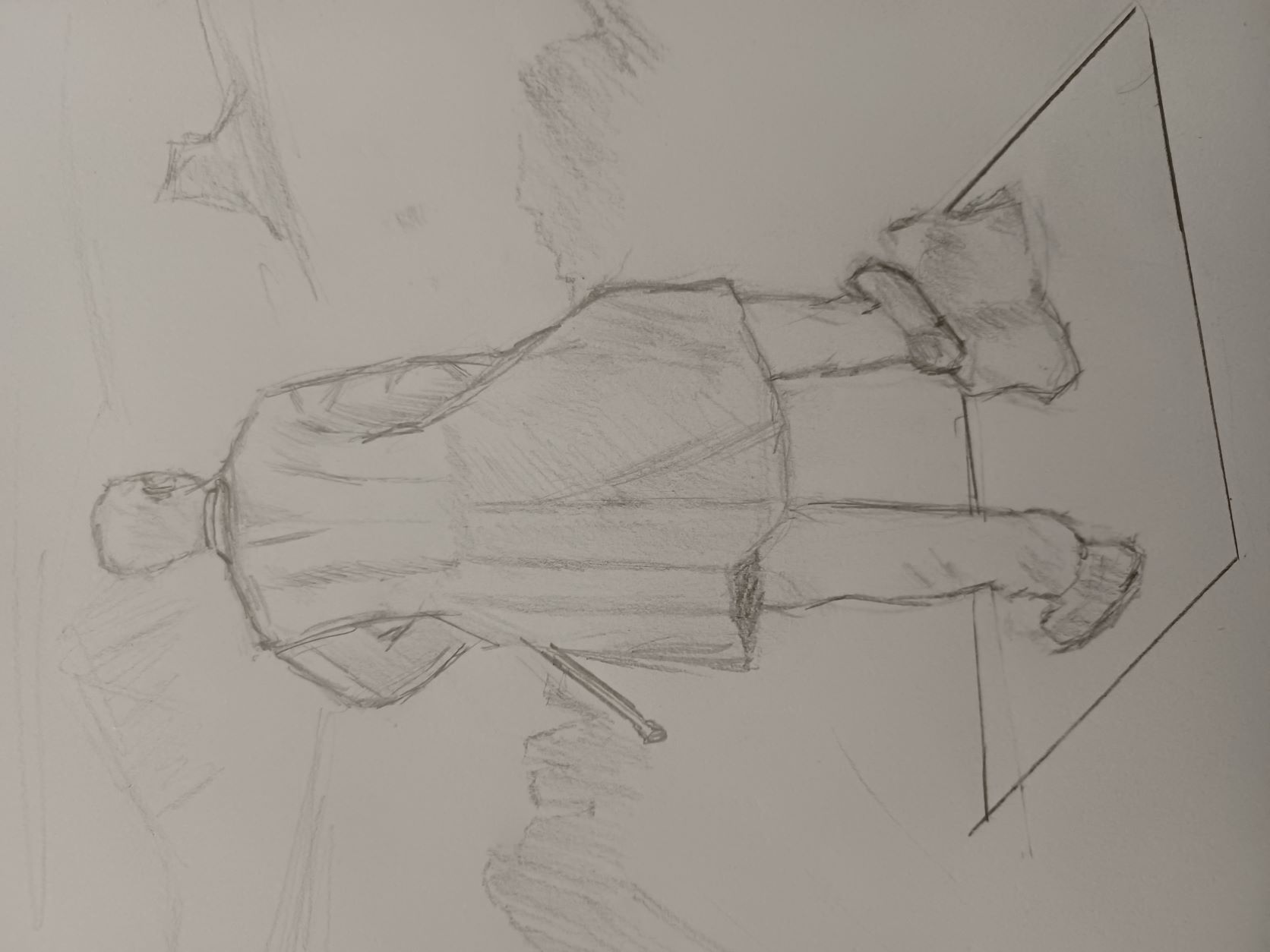 |
The worship of nature, or more precisely, the feeling of awe it inspired, was a signature of the Romantic style in art, and there is no better example on that score than this image of a hiker in the mountains, pausing on a rocky outcrop to take in his surroundings. His back is turned towards the viewer as if he were too enthralled with the landscape to turn around, but his pose offers a kind of over-the-shoulder view that draws us into vista as if we were seeing it through his eyes. |
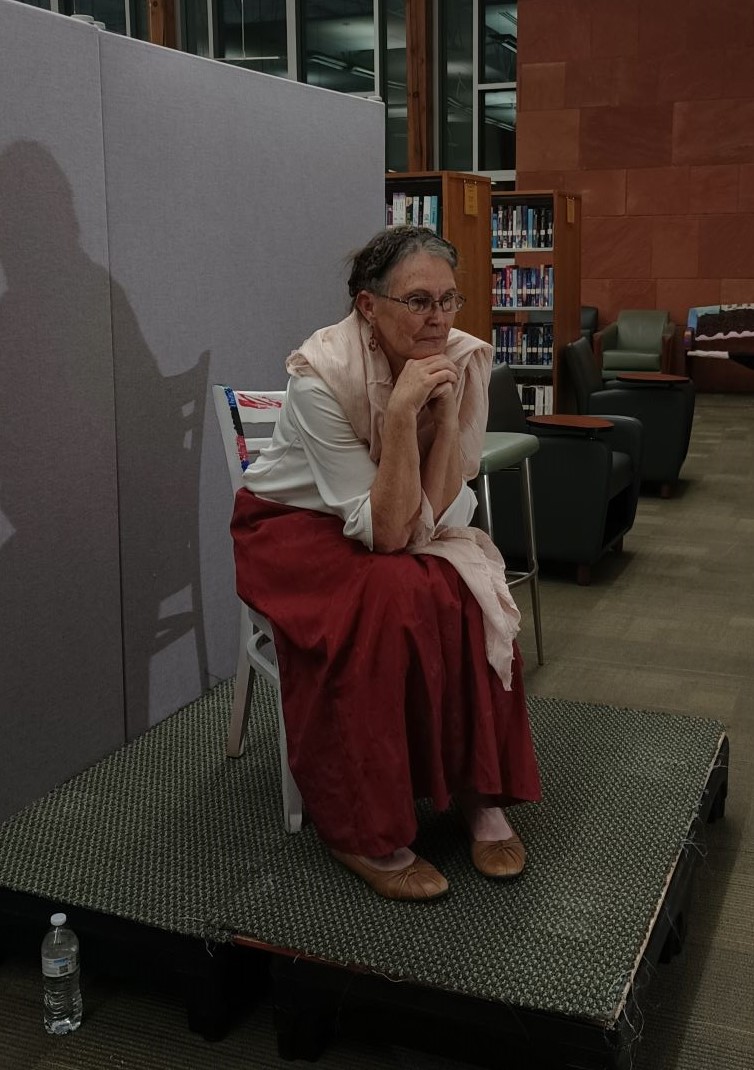 |
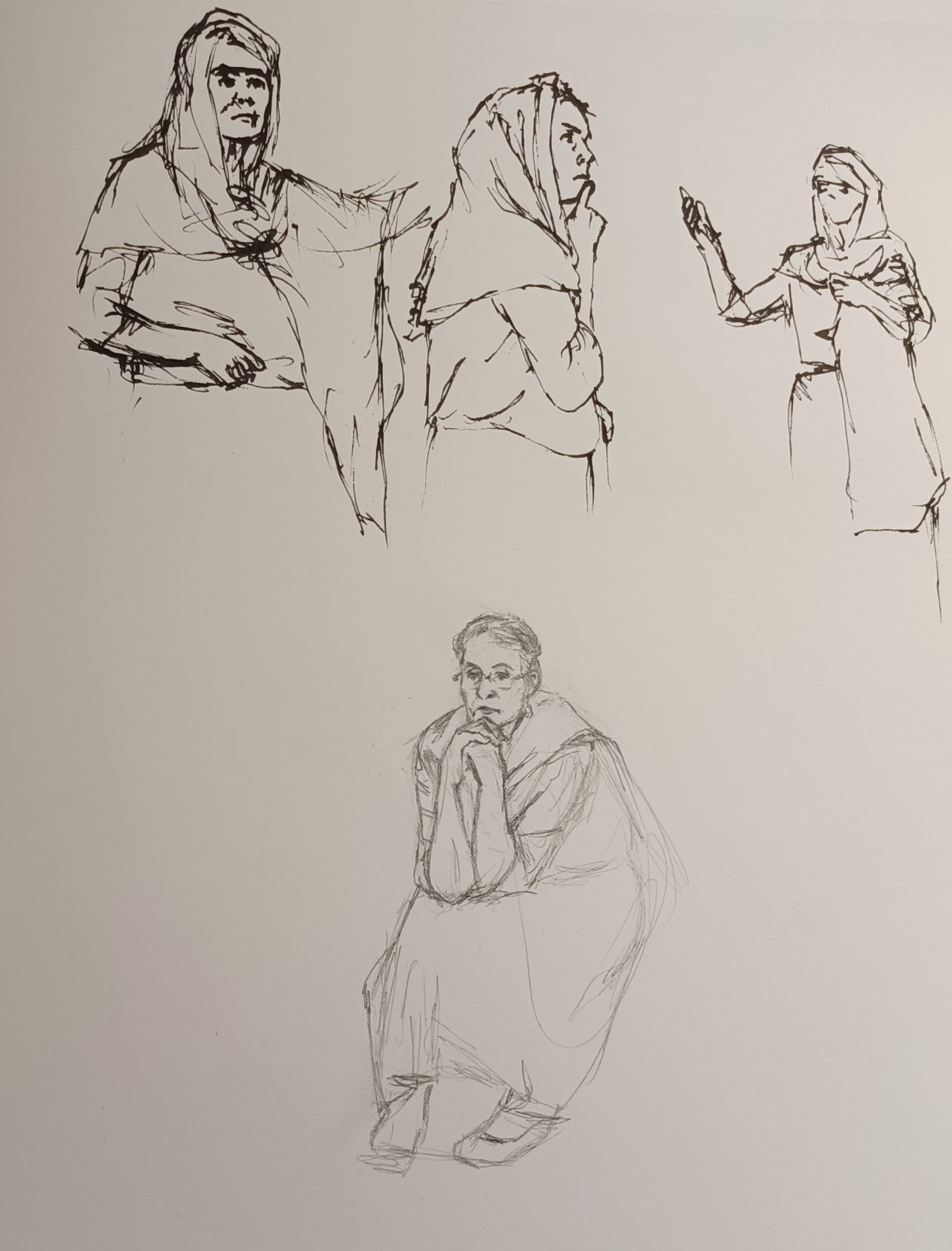 |
Frida Kahlo, 1907-1954.
|
 |
.jpg) |
Frederic Remington, 1861-1909.
|
 |
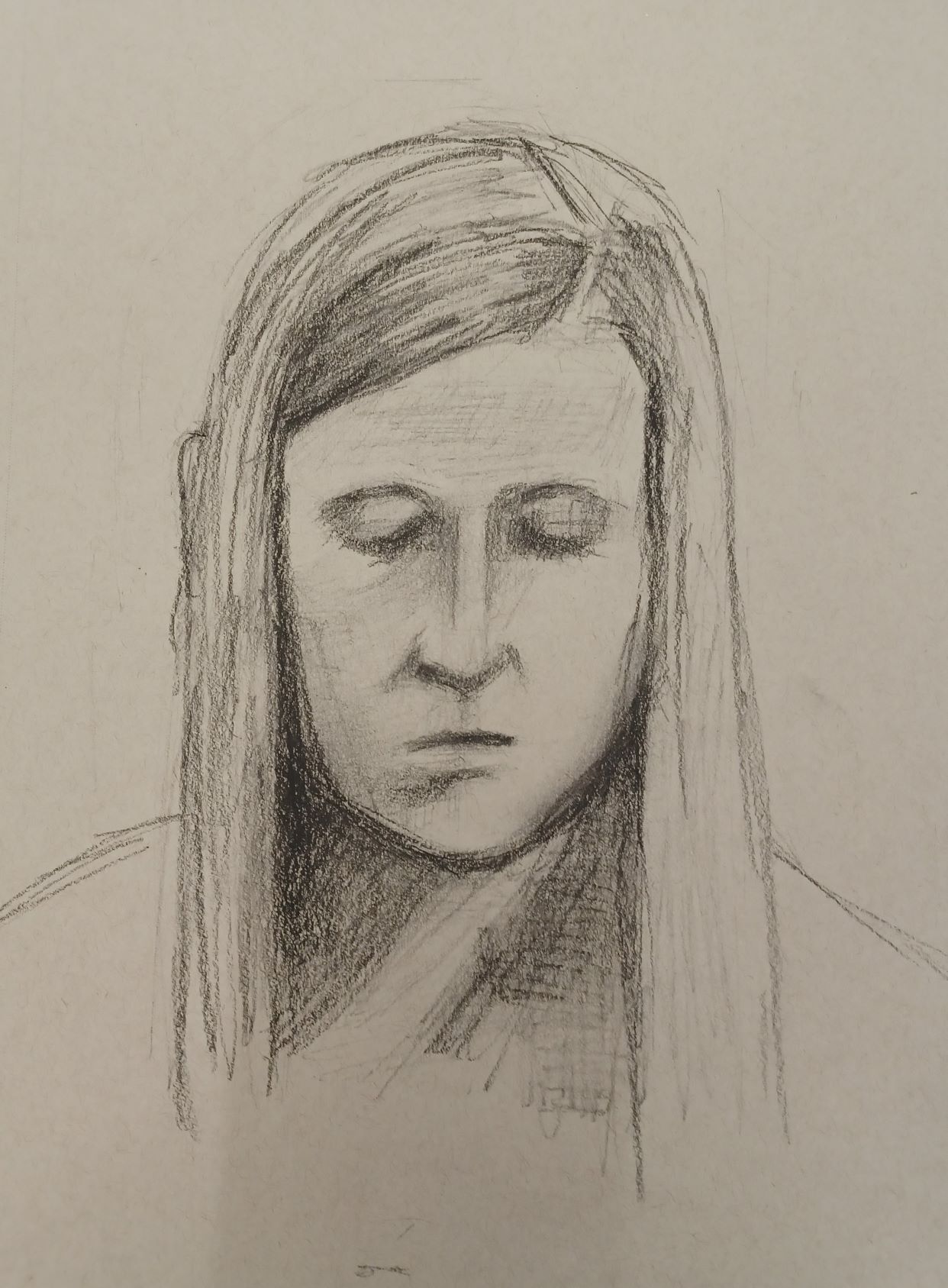 |
Woodstock was a music festival held August 15–18, 1969, on Max Yasgur's dairy farm in Bethel, New York. Billed as "an Aquarian Exposition: 3 Days of Peace & Music" and alternatively referred to as the Woodstock Rock Festival, it attracted an audience of more than 400,000. Thirty-two acts performed outdoors despite sporadic rain. The festival has become widely regarded as a pivotal moment in popular music history as well as a defining event for the counterculture generation. |
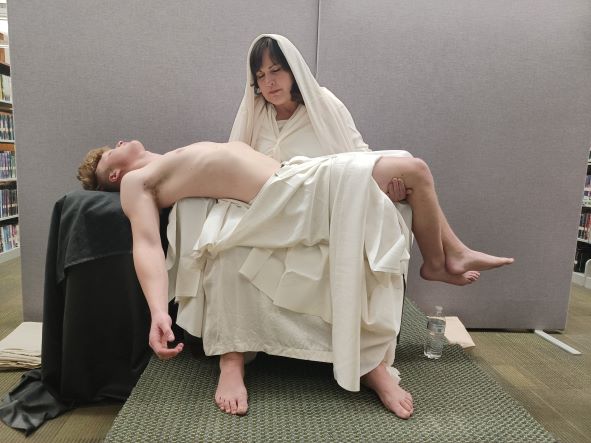 |
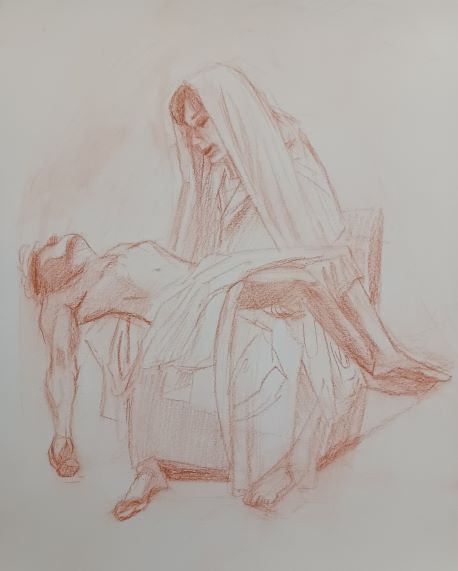 |
The Pietà (“the Pity,” 1498–1499) is a work of Renaissance sculpture by Michelangelo Buonarroti, housed in St. Peter's Basilica, Vatican City. It is the first of several works of the same theme by the artist. The statue was commissioned for the French Cardinal Jean de Bilhères. This famous work of art depicts the body of Jesus on the lap of his mother Mary after the Crucifixion. It is an important work as it balances the Renaissance ideals of classical beauty with naturalism. |

